People often ask us: What is the best country that you’ve travelled to? And, while it competes some top-notch destinations, China sits right at the top of that pile. Yes, it can be very tough to navigate but exploring China is 100% worth the effort, as one of the most incredible countries to visit in the world. After spending a month discovering the best corners of this fascinating country, we’ve boiled it down to this list of absolute must-dos; our perfect 2 weeks China itinerary.
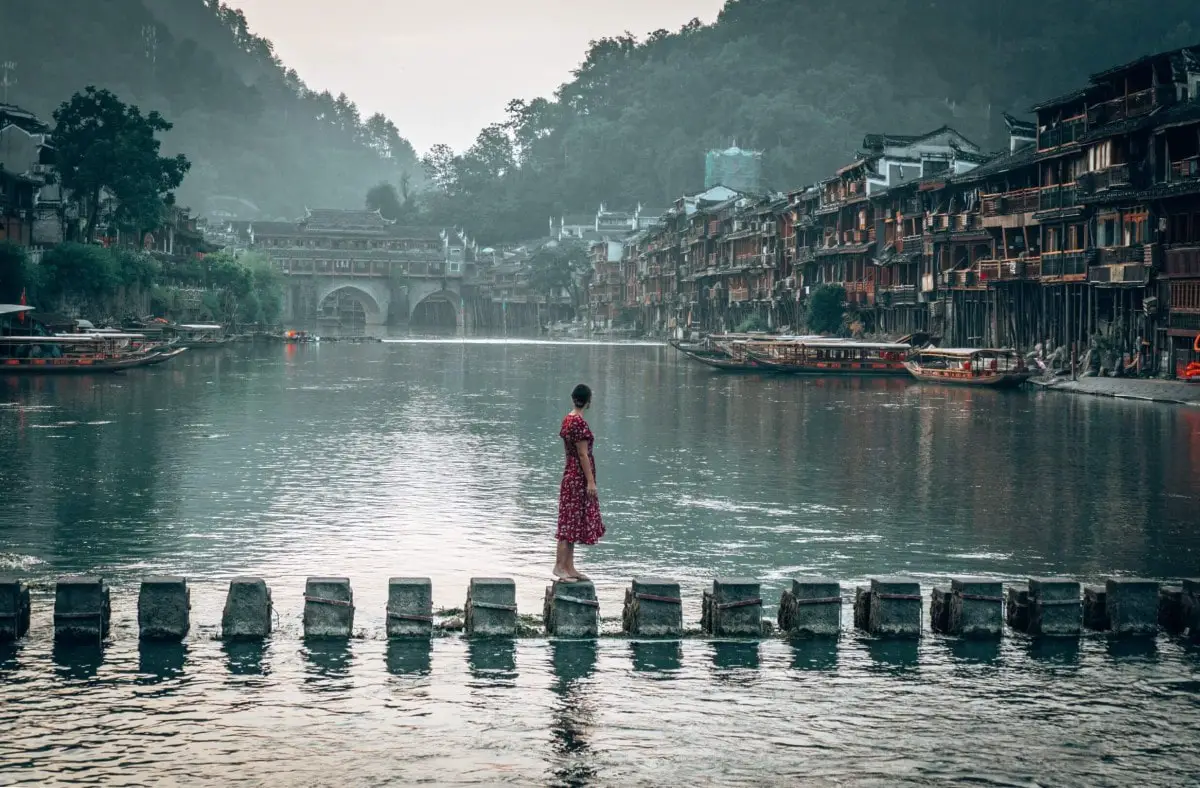
But, before we get started, it’s worth mentioning what to expect, and to dispel some of the many rumours that we heard from others.
Before we arrived into China we had been told many cautionary tales about how China was dirty and unhygienic, the Chinese were unfriendly to foreigners, the food wasn’t good and most of all, it’s impossible to get around if you don’t understand Mandarin or Cantonese.
So, although we did experience many unusual and – to us – foreign things, and although at times it was a little difficult to get around , China was the most rewarding country we’ve ever been to and more than we could have ever expected. The locals were incredibly friendly, the country was sparkling clean (like nothing we’ve seen in ANY country before) and we had some great (albeit strange) meals. Suffice to say we are itching to return again one day, and China has left an indelible mark on our hearts.
With all this in mind, we’ve tried to create the below itinerary for people who really don’t know what to expect, for those who aren’t the most experienced travellers, and definitely for those who haven’t been to China before! It’s very, very comprehensive (no shortcuts here), but China is still a tough place to travel and so you’ll want all the background info you can get!
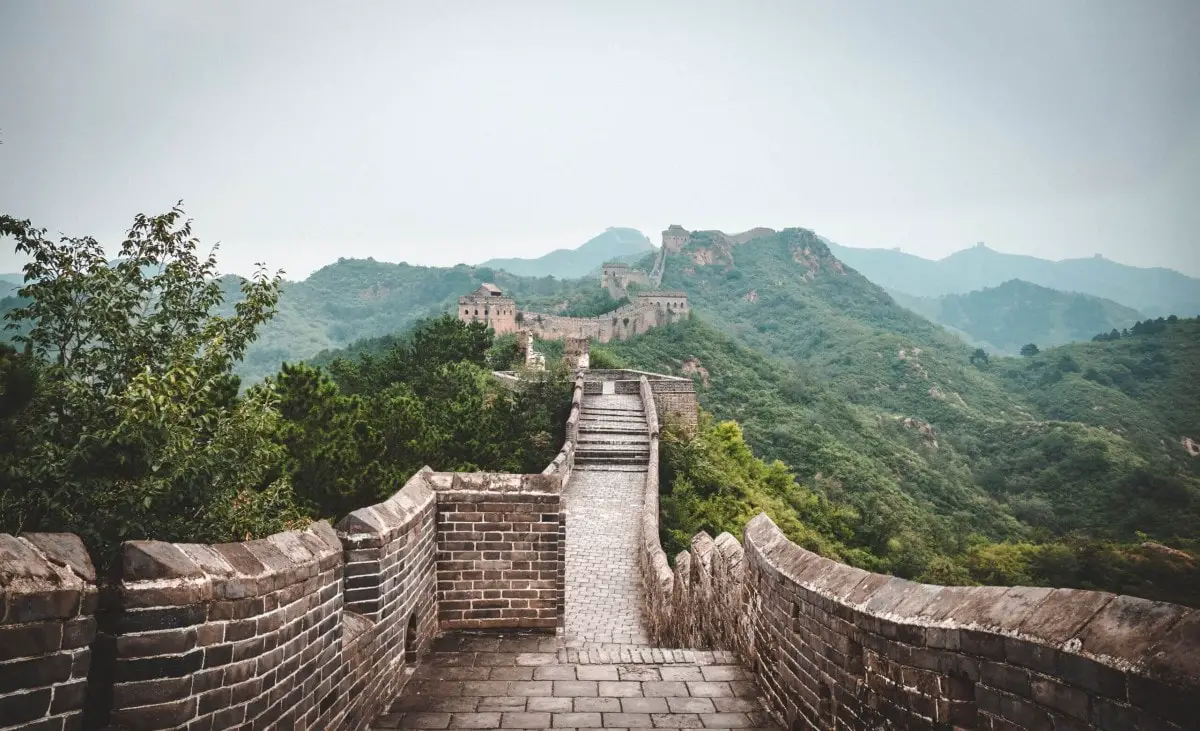
And, if you don’t find something you need in this guide, please do drop us a comment below or get in touch with us here. We’d love to help you explore our favourite country and build you out a fantastic 2 weeks China itinerary.
Skip ahead
The perfect 2 weeks China itinerary
- Day 1 & 2 – Beijing | 2 days exploring the capital
- Day 3 & 4 – Great Wall of China | Hiking the Great Wall
- Day 5 – Beijing to Xian | Travel day + Xi’an city sites
- Day 6 & 7 Xian | Walking the city walls & Terracotta Army
- Day 8 – Xian to Chengdu | Travel day + Chengdu walking tour
- Day 9 – Chengdu | Meet the Pandas!
- Day 10 – Chengdu to Zhangjiajie | Travel day + Tianmen Mountain
- Day 11 & 12 – Zhangjiajie | Avatar Mountains
- Day 13 – Zhangjiajie to Shanghai | Travel day + The Shanghai Bund
- Day 14 – Shanghai | Exploring Shanghai

Why go to China?
We imagine that you’ve got to our article because you’re already set on heading to China and are looking for the perfect itinerary outlining everything that you must do! However, just in case you need a little more of a nudge as to why this must be quite literally at the top of your country bucket list – then here are a few reasons:
- Not too surprising in a country of this size (China is pretty much the same size as the USA), you will find some of the most breath-taking landscapes on the planet. If you’ve never heard of the likes of Zhangjiajie National Park or the limestone karsts of Yangshuo, do yourself a favour and have a quick Google. The natural attractions in China should be enough to make you want to get on a plane.
- In a world that’s dominated by social media, with Instagram making the most beautiful and exotic locations in easy reach, and with travel very much for the many than the few, it really feels like the romantic concept of travelling and exploring is a bygone era. However, China offers this in spades. Because it’s not the easiest place to travel, you have to work a little bit for it. And arriving into a small unknown village like the Ancient City of Fenghuang, with no western tourists, is a wonderfully rewarding feeling.
- And of course, there are some of the most iconic buildings and famous landmarks in the world in China. Whether it’s spending a day walking the Great Wall of China, going to seeing the Terracotta Warriors or even visiting the largest palace in the world, the Forbidden City… there are so many fascinating historical places to explore.
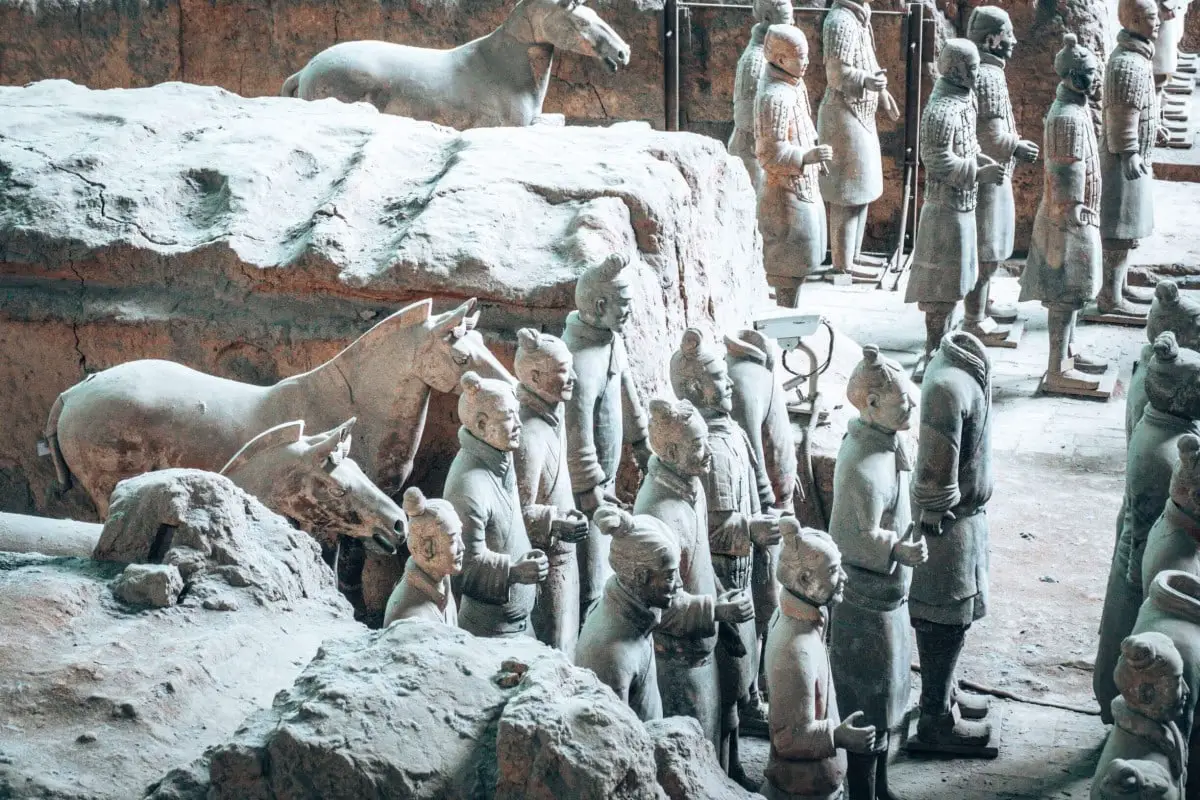
Travel Insurance for China
Got your travel insurance booked? We promise to never push a brand or product we don’t personally use, and the travel cover from Safety Wing is a policy we don’t just use, but we highly recommend. They offer some of the most flexible policies, amazing customer service and are affordable too.
Check out the latest travel insurance prices with Safety Wing here.
Day 1 Beijing
So, our itinerary starts in one of the most interesting cities in the world, Beijing, and finishes in another, Shanghai. However, if you aren’t able to book flights like this and need to start and finish in one location, then we’d definitely recommend that you keep Beijing on your itinerary – it’s an absolute must for your classic two week China itinerary.
And in case you are able to spend a little longer in the city, or are looking for just a little more detailed information on what to do in Beijing, we have a full 4 day Beijing itinerary with everything you need to know about what to do and where to go!
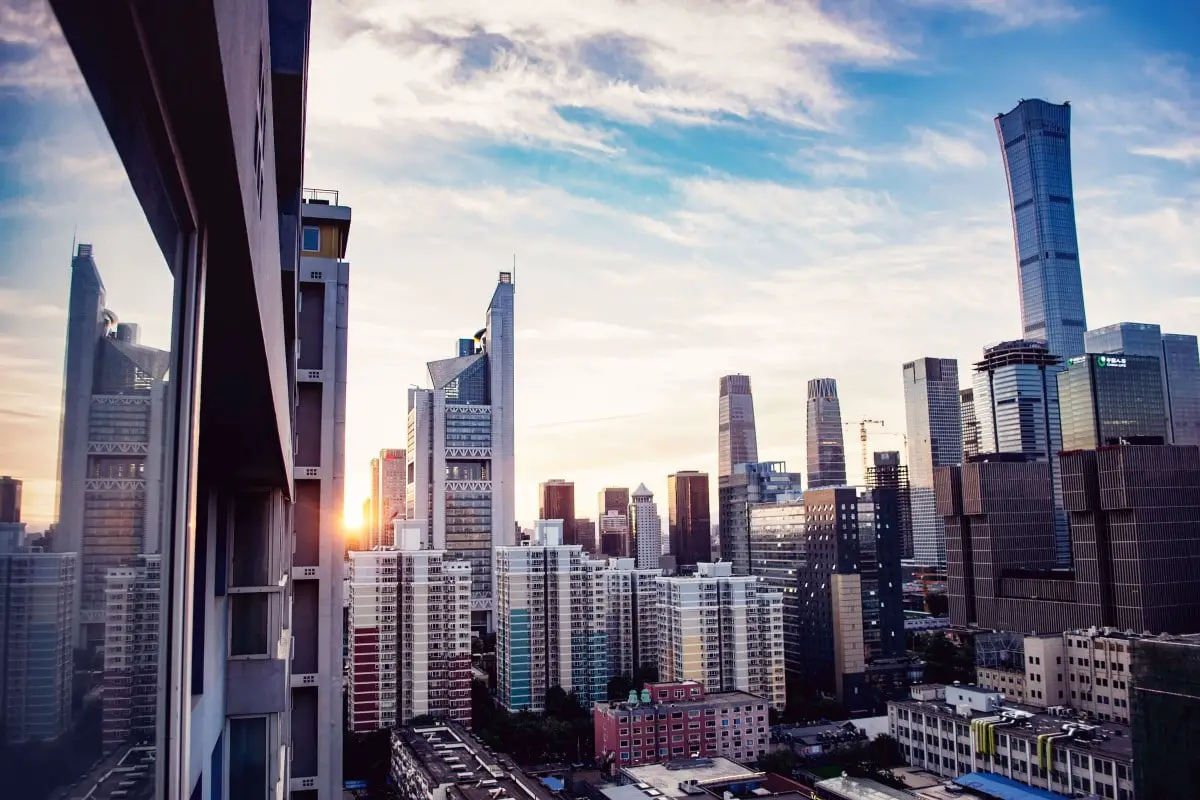
Explore the Forbidden City
What you’ll soon learn about China is that they don’t do things in small sizes. Things are insanely large so it’s not a surprise that you’ll start your time in Beijing by visiting the largest palace complex in the world: the Forbidden City.
This is easily the most impressive palace we’ve ever been to, and with 900 buildings, 8,500 rooms and around 1.8m bits of artwork, you won’t be disappointed in kicking off your China itinerary with this world-famous landmark.
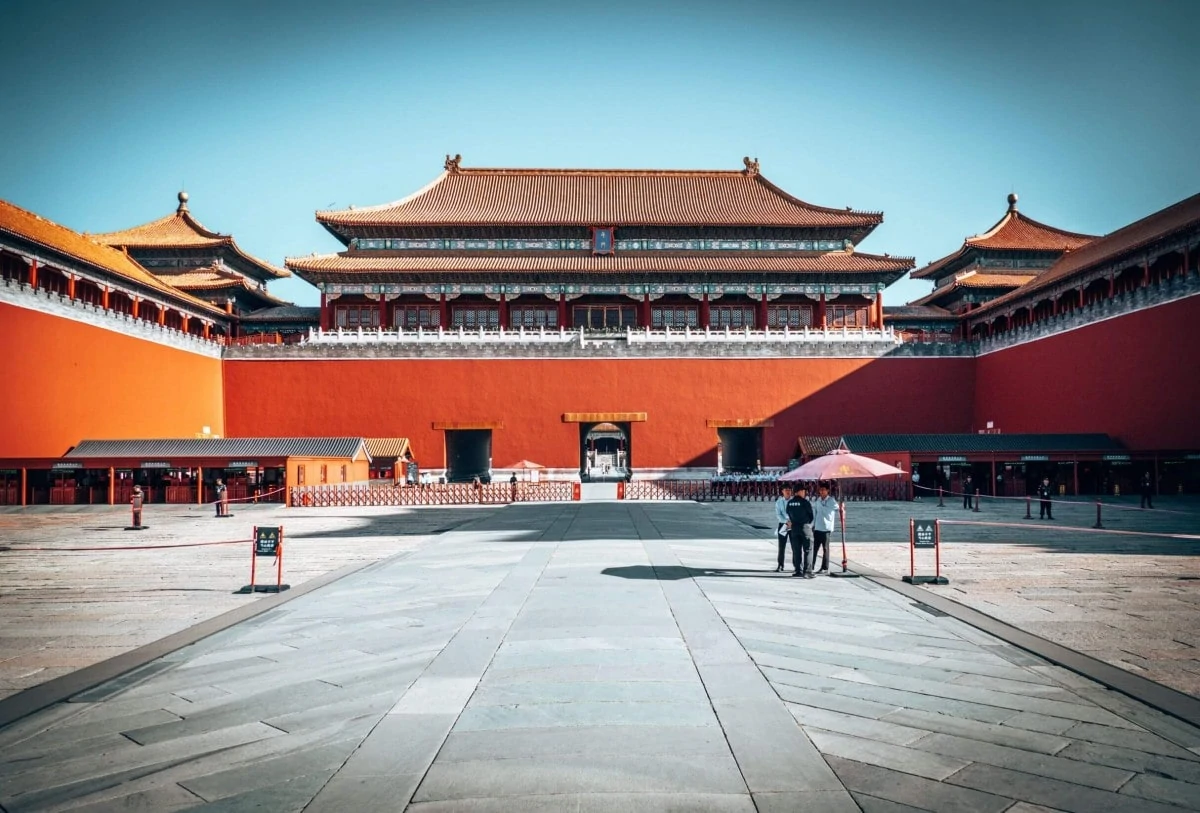
Buying tickets for the Forbidden City:
Unless you have a Chinese ID, understand Mandarin and own a Chinese mobile number, you’ll not be able to book tickets directly.
However, we booked our tickets with Get Your Guide, which was a really easy process. Whatever you do, don’t forget to take your passport with you. You’ll need it in most places in China to pick up tickets to attractions and even to enter certain areas, like Tiananmen Square.
If you’re keen to be part of a walking tour, and learn more about the history of the Forbidden Palace from a tour guide, then we’d definitely recommend that you check out this one.
Make sure you’re wearing comfy shoes for today – you’ll do quite a bit of walking. The Forbidden City is set on almost a square km, so be prepared to bash the pavement.
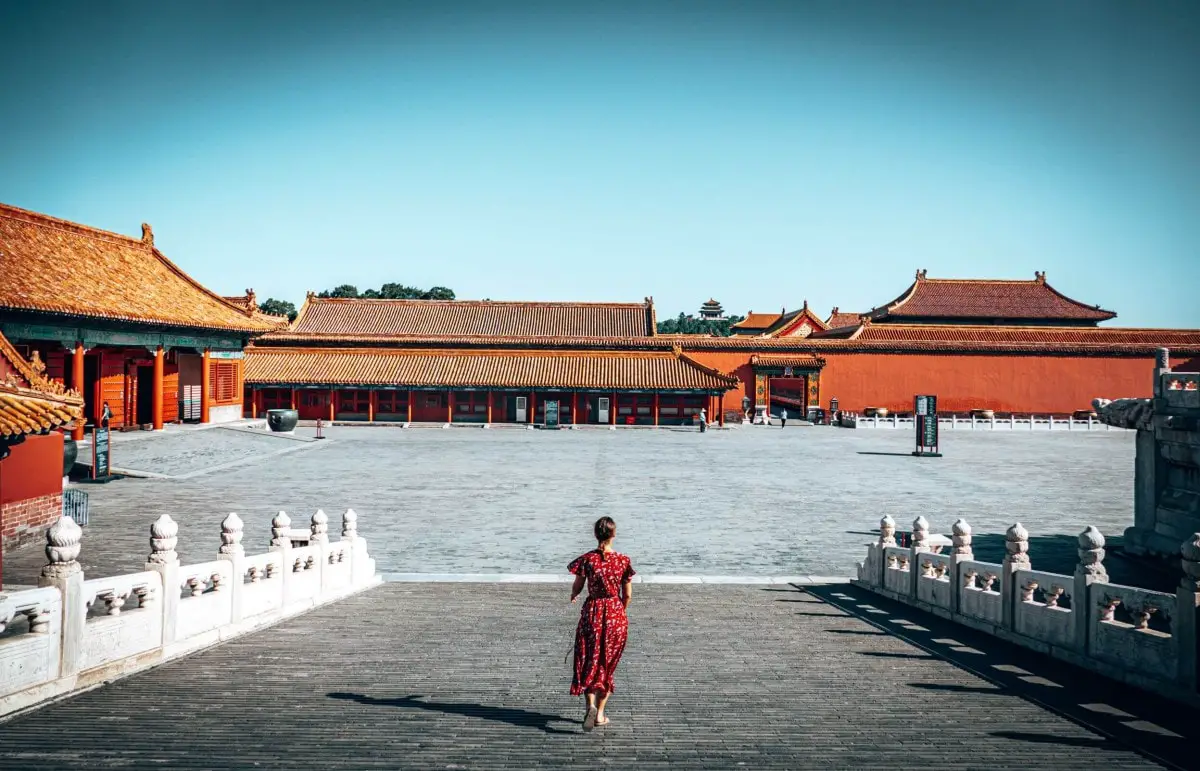
Top Tip: It’s important to remember that the Forbidden City is one of the most important sites in the country, so at no time of the year are you going to get this place to yourself! They actually limit the number of people who can enter the palace to 80,000 per day (so make sure you book your tickets early). However, if you are looking to get photos without the hordes of other people, then it is very achievable – you just need to arrive nice and early at the ticket gates, well at least 30 minutes before they open. Then as soon as you are through the gates walk to the far end (we ran) of the Palace and then walk through the Forbidden City in reverse.
Location: 4 Jingshan Front St, Dongcheng Qu, Beijing
Open: 8.30am to 5.00pm (April to October) and 8.30am to 4.30pm (November to March) – Closed on Mondays!
Hike to the Viewpoint at Jingshan Park
The way that the Forbidden City is set up, you enter through the gates at the Tiananmen Square side but exit through the gates at the back, adjacent to Jingshan Park.
So, after you’ve explored the beautiful palace, get ready to walk a few steps to get the best view of it from Prospect Hill. The hill also provides a pretty decent 360-degree view of Beijing too.
The walk up the hill will only take 10 – 15 minutes and isn’t too strenuous at all. There is an entry fee to the park which will set you back 2 RMB (0.30 USD/0.20 GBP), and you can buy the tickets at the park entrance.
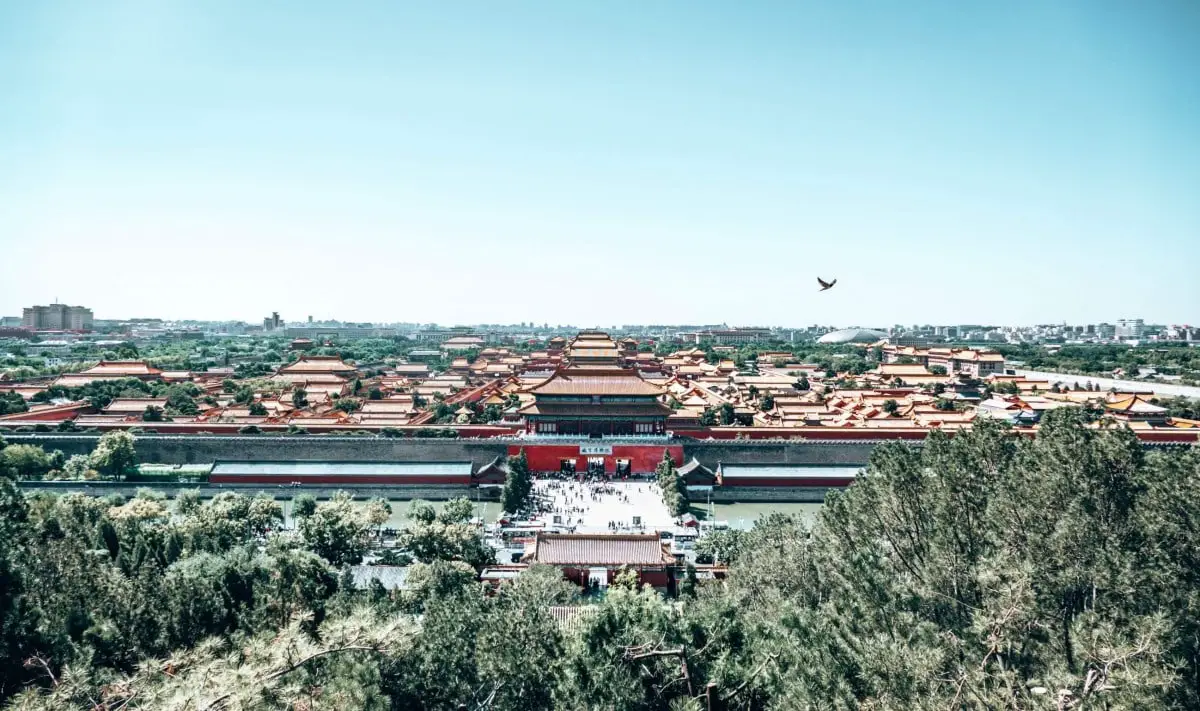
Top Tip: If you’re looking for a great place to watch sunrise or sunset, then Jingshan is a really good option in Beijing.
Location: 44 Jingshan W St, Xicheng Qu, Beijing
Open: 6.00am to 10.00pm
Tiananmen Square
Although it would really make more sense to head to Tiananmen Square before entering the Forbidden City, you’ll then be stuck in the bigger queues to get into the palace, so we definitely recommend this order of attractions for day 1 of your itinerary! So, after Jingshan Park next up for the day is to head to this imposing and infamous square.
From the base of Prospect Hill you’ll have to walk around the walls of the Forbidden City to get back to Tiananmen Square. It’s probably about a 2km wander, but well worth walking this rather than taking a taxi or public transport.
Just as we mentioned with the Forbidden City, China doesn’t do small, and Tiananmen Square is no different. The public space is one of the largest city squares in the world. And alongside the palace, you’ll be able to visit (or at least see), the monument to the People’s Heroes, the Great Hall of the People, the National Museum of China and the Mausoleum of Mao Zedong.
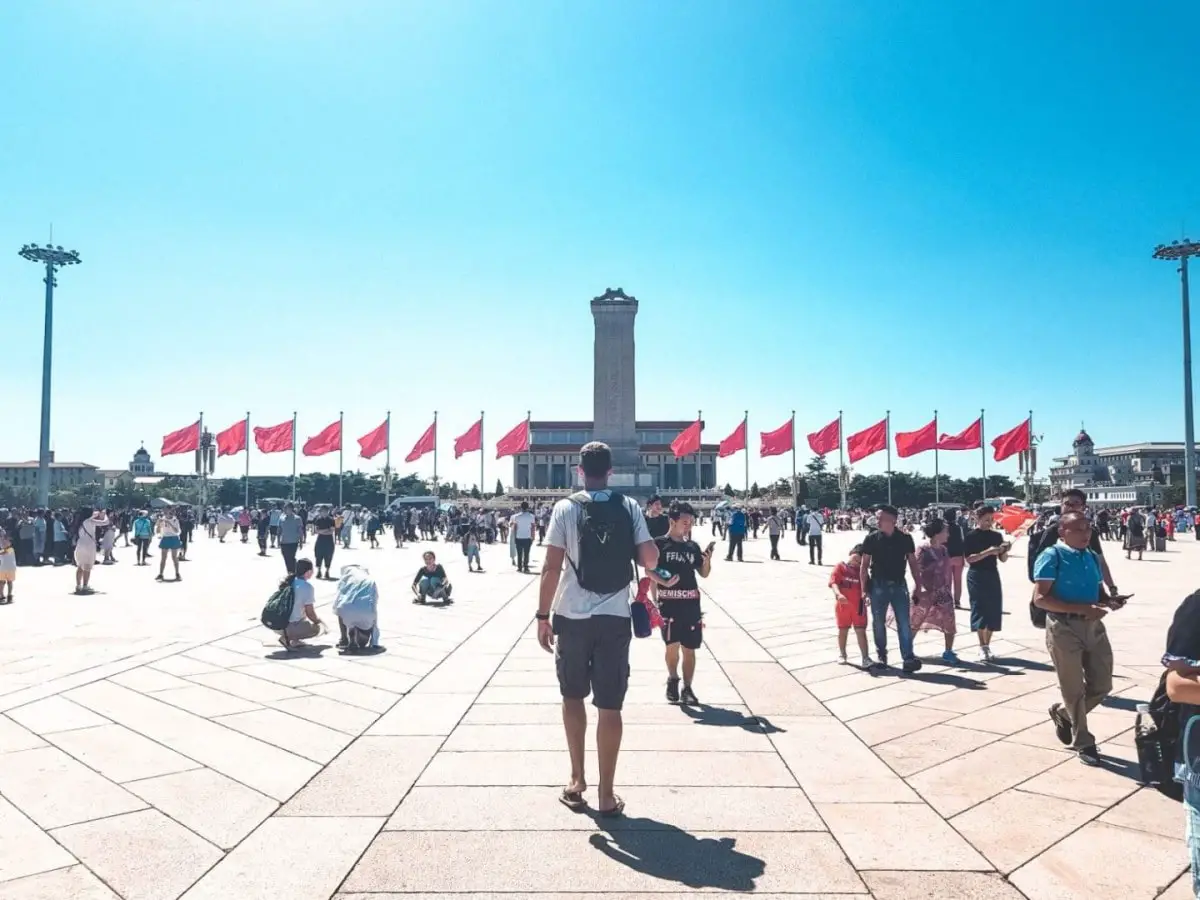
Note: Although you’re probably pretty tired from today’s walking, we’d definitely recommend a visit to the National Museum of China if you can – read more about that in our section on bonus things to do in Beijing!
Location: Tiananmen Square
Open: Times vary, but even though it is closed at night, you can still walk around it, providing a very different aspect to the daytime.
Qianmen Walking Street
And the final activity for day 1, before you head to your accommodation for some well-deserved rest, is to head to Qianmen Walking Street. Luckily this is located at the far end of Tiananmen Square, so not too far to go!
The road is a great place to grab some food or coffee to refuel. The shopping street was first developed way back in the 1920’s and is a great place to walk around and see some traditional courtyards and Hutongs.
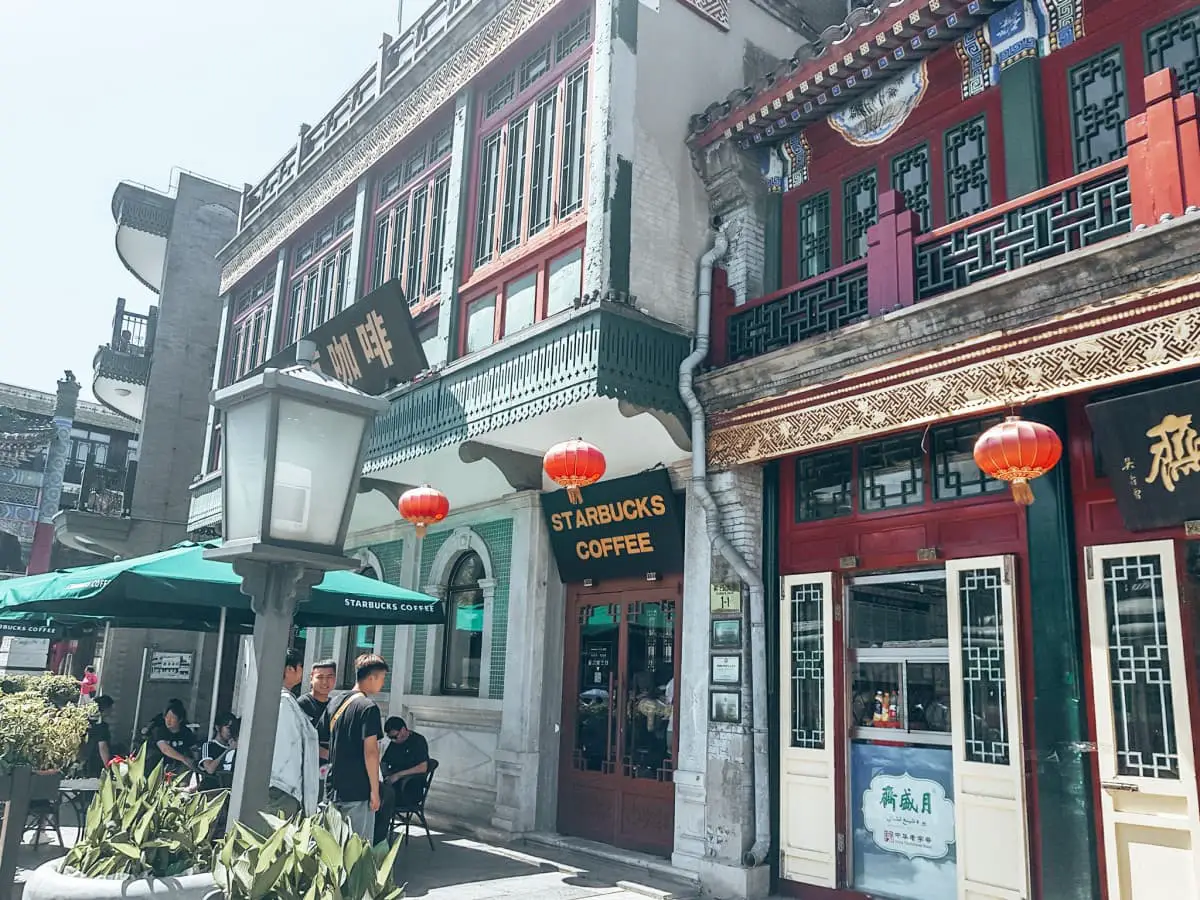
Although this felt a little touristy, it was well worth it.
Location: Qianmen Street, Dongcheng, Beijing
Where to stay in Beijing
Ideally you’ll want to stay not too far from the major attractions around the Forbidden City and Tiananmen Square, however, the good news is that the Beijing Metro (read all Metros in China) are super clean, cheap and easy to use, so even if you’re staying further out it’s easy to get about. However, in saying that, Beijing is an enormous city, so definitely good to look for the right place though, to help cut down on travel time.
Budget: For the backpacking crowd, check out the Peking Yard Hostel. It’s super sociable, has fun activities to meet other travellers, like dumpling parties and the food gets pretty good reviews too.
Mid-range: On our first visit to Beijing, we stayed at the Park Plaza Science Park, which we felt was the perfect place for people not quite ready to go for the cheaper end in China. The staff were amazing – helping us with any queries and it had a great gym!
Luxury: Just a stone’s throw from the Forbidden City, and views you won’t believe, the PuXuan Hotel & Spa is the place for those with a higher budget.
Getting around Beijing
As we mentioned above, we can’t stress enough about how amazing the Metro in Beijing is. Think the scale of a London Underground or New York Metro, but with the efficiency and cleanliness of the Singapore MRT.
It is without doubt the best way to get around the city. Getting anywhere won’t cost you more than 5 RMB (0.70 USD/0.50 GBP) per journey. And all the station signs are translated into English, so it really is simple to use.
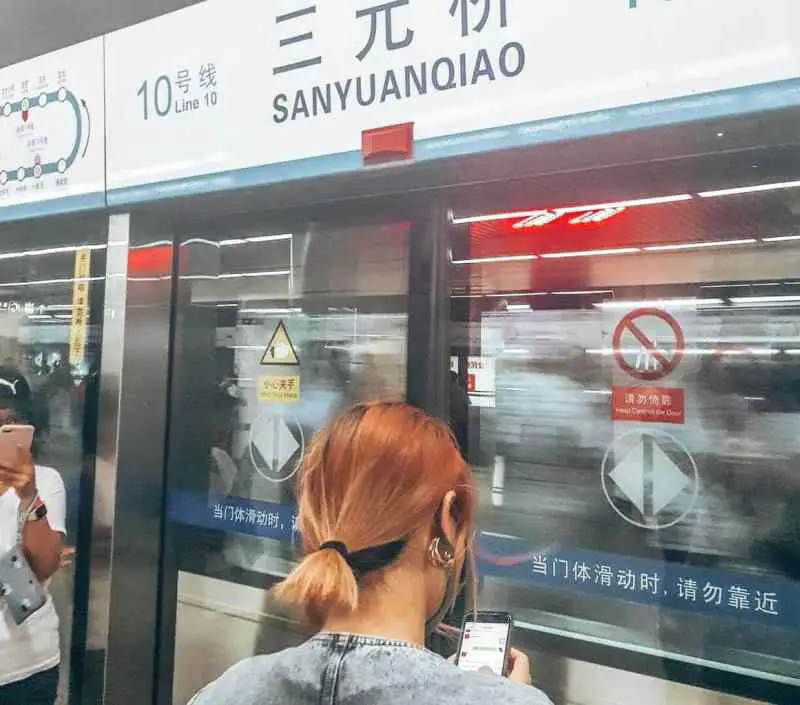
We’d recommend that you download the free Metro Man app which is in English, has handy maps and can help you plan your journey.
If you’re more interested in taking a taxi, then we’d suggest that you look at downloading DIDI. The app is pretty similar to Uber. Although make sure you download it before arriving in China from the US Play Store or you’ll have a Mandarin version which isn’t that useful.
Top Tip: If you are looking to take a taxi, get your hotel to write down for you your destination and the hotel name and address in Mandarin or you may well have a frustrating if not amusing conversation with your driver!
Getting from Beijing International Airport
We imagine that you’ll be arriving into Beijing International Airport, so here are the best ways to get from the airport into the city.
Train: The way we did it, and if you’re used to taking trains/underground in Europe or the US it will be a cinch. Trains depart from both terminals 2 and 3 every 10 minutes, with the journey lasting around 30 minutes.
The Beijing Airport Express will set you back around 25 RMB (3.50 USD/2.80 GBP) and arrives in Dongzhimen Station. From there you’ll be able to jump onto lines 2 and 13 on the Metro to get around the city.
Taxi: Feeling a little more lazy and not keen on testing the public transport just yet? Well then you can get a taxi from right outside the airport terminal, which will take around an hour to get into the city centre and set you back around 250 RMB (35 USD/28.50 GBP).
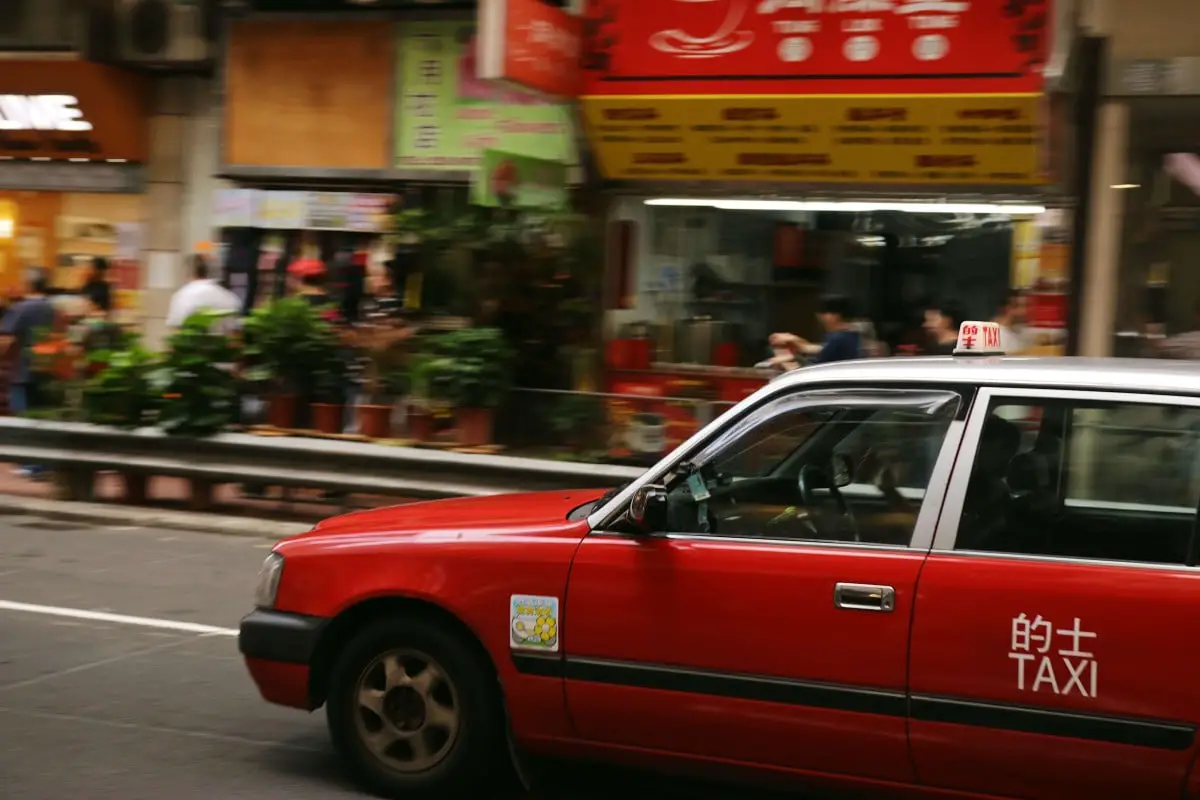
Top Tip: Ignore any taxi operators in arrival halls, they’ll jack up the prices. Make sure you agree the price beforehand. If you can, get the Mandarin for your hotel printed out before you arrive in Beijing. And have a good translation app to hand.
Day 2 Beijing
So, for day 2 of your 2 weeks China itinerary, we’ve suggested two more amazing UNESCO World Heritage sites, although, we’ve got a load more ideas in our Beijing bonus activities should you want to replace these with alternatives.
The Summer Palace
In the morning, head out to the beautiful imperial gardens and palaces of the Qing Dynasty, the Summer Palace. A palace twice destroyed and then rebuilt (last in 1912) which was used by the royal family as a way to escape the stifling hot summers in the city.
This UNESCO world heritage site is a 3 square km park towards the north western outskirts of Beijing. The stunning grounds of the palace, centred around Longevity Hill, along with the tranquil Kunming Lake, are worth a visit on their own.
Although they say that the summer months are the best time to visit the Summer Palace, we’d hedge a bet that the frozen lake and icy landscapes provide pretty mesmerising landscapes in the winter!
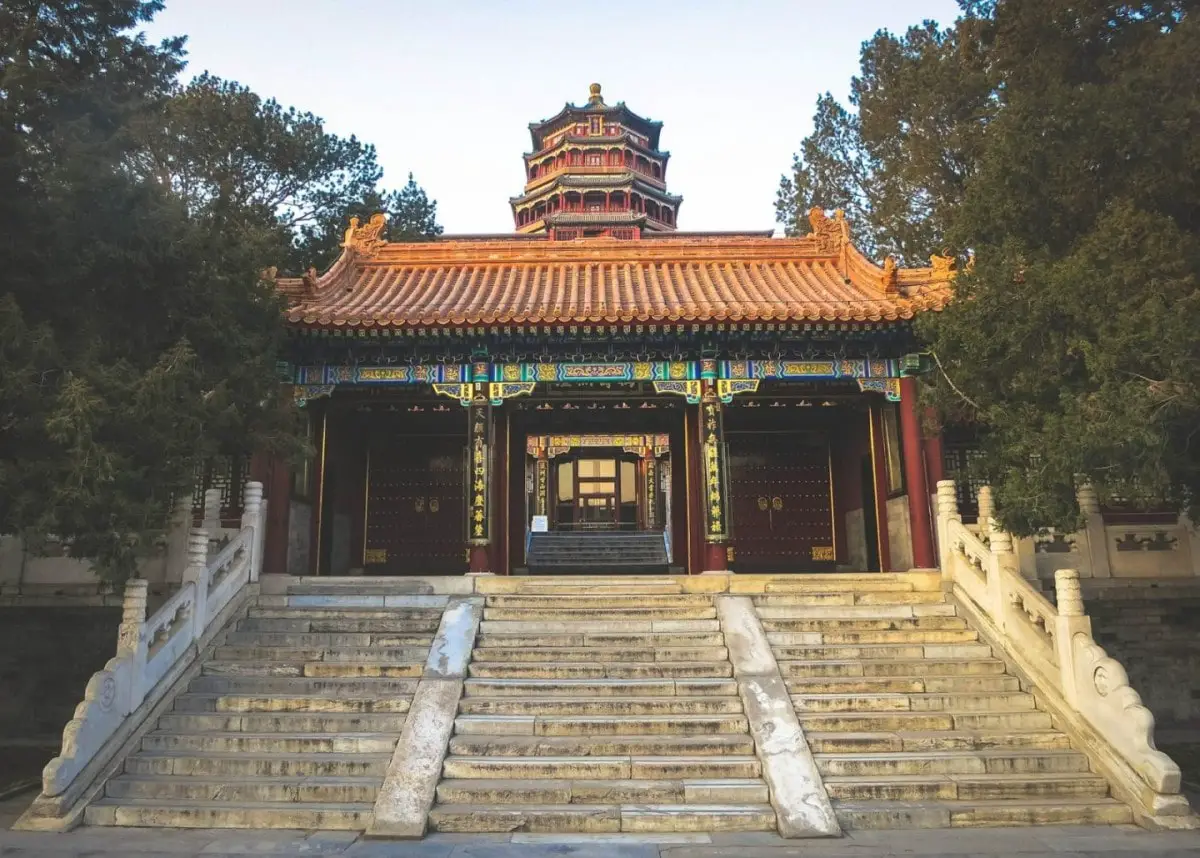
How to get there: Take Line 4 to either Xiyuan or Beigongmen Stations.
The fee for entry to the Summer Palace is 30 RMB (4.25 USD/3.40 GBP) during the summer (April to October) and 20 RMB (2.80 USD/2.30 GBP) at other times of the year. Although it’s worth noting that there are additional costs for certain areas, or you can buy a full combo ticket for access to all areas.
Buy your tickets for the Summer Palace here.
Location: 19 Xinjiangongmen Rd, Haidian Qu
Open: April to October – 6.30am to 6.00pm and November to March – 7.00am to 5.00pm
The Temple of Heaven
And this afternoon, you’ll head to one of the most impressive temple complexes in China: the Temple of Heaven.
Built in the 1400s, and expanded over the years, this vast temple complex now sprawls over an incredible 3 km. There are three main areas for your visit.
- The Circular Mound Altar, which houses stunning dragon sculptures
- The Hall of Prayer for Good Harvests, the most famous of the buildings – a 38m tall circular temple
- The Imperial Vault of Heaven, which is a smaller version of the above.
Note: It can get pretty busy so worth booking your tickets ahead of time. And don’t forget your passports when going!
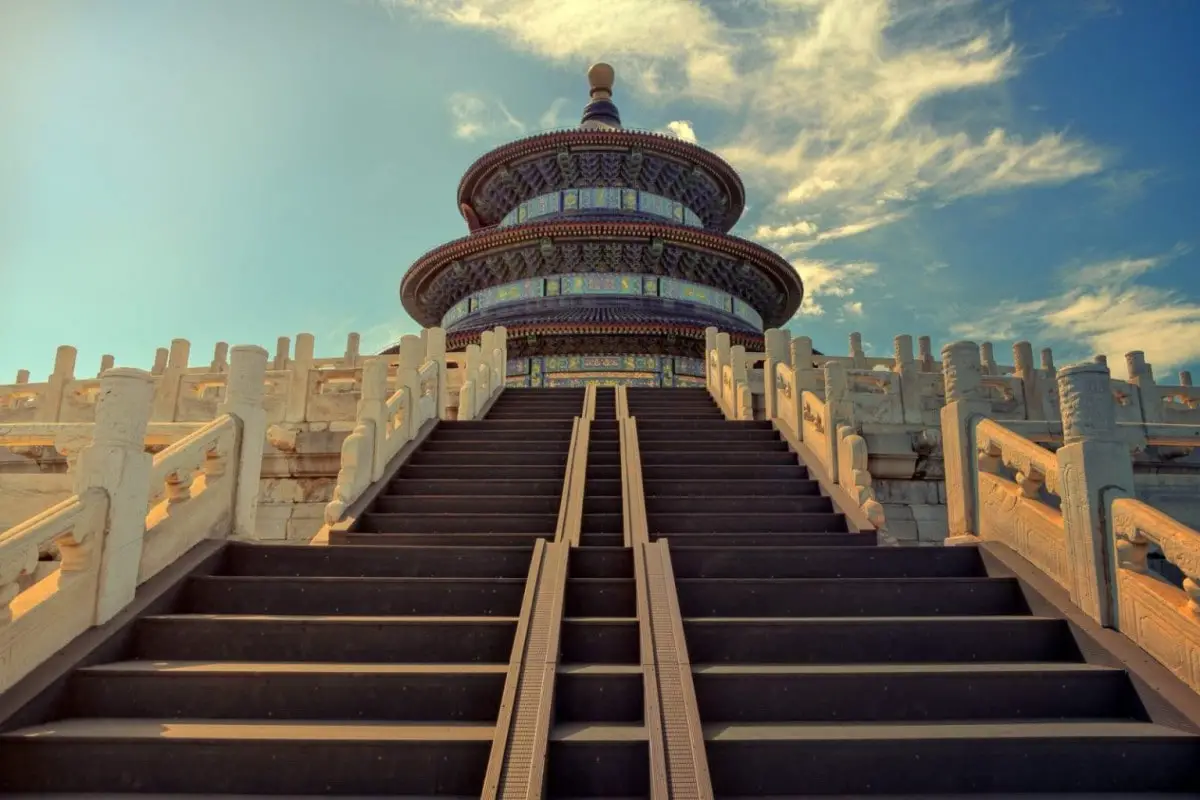
Book your tickets to The Temple of Heaven here.
How to get there: Use Line 5 of the Metro and get off at Tiantan East Gate.
Location: 1 Tiantan E Rd, Dongcheng Qu, Beijing
Open: 6.00am to 8.00pm daily
Bonus things to do in Beijing
So not sure about our suggested activities for Beijing? Or you’re wanting to extend your stay in China’s capital for a few extra days (not a bad idea if you ask us). Then here are some bonus activities that you can add to your 2 weeks China itinerary.
The National Museum of China
Although you were right next to this museum at Tiananmen Square, we didn’t add it into the itinerary as felt it may be just a touch too much on that day to realistically achieve.
However, if you’re a museum lover, this is the one for you. The National Museum is (unsurprisingly) huge, and houses some of the most important Chinese collections in the world. Although you’ll want at least a couple of hours to see some of the more famous residents.
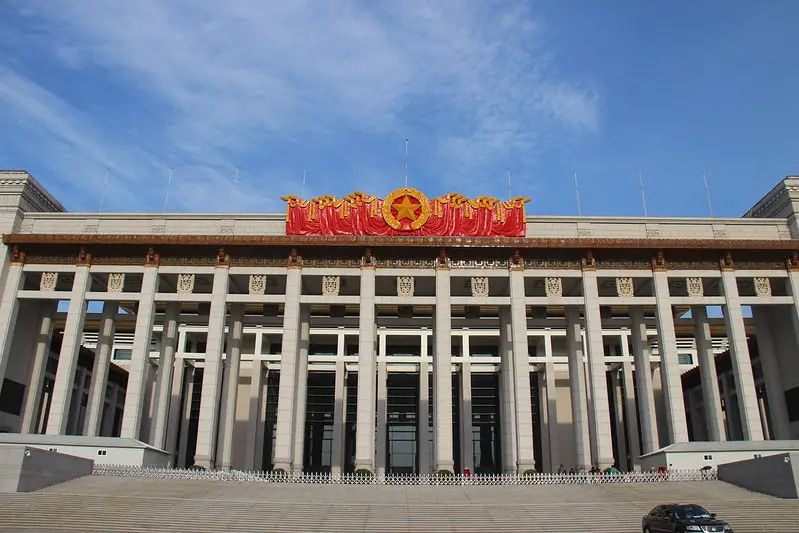
Photo Credit: Gary Todd / Flickr
Fun fact: Second to La Louvre in Paris, the National Museum of China is the most visited museum in the world!
Location: 16 E Chang’an Ave, Dongcheng Qu, China
Open: 9.00am – 4.30pm, closed on Mondays
Ming Dynasty Tombs
One of the better day trips from Beijing, there are thirteen Ming Dynasty tombs located around 50 kms from Beijing. You’ll definitely want to book a private car and/or tour guide option for this. The tombs, which house the emperors from the Ming Dynasty, are spread over a huge area so a guide would definitely be helpful in sharing the history behind the tombs and the best ones to visit!
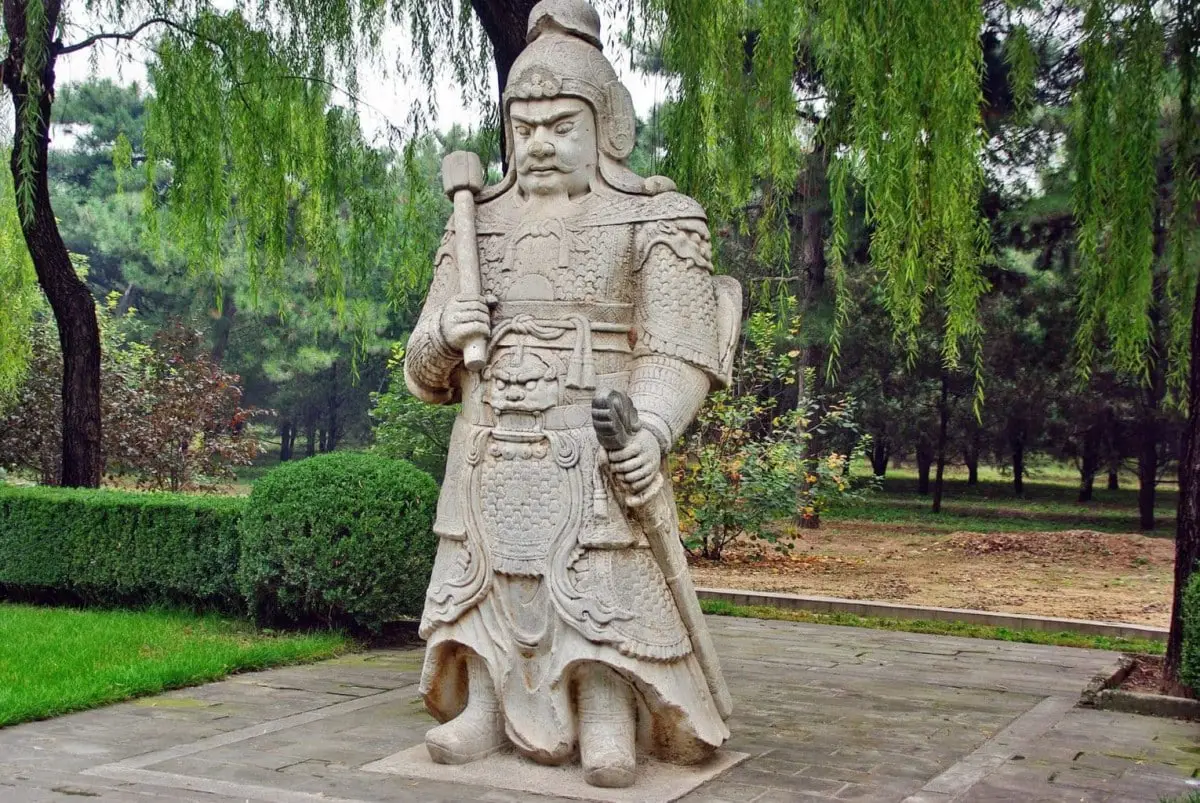
Location: 212 Provincial Rd, Changping District
Open: 8.00am to 5.30pm
The Lama Temple
Also known as Yonghe, the Harmony and Peace Palace, the Lama Temple is one of the most stunning lamaseries in Beijing, if not all of China. So be prepared for peace, harmony and tranquillity on a visit to this beautiful temple.
Constructed in the late 1600s, it was originally a home to Emperor Yongzheng, hence the alternative names, before becoming the monastery in the mid-1700s.
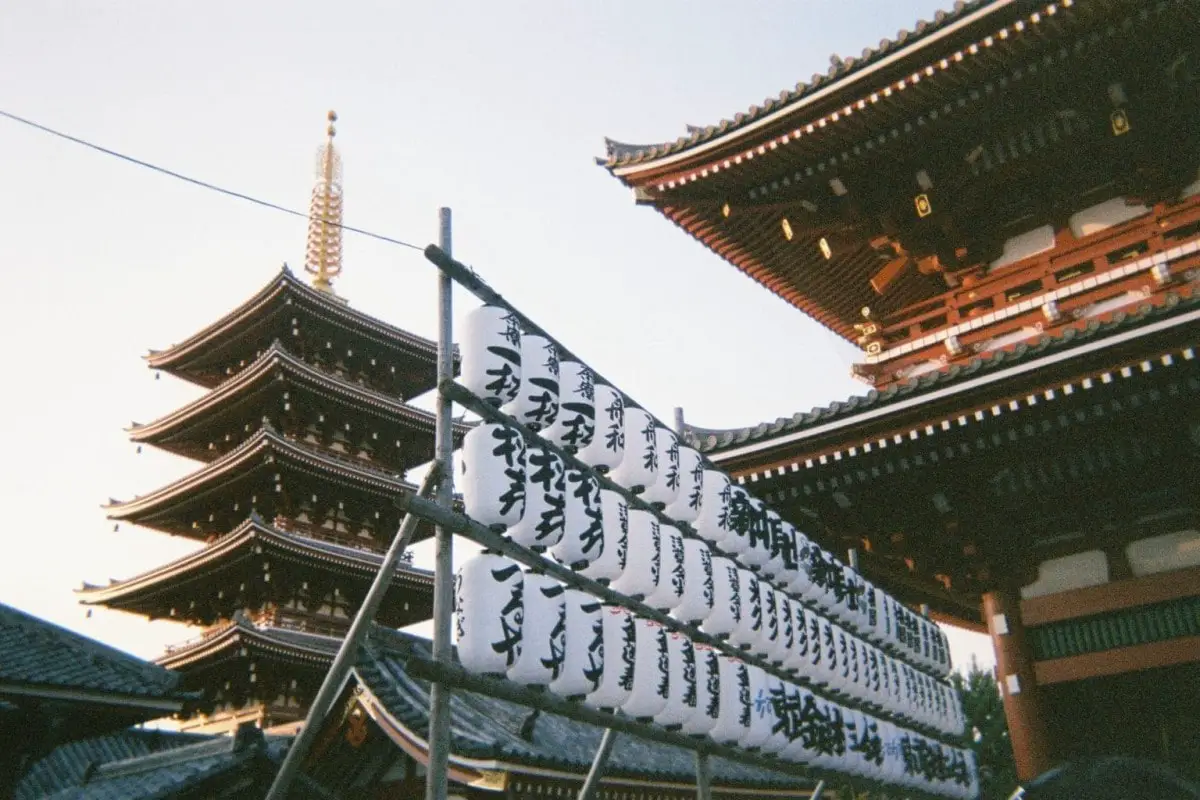
Fun fact: If you didn’t know what a lamasery is (we didn’t), it’s a monastery for Buddhist teachers!
Located right next to the Confucius Temple, you’re able to combine them both in a trip.
Location: 12 Yonghegong St, Dongcheng Qu, China, 100007
Open: 9.00am – 5.00pm daily
Check out life in the Hutongs
We had no idea what these where before arriving in Beijing, but actually ended up staying in one of the hutongs near to Ghost Street on our second visit to the city.
Technically translated as alleys, hutongs have become the widely used term for more traditional neighbourhoods. And offer you the perfect way to explore the heart of Beijing and see how many people live daily life in this mega city.
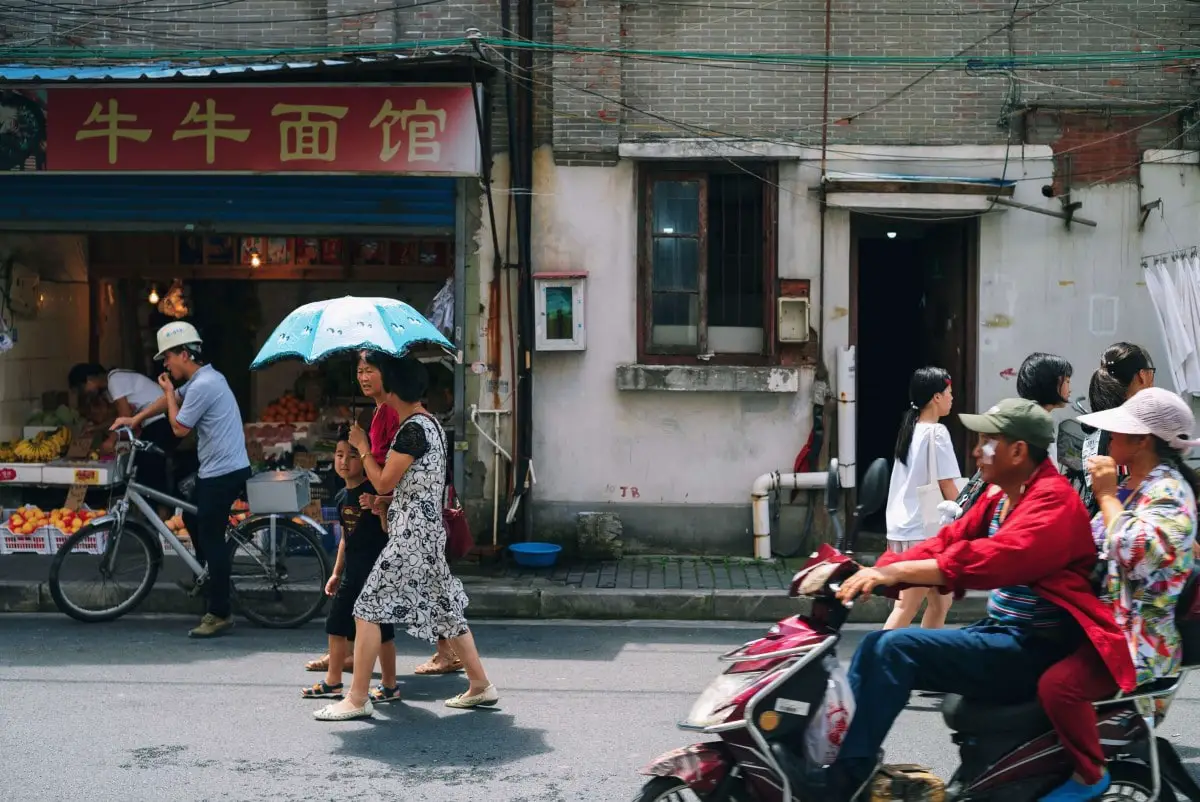
You can check out the hutongs near the Lama Temple or wander around those near Ghost Street.
Traditional Beijing Cuisine on Ghost Street
So, we’ve added it into the extras section, but if you’re looking for some great traditional Chinese food (think Peking duck and sizzling hotpots), then you’ll want to get yourself down to Ghost Street, well technically Gui Jie Street.
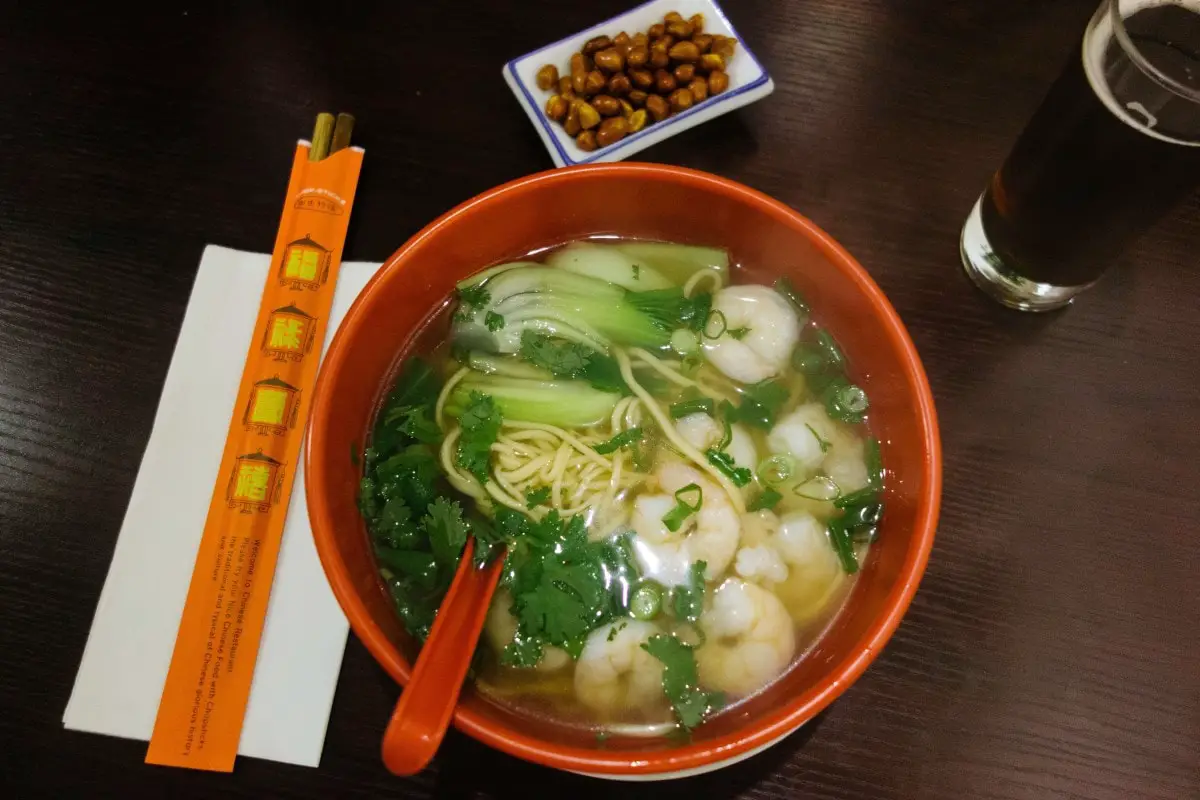
Location: Guijie Street
Day 3 The Great Wall of China
The next couple of days on your China itinerary we have dedicated to visiting the Great Wall of China. For us, this was the highlight of our trip and one of those massive bucket list items.
One of the biggest questions is where to go on the Great Wall so that it’s not teeming with other people. We stayed in Gubeikou (more on that below) and on our full day hike, we only passed 2 families during a 7 hour trek and visited both unrestored and restored versions of the wall. It was the ultimate exercise in seeing the Great Wall without the crowds and we highly recommend it.
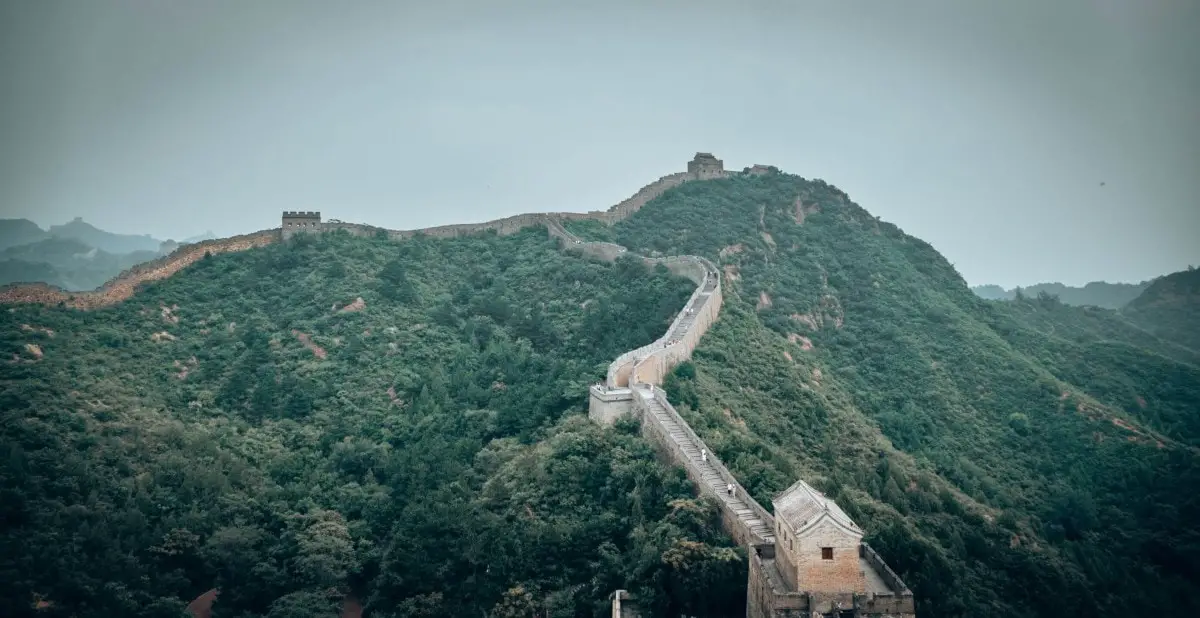
However, if you’re a little more tight on time, you could make this a one day trip from Beijing to the likes of Simatai (the Gubei water town) which is very busy or Jinshanling, a quieter but still slightly busy part of the Wall.
If you’re interested in a day trip, why not check out this one.
Getting to the Great Wall from Beijing
If you’re looking to get to the Great Wall using public transport, it can be a little difficult to find the correct information online. Luckily, we did the trip, so here are simple to follow instructions:
- Go to the Dongzhimen Station (Line 2 & 13 on the Metro)
- Take exit B1 and then walk to the bus departure area – this is not actually at the bus station but around the corner.
- Here will be a number of buses, so look out for the one with Water Town signage on the front.
- If in doubt ask one of the drivers using your translation app and they’ll helpfully put you on the right bus!
The ticket for one way is 48 RMB (6.80 USD/5.50 GBP) a person.
Departures to Gubei Water Town: 9.00am, 12.00pm & 3.30pm
Return to Beijing departures: 1.00pm, 4.00pm & 9.00pm
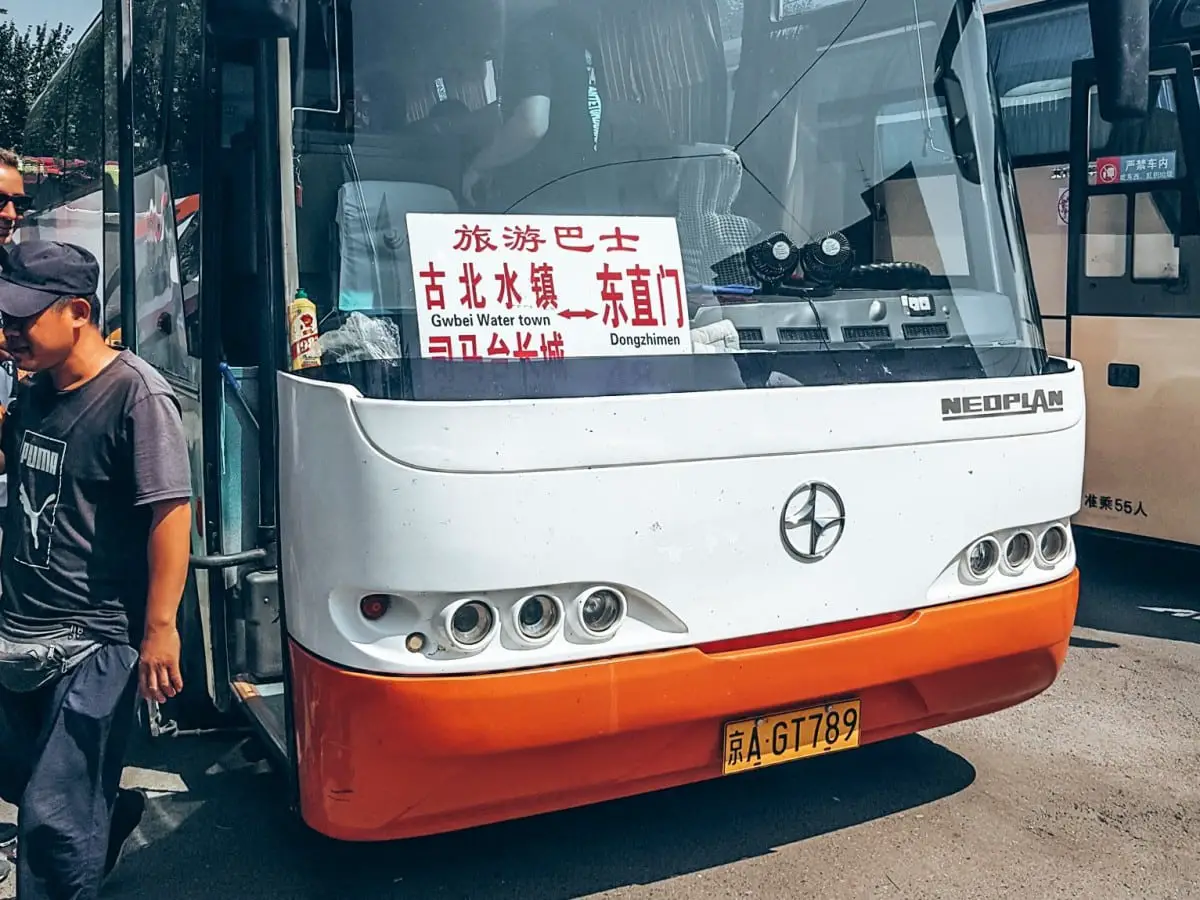
The bus ride takes around 2 hours to Gubei Water Town. Easy enough if you’re just doing a day trip to Simatai, although if you’re looking to go onto Gubeikou or Jinshanling then you’ll have to get a taxi onwards.
The cost for a taxi on to Gubeikou or Jinshanling should be around 80 RMB (11.25 USD/9.00 GBP) and the drive takes around 20 – 30 minutes
Where to stay near the Great Wall of China
Gubeikou
So, just to clear up any confusion, Gubei Water Town is a replica Chinese ancient village, next to the Simatai section of the Great Wall.
However, Gubeikou is a small town around 20 minutes away from Gubei Water Town/Simatai, and the best place for exploring unrestored sections of the wall.
We stayed at the Great Wall Box House. It’s an amazing hostel, food is good, and located about 5 minutes walk from the gate at Gubeikou.
Note: if you’re looking for a great place to watch the sunset on your first evening, you can access the Gubeikou gate for free after 5pm and wander partly along the Wall to get some great sunset snaps.
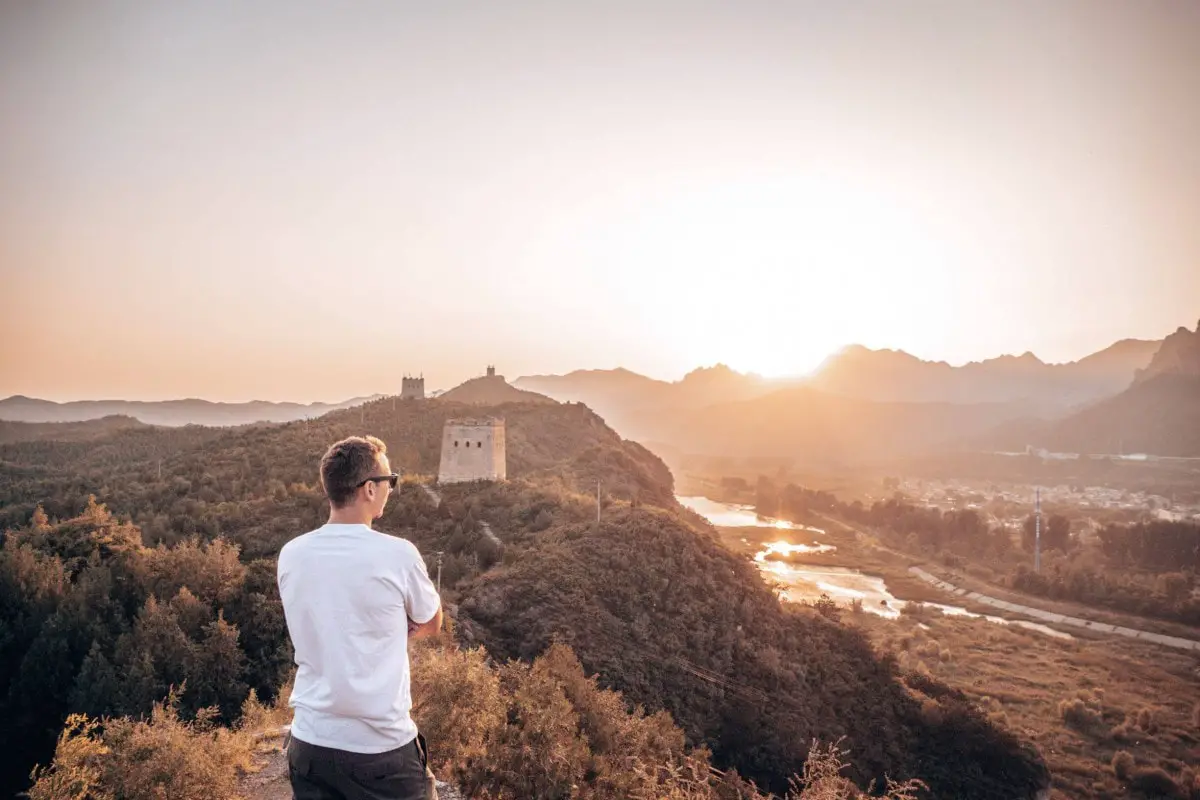
Jinshanling
Set around 30 minutes from Gubei/Simatai, Jinshanling is a renovated part of the Wall, and has better accommodation options, and although restored, this section of the Wall is much quieter than many other more accessible from Beijing.
If you’re less into the hostel option, then check out the beautiful Dhawa Jinshanling, which you can’t really beat from a location point of view. You are literally in the national park!
Day 4 Walking the Great Wall of China
Walk the Great Wall of China – Gubeikou to Jinshanling
So for today, we’d suggest that you walk from the Gubeikou Gate, all the way to Jinshanling.
Note: This is definitely an intermediate to advanced hike – quite a fair bit of up and down across the 15km and will take 6 – 8 hours!
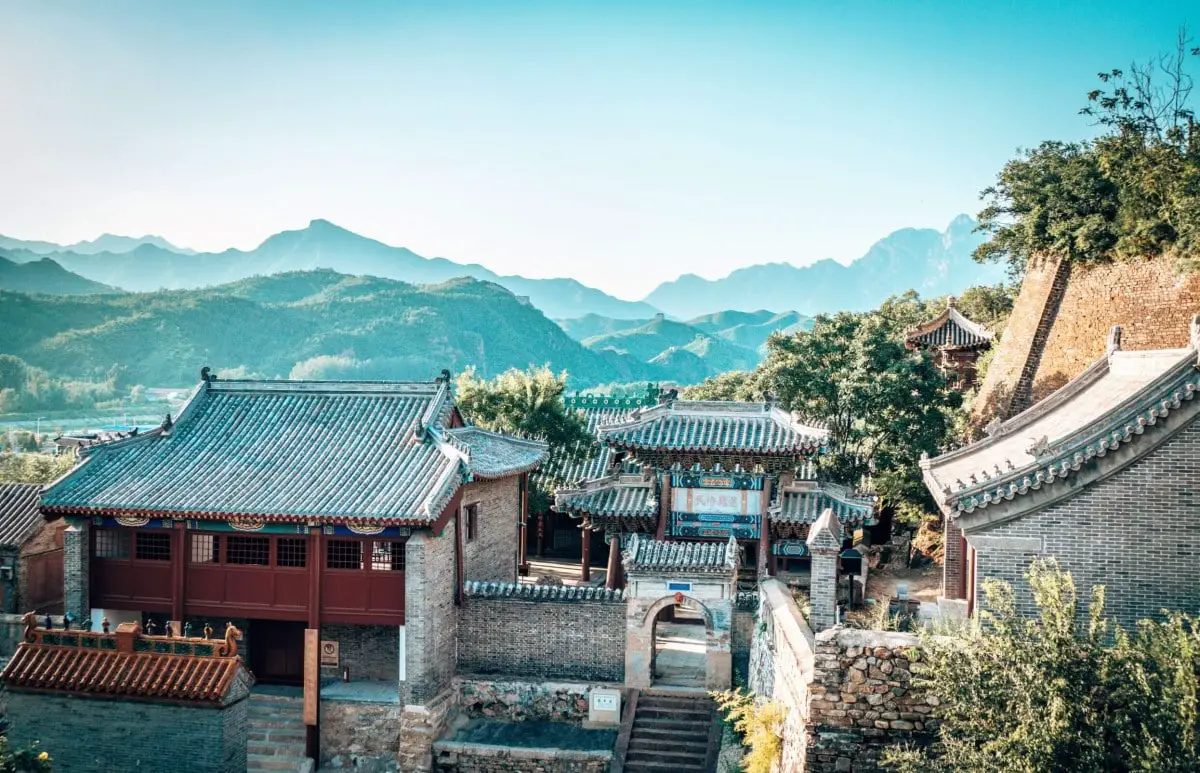
On arrival at the Gubeikou Gate, a short walk up the steps, and you are already on the Wall. The Wall, although mostly unrestored for the first half of the hike, follows the contours of the flowing hills.
Alongside stunning views of the Great Wall sweeping across the landscape, you’ll encounter a few towers on the journey, some which you can still climb.
After around 2 to 3 hours, you’ll reach the 24 Eyes tower, one of the biggest in the region, and at this point you’ll head down into the valley below. Technically you could walk the whole way along the Wall but there is a military zone which you need to scoot around.
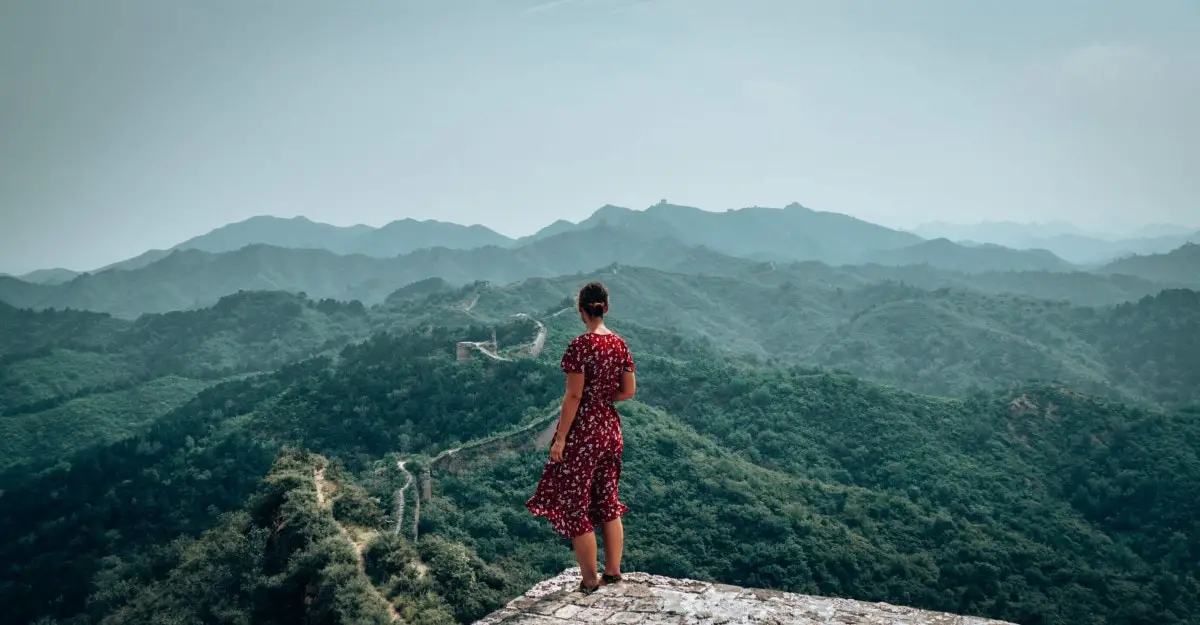
There is an entrance fee to pay per person for the Gubeikou section of the Wall, costing 25 RMB (3.50 USD/2.80 GBP) per person.
You can’t really get lost, but just in case, follow the red marking on the floor and trees, that show the route of this hike.
To avoid the military zone, you’ll make your way down into Spider Valley (a few cobwebs but nothing to write home about), and wander through pretty overgrown bush for around an hour before reaching a small village.
At that point it is very much an uphill walk for the best part of 45 minutes, before you join the unrestored section of the Wall at Jinshanling. This section at Jinshanling is amazing, as you get to see both unrestored and restored next to each other.
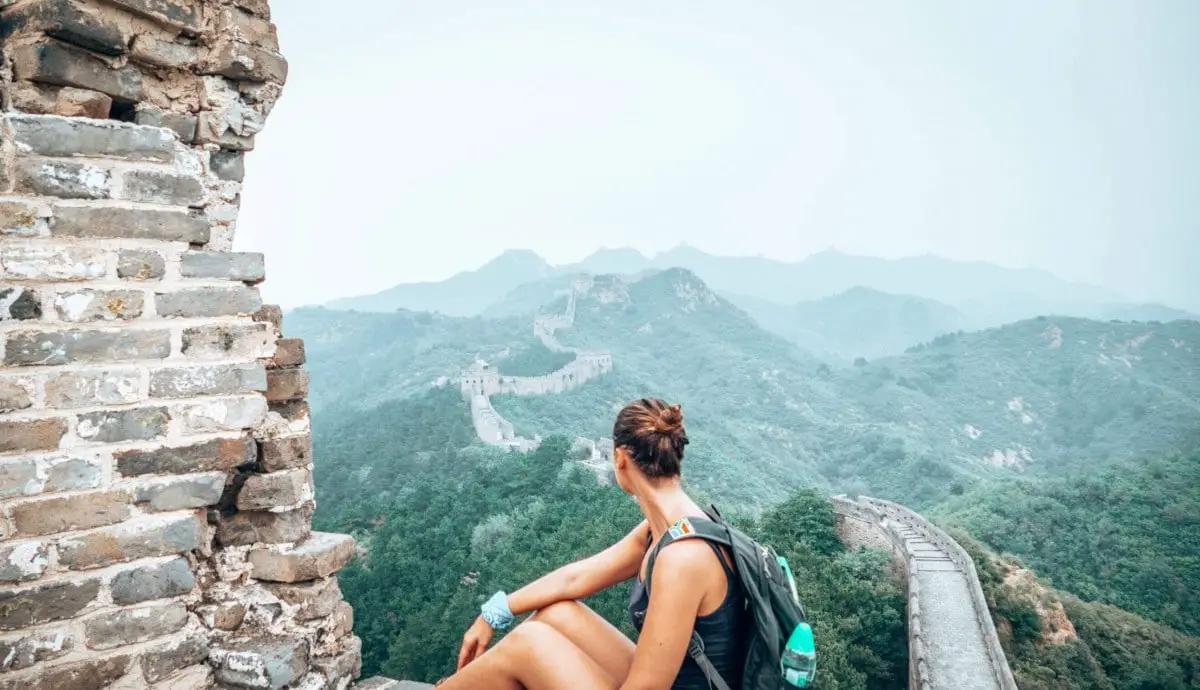
You can continue walking the Wall here until you decide that you want to head down and take a taxi back to your accommodation.
There is also a fee for visiting the Jinshanling section of the Wall, and at 65 RMB (9.25 USD/7.50 GBP) per person is a bit more than the Gubeikou ticket price. But in our opinion, well worth it!
Top Tip: Make sure you get back into Beijing from Gubei Water Town on this evening, as you’ll be wanting to travel to Xi’an tomorrow. Although an exhausting day, it is achievable!
Day 5 Beijing to Xian
Xian is an absolutely fascinating city, and the former capital of China has to make your China two weeks itinerary!
It was actually our favourite major city in China, and this gem (which is also one of the oldest cities in the world at over 3,000 years old), won’t disappoint!
So, once you’ve travelled from Beijing to Xian, we’d suggest you get out there and check out your first landmark in this remarkable city.
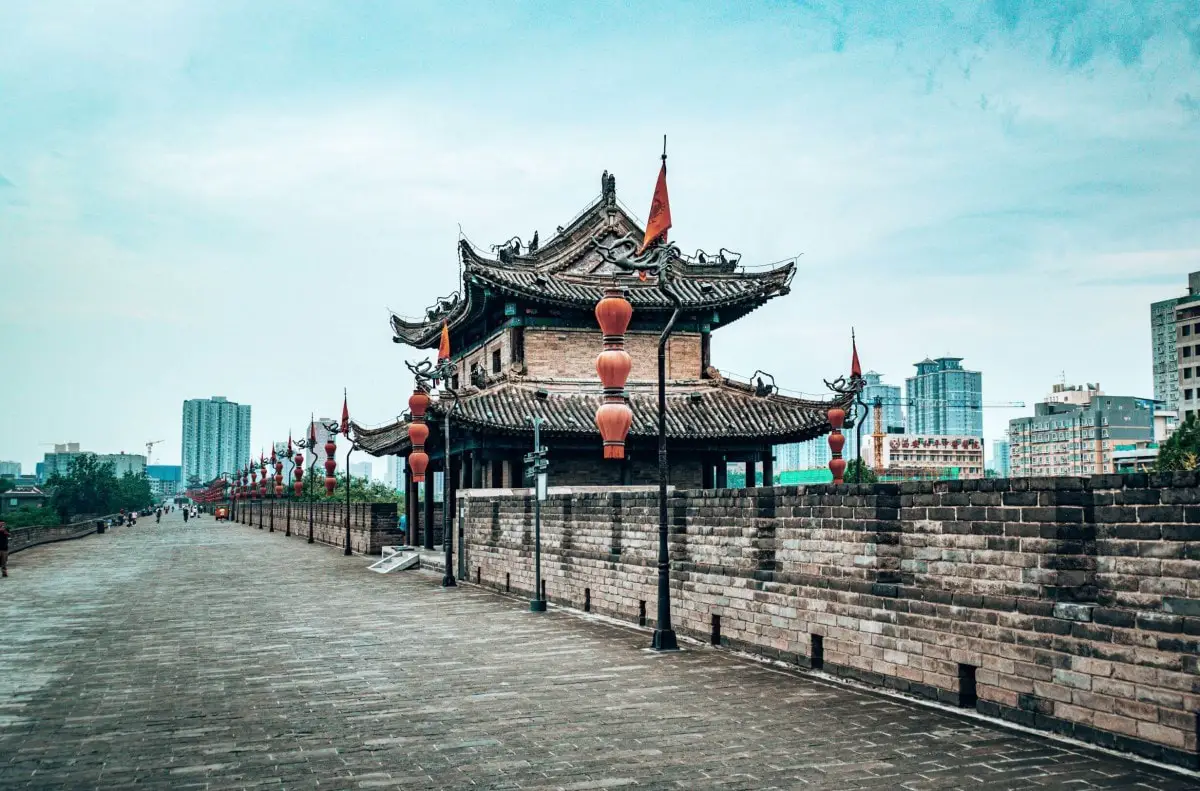
If you’re also able to afford more time to explore Xi’an, we’ve got a whole host of bonus activities to add into your itinerary. Or if you’re looking for more detail on what to expect, we’ve got everything you need to know about visiting Xian, with our 3 day Xian itinerary.
Giant Wild Goose Pagoda
So, whether you’ve flown to Xian or jumped on the super impressive high speed train (more about that in a moment), in the afternoon you should head over to the Daci’end Temple complex to visit the UNESCO world heritage site of the Giant Wild Goose Pagoda.
Initially constructed in 652, the Buddhist temple only survived 50 years before being destroyed. However, and luckily for you, in 704 Empress Zeitan had the pagoda rebuilt, adding a few more storeys to create the beautiful 10 story Giant Wild Goose Pagoda.
Although, what you see today is a little smaller than the original pagoda, as 3 storeys of the building were removed after some major damage caused by an earthquake in the 1550s…
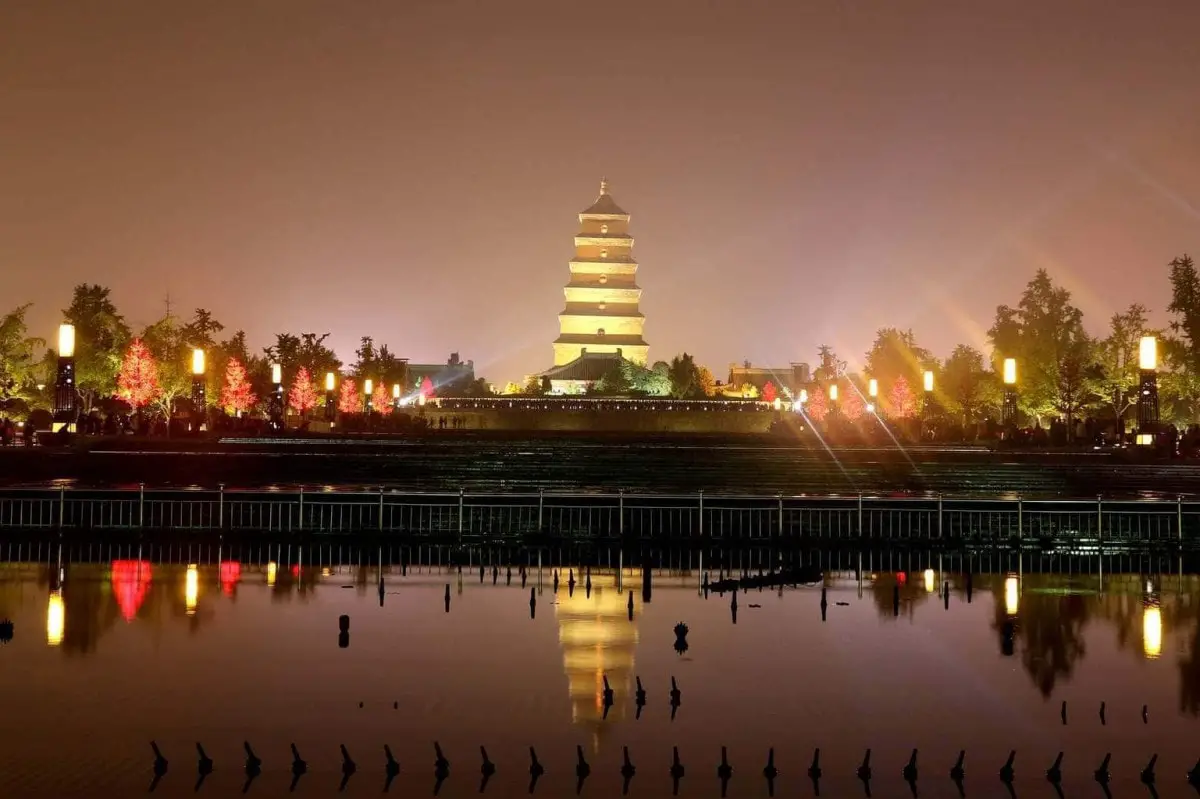
How to get there: Set outside the old city walls, take the Metro to Da Yan Ta on either lines 3 or 4.
There is a 40 RMB fee (5.75 USD/4.60 GBP) to enter the Daci’en Temple Complex, and an additional cost of 25 RMB (3.50 USD/2.80 GBP) if you want to climb the pagoda. In our opinion it is well worth doing so!
Location: 1 Ci’en Rd, Xiao Zhai Shang Ye Jie, Yanta, Xi’an
Open: 8.00am to 5.00pm daily
Getting from Beijing to Xian
Bullet Train
China has the most impressive train network in the world. We previously lived in Germany, who absolutely love their Deutsche Bahn, but we can tell you it is not a patch on what China offers!
The trains are squeaky clean, super-fast, comfortable and peaceful. And the journey, which is over 1000km only takes around 4 hours 30 minutes travel time.
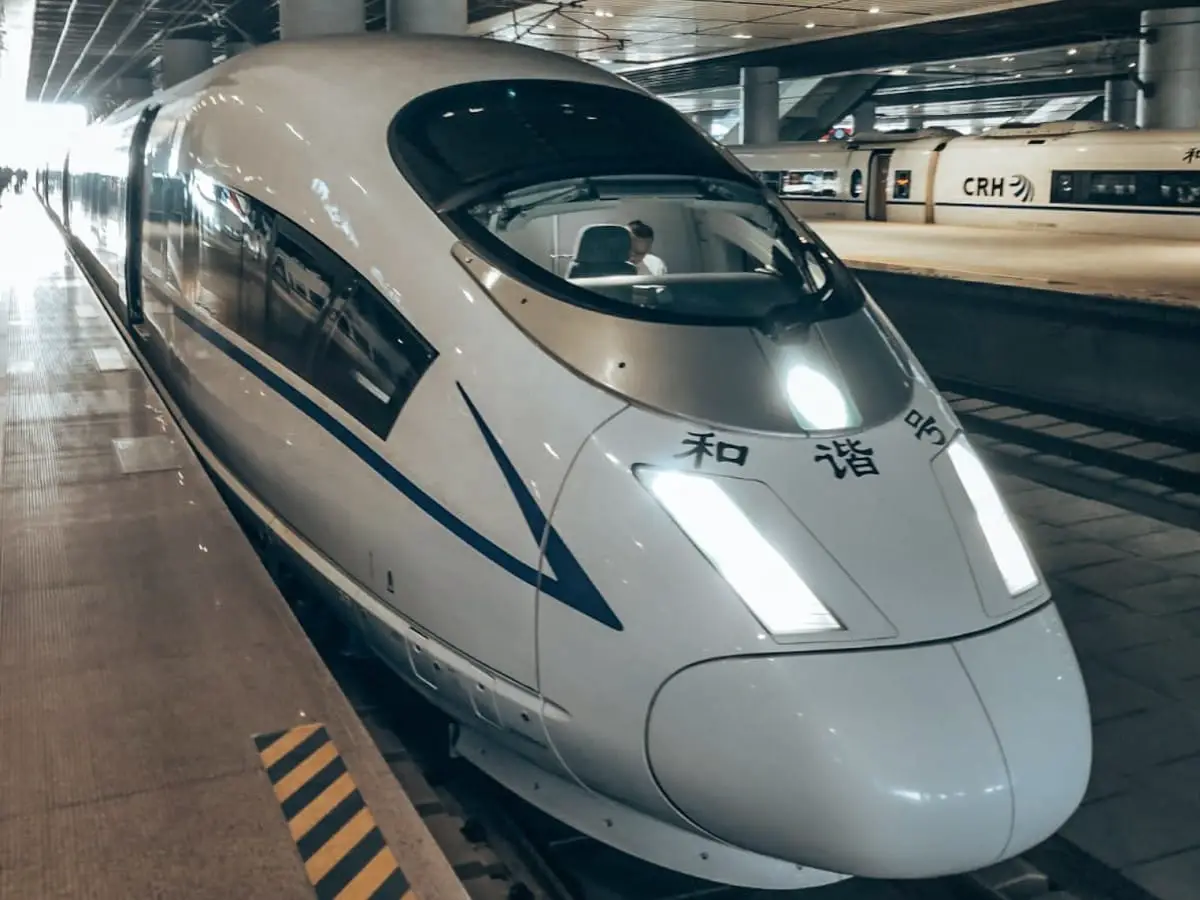
If you want to look at booking train tickets directly, similar to many top tourist attractions you need to have a Chinese ID, phone number and understand Mandarin. Instead, we’d suggest that you reach out to China Highlights who provide a great online booking service. And you can collect all your train tickets at any mainline station in China. Very handy.
Note: Trains only go on sale 30 days in advance but many sell out so worth getting them in advance.
Flights
Although we loved the experience of taking the trains in China, and probably the Beijing to Xian train is one of the best, there are very reasonably priced domestic flights.
Check out the latest deals from Beijing to Xian here with Skyscanner.
Where to stay in Xian
There are really good hotel and hostel options within the old city walls, which is definitely where we’d suggest that you base yourself while in Xian. Here are some of our top recommendations:
Budget: We stayed at the 7 Sages Boutique Bell Tower hostel while in Xian. It had a really nice atmosphere with groups of travellers. Although we’ve heard even better things about their sister hostel 7 Sages International, so worth checking that out if they have availability.
Mid-range: Although just outside the city walls, located very close to them, the Eastern House Boutique Hotel, has rooms with amazing views and perfect for that mid-range budget.
Luxury: You definitely can’t go wrong with the 5* Sofitel Legend People’s Grand Hotel. With incredible amenities, swimming pool and stunning rooms you may not even want to leave the property!
Day 6 Xian
Terracotta Warriors
Another one of those absolute bucket list activities: visiting one of the most famous sites in China, the UNESCO World Heritage site of the Terracotta Army.
Built nearly 2,000 years ago as a replica army to protect the first Emperor of China’s tomb, Qin Shi Huang, you’ll want to spend at least half a day visiting this fascinating place.
The Terracotta Warriors were actually discovered by a farmer digging a well back in the 1970s, so really this is still very much a working archaeological dig. And they have only uncovered part of the estimated 8,000 sculptures.
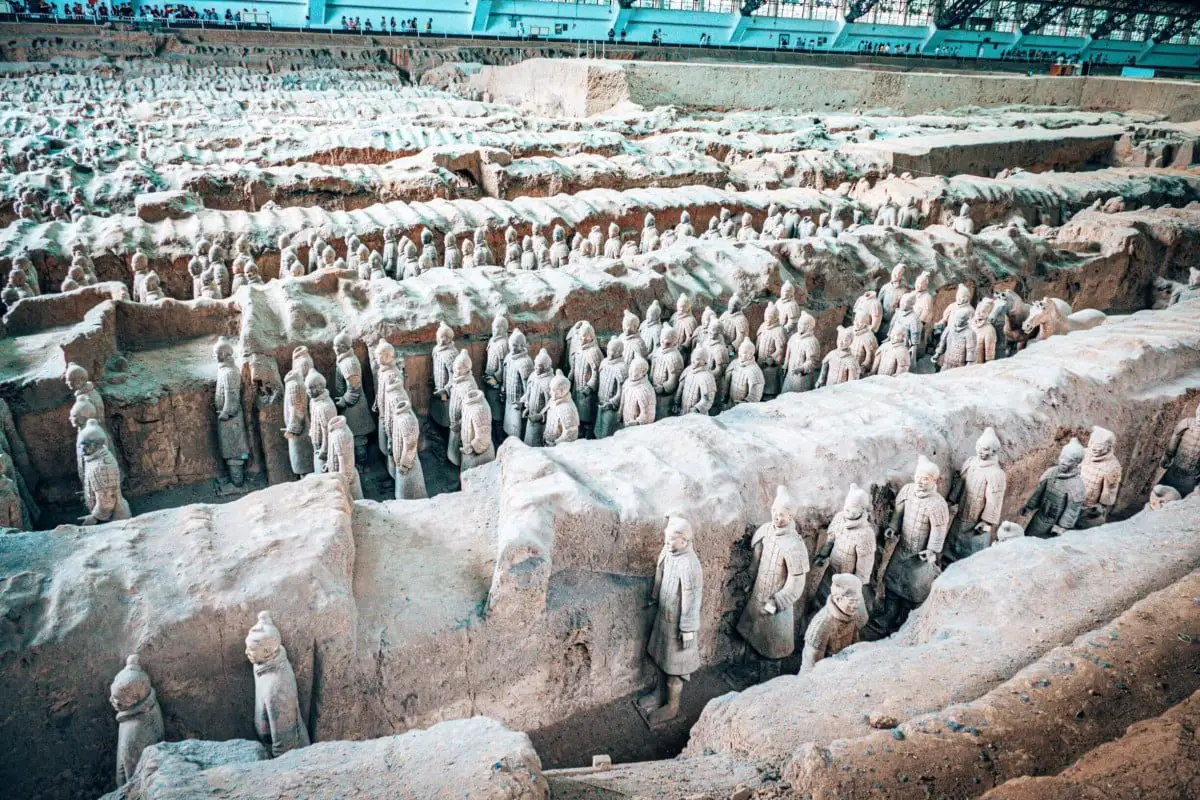
There are 3 main pits that are currently being worked on, and these pits are covered by huge buildings, so space to view the warriors isn’t as extensive as we’d initially expected.
It can get hugely busy as it’s a really important place for the Chinese, as well as being a world-famous tourist attraction. So, the earlier you can get to the Terracotta Warriors, the better. If possible, try to be there for 8am!
How to get there: From Xian’s main train station, buses depart every 10 to 15 minutes, the drive takes around an hour and costs 10 RMB (1.50 USD/1.15 GBP) per person. You can’t miss the buses as they have helpful guides putting you on the right bus!
It’s also important to note that the museum is quite expensive in comparison to many other attractions in China. At time of writing it was 120 RMB or CNY per person (17.00 USD/13.75 GBP), although we found a lot of incorrect information out there about how expensive it was!
If you’re looking for a guided option, why not try this one!
We aren’t usually people who opt for tour guides, but we actually wish we had a private tour around the Terracotta Army, as there is little information in English so it would have been interesting to find out a lot more history on the site.
Location: Lintong, Xi’an, Shaanxi
Open: 8.00am to 5.00pm daily
The Xian Bell & Drum Towers
After you’re back into the city and managed to get a bite to eat, next up are two of China’s best examples of Bell Towers and Drum Towers.
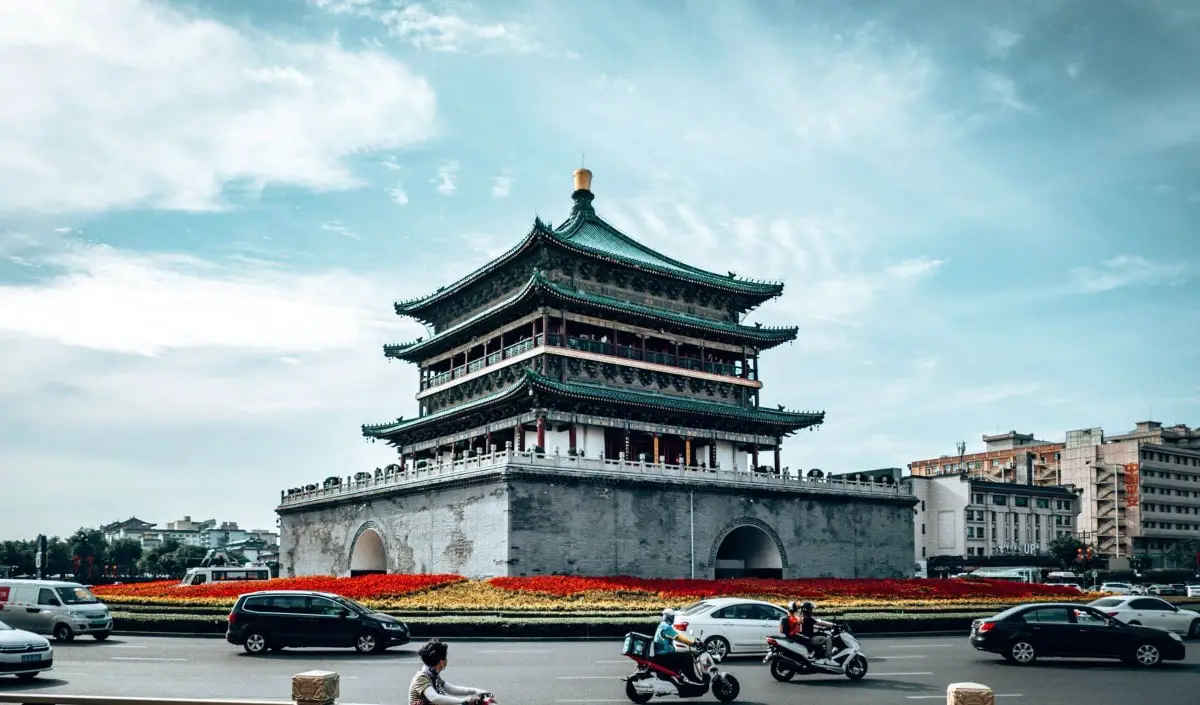
You’re probably a little like us in that we had no idea what these were before we got to China. Both buildings played hugely important roles in everyday life in ancient China. The bell in the Bell Tower would be rung each morning to signal dawn, and the start of the day. And the drums within the Drum Tower would be bashed to signal the end of the day. They were also places where city news and important information would be distributed to the town’s folk. The days before the internet hey….?!
The towers, located close to each other, are set in the middle of Xian old town, with the Bell Tower having been built in 1384 and the Xian Drum Tower constructed a few years before in 1380 – both during the Ming Dynasty.
The cost for entry into each of these Towers is 35 RMB per person per tower (5.00 USD/4.00 GBP). Although they also do a combo ticket, so worth looking into that.
Location: Zhonglou Shangquan, Beilin, Xi’an
Opening hours: 8.30am to 9.00pm (Apr – Oct) and 8.30am to 6.00pm (Nov – Mar)
Dinner in the Muslim Quarter
Located right next to the Xian Drum Tower, you’ll find one of the most vibrant parts of the city and the place to get some amazing local dishes for dinner.
Now, in a city that is over 3,000 years old, and one end of the famous Silk Road that connected Asia to the Middle East and on to Europe, it’s no surprise that there are some delicious influences from many regions of the world brought into the food here!
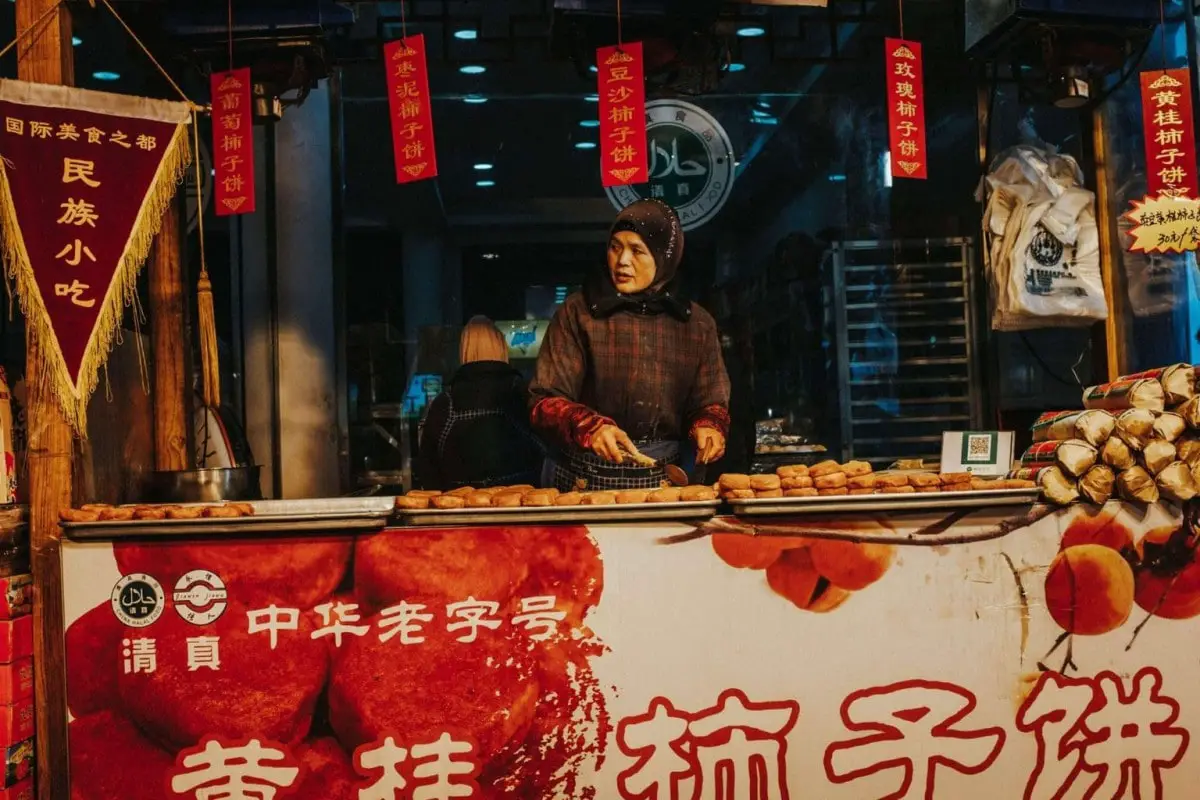
So prepare yourself for some delicious, beef and lamb buns (Roujiamo), cold rice noodles and lamb soup (Yangrou Paomo) with pita bread to dip.
Although if you’re not sure what you should be trying, why not try out a walking food tour?
Day 7 Xian
Walk Xian’s city walls
This was our favourite thing to do in Xian – walking around the old city walls. There is no better way to start day 7 of your 2 week China tour than with a quick 14km walk around the largest city walls in the world!
You can enter at many points along the walls, and there are four super impressive main gates to explore too. The walk is a really pleasant way to see different parts of the city and will take you around 3 hours to complete.
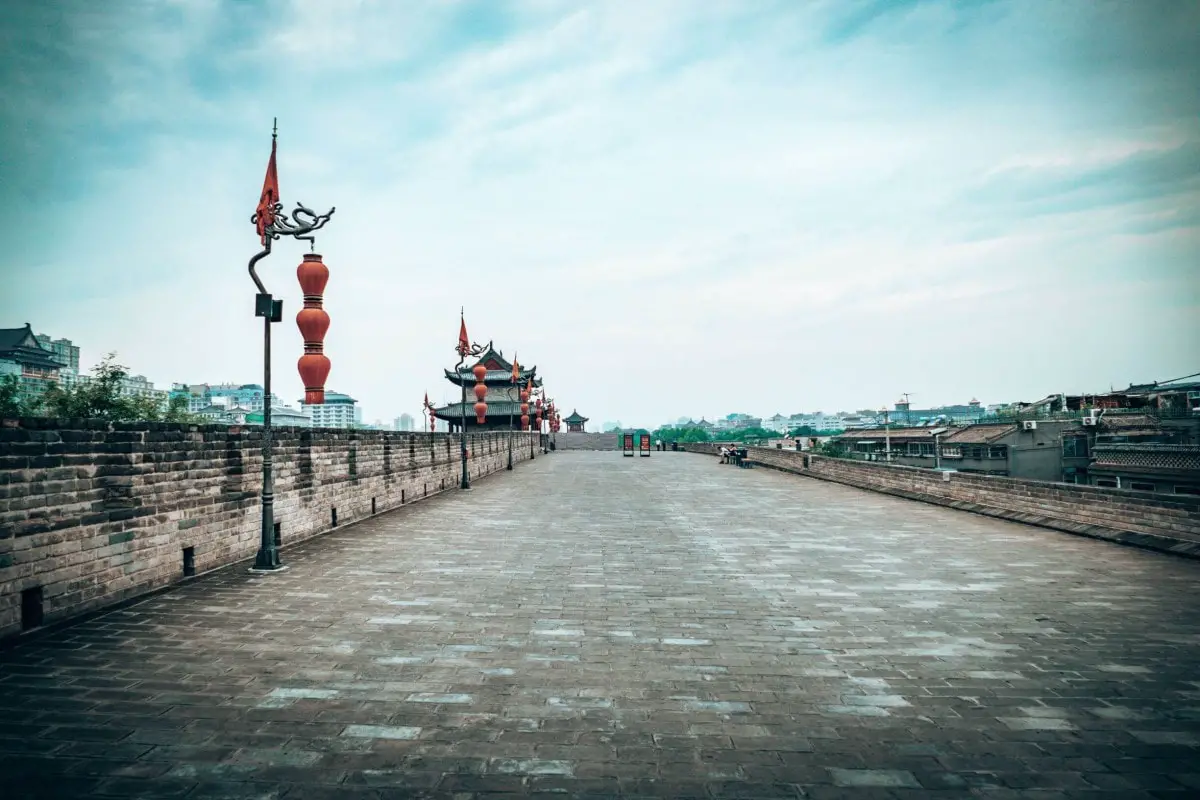
We started relatively early and were pleasantly surprised to have several sections totally to ourselves.
If you’re up for more of a tour of the Xian City Walls, then check this one out. You are also able to take a bike and cycle the walls, which is a fun way to explore or a better alternative if you’re pushed for time. Additionally, if you’re not that keen on walking, you can even take an electric buggy around the walls.
There is a fee to enter the ancient city walls at 54 RMB per person (7.60 USD/6.20 GBP). And then if you want to rent a bicycle that will cost you 45 RMB per hour on top (6.40 USD/5.15 GBP).
Open: 8.00am to 6.00pm (Nov to Apr) and 8.00am to 7.00pm (May to Oct).
Stele Forest, Beilin Museum
Set in the south of the city just inside the ancient city walls, is a really interesting museum that holds over 3,000 stone tablets (steles). This impressive collection has stone monuments that date back to the Tang Dynasty, the Imperial Family who ruled China from the 7th to 10th centuries.
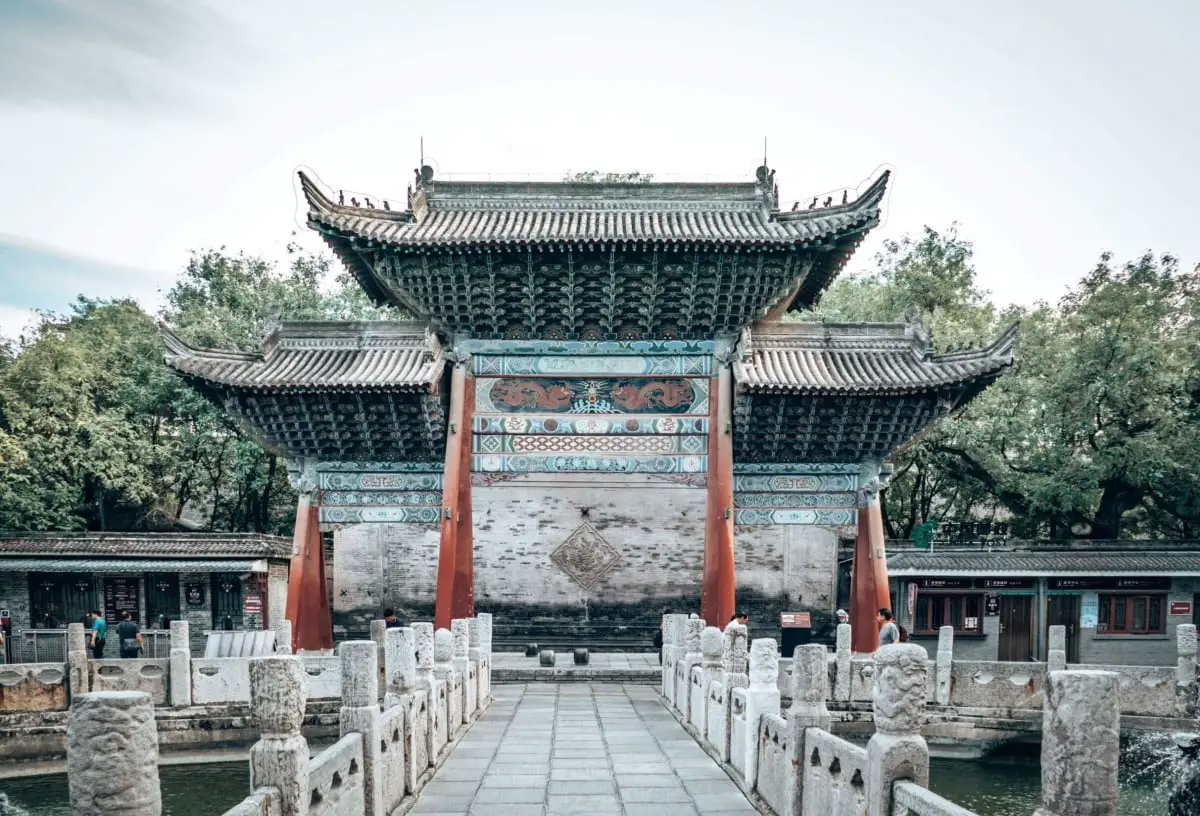
Entrance to the museum (which is also interestingly housed in a Confucius Temple) is 65 RMB per person (9.20 USD/7.40 GBP). But also check out the price for the Xian Walls and Beilin Museum combo ticket – you’ll save some money.
Location: 15 Sanxue St, Zhong Lou Shang Quan, Beilin, Xi’an
Open: 8.00am to 6.00pm
Try your hand at Chinese Calligraphy
Next to the Beilin Museum the area is awash with beautiful store and stalls of Chinese calligraphy. Even if you don’t fancy giving it a try, it’s worthwhile wandering around the streets watching the locals practicing this amazing art.
If you’re keen for the challenge you can give it a try at the Calligraphy Museum. Otherwise there are a load of local tours on offer.
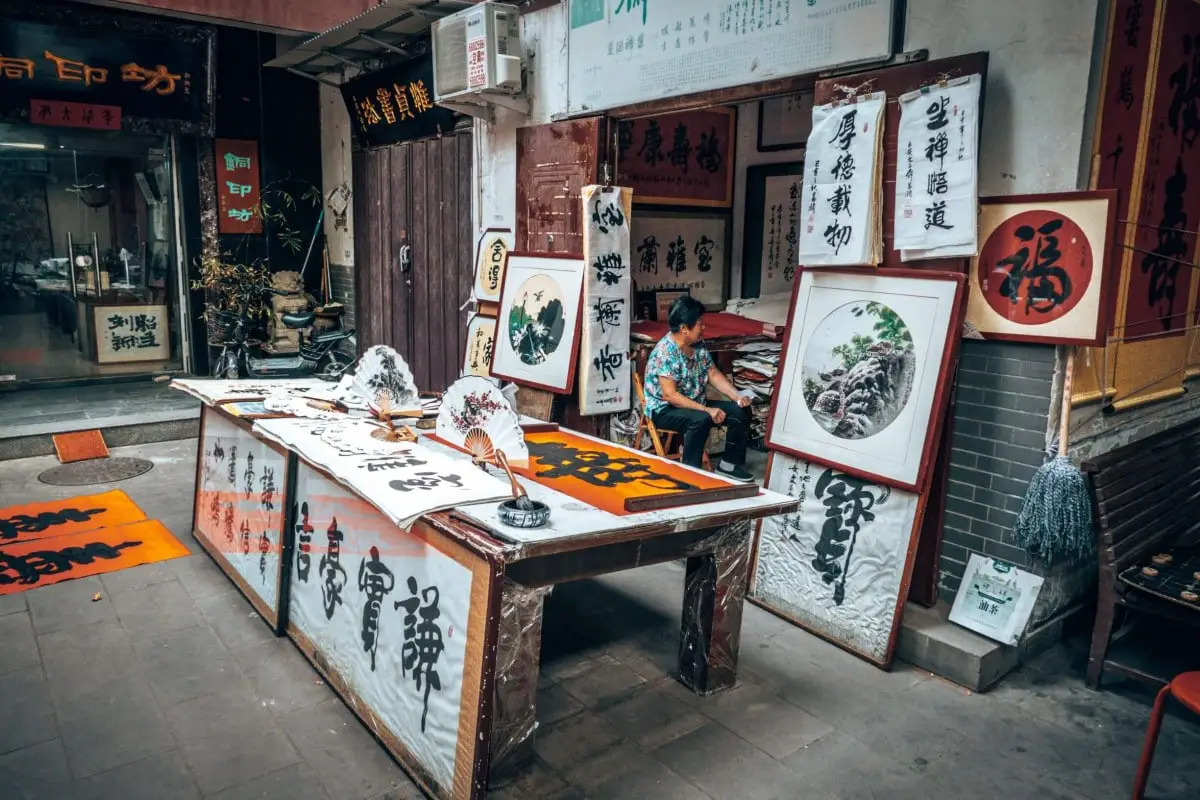
Bonus things to do in Xian
Mount Huashan
One of the best day trips in and around Xian and if you’re a lover of heights, definitely something to consider adding to your 2 week China itinerary is a trip out to Mount Hua Shan.
Although we personally haven’t done this we met a few fellow travellers who did, and loved it! You may well have seen the videos of the hike, known as the ‘most dangerous hike in the world’.
Technically it’s not the most dangerous, but you do have to walk across planks that are attached to sheer cliffs.
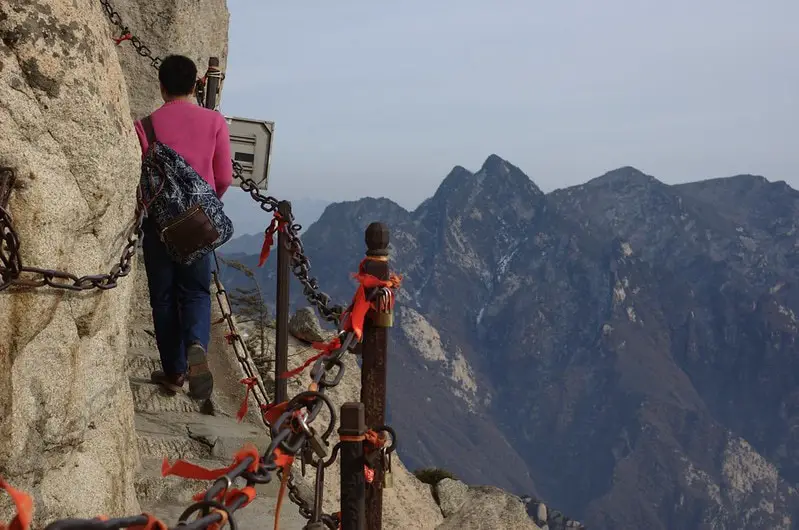
Photo Credit: Tak Wing / Flickr
With James’ fear of height, this isn’t our cup of tea!
Small Wild Goose Pagoda
Like its name suggests, this is a smaller version of the Giant Wild Goose Pagoda, although still very impressive and worth a visit if you have time.
Built in the Tang Dynasty in the 700s, the Small or Little Wild Goose Pagoda was also partially destroyed in the devastating 1556 earthquake. Meaning the building that used to be 15 storeys was shortened by a couple of tiers to make it safer.
You are also able to climb up the inside of the pagoda, which is very much worth the additional cost and effort! Tickets will set you back 30 RMB (4.25 USD/3.40 GBP) for entrance into the grounds, then 20 RMB (2.80 USD/2.30 GBP) extra to climb the pagoda.
Location: 72 Youyi W Rd, Beilin, Xi’an, Shaanxi, China
Open: 9.00am – 4.00pm daily (note: it’s closed on Tuesdays)
Shaanxi History Museum
If you’re a museum aficionado, it is well worth trying to carve out some time to see visit the Shaanxi History Museum.
One of the largest museums and best collections in the country, you’ll need a few hours to walk all the exhibitions halls. But it’s located quite close to the Giant Wild Goose Pagoda, so if you have the time it’s a great addition to your first day in Xi’an. And not to mention it’s free to enter, so a win-win. Although there are some fees for certain exhibits.
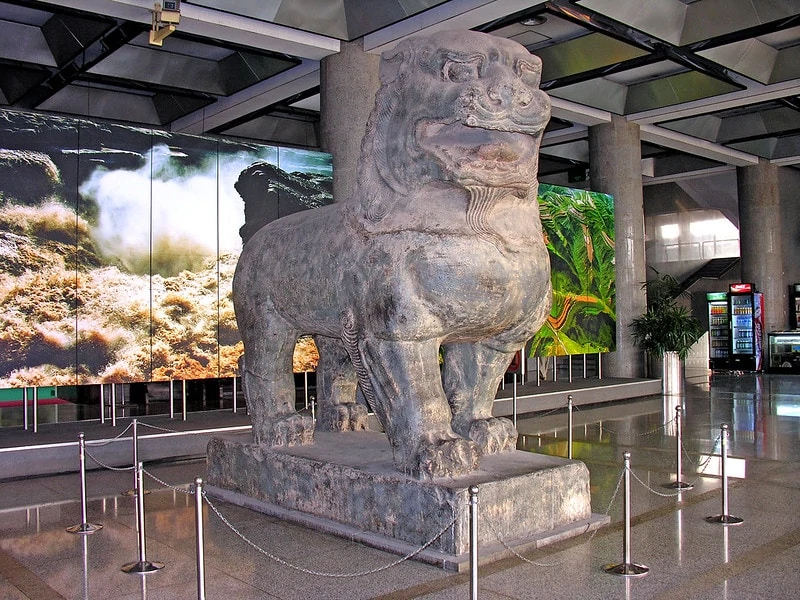
Photo Credit: Dennis Jarvis / Flickr
Location: 91 Xiaozhai E Rd, Xiao Zhai Shang Ye Jie, Yanta, Xi’an, Shaanxi, China
Open: Tuesday to Sunday, 9.00am – 5.30pm
Day 8 Xian to Chengdu
For day 8 of your 2 weeks China itinerary, we’ve kept it relatively light on activities, as it’s another travel day heading from Xian to Chengdu. Home of the Giant Pandas!
Chengdu Walking Tour
We’d suggest that you investigate taking either a morning bullet train or flight from Xian to Chengdu so this afternoon you can take in a walking tour of the city.
We were actually provided a walking map which we found really helpful, from our hostel, the Lazybones Poshpackers (more on them in a bit). Which was essentially a route around the Wenshu Monastery area, and took us the best part of 2 hours to complete including checking out the suggested attractions.
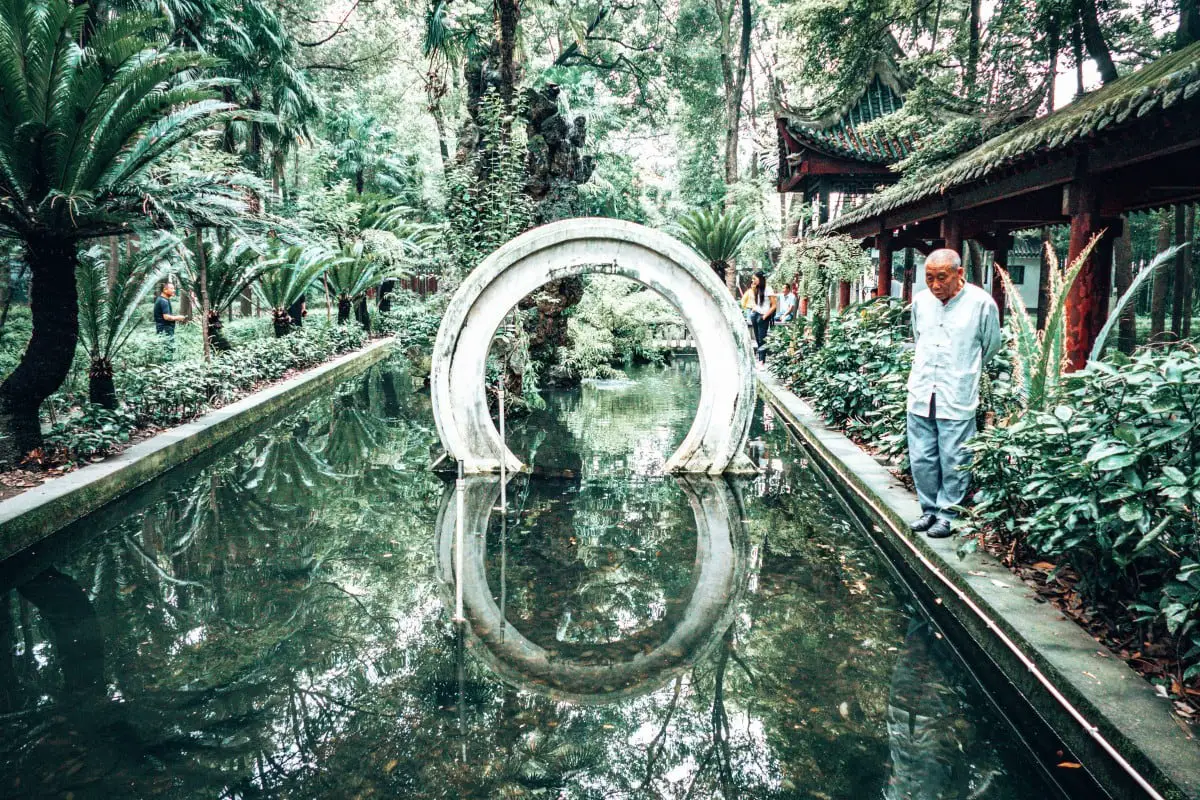
The route followed along the lines of: The Former German Consulate, the Temple Teahouse, Wenshu Monastery, Aidao Nunnery, Jinsha Nunnery and the local community market.
We found the Wenshu Monastery was a real highlight, with people learning tai chi in the grounds and a very peaceful atmosphere to the place.
Note: The Aidao Nunnery serves a lunch at 11.40 every morning, where you get to eat with the nuns, and is an amazing experience. Although this would mean you’d need to alter you itinerary a little to fit this in.
If you’re looking for more details, we’d suggest you reach out to Lazybones Hostel – we’re sure they’ll share the map. Or even better stay there! It’s a phenomenal place…
Getting from Xian to Chengdu
Bullet Train
A definite really good option travelling from Xian to Chengdu is to take the high-speed train, which will cover the 750km distance in around 3 hours.
Flights
Alternatively, if you’re looking to save a little time, check out the latest flight options from Xian to Chengdu. There are a few daily flights, and the flight time is around 1 hour 45 minutes.
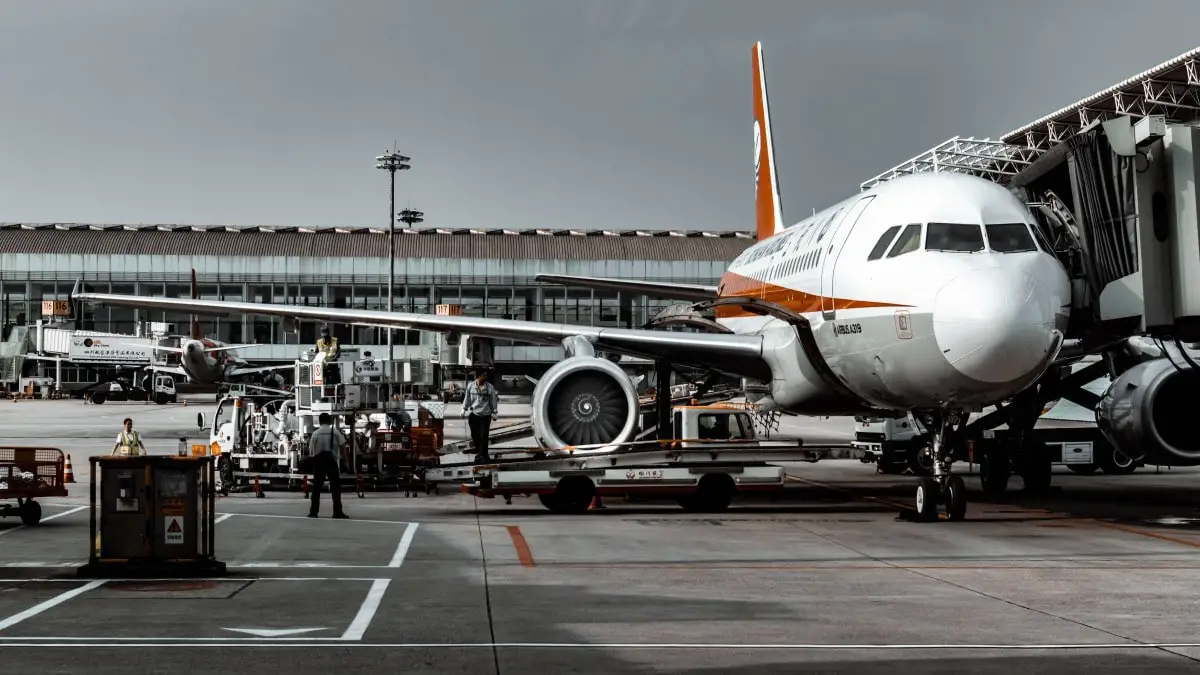
Where to stay in Chengdu
Budget: We’d highly recommend looking at the Lazybones Poshpackers for your time in Chengdu. It was one of the best hostels we stayed at on our China trip… great food, pool table, good atmosphere and really great rooms. The staff are also the best – they all speak fluent English and are so helpful and kind.
Mid-range: Looking for something a less backpacker but still affordable? Check out the Buddha Zen Hotel. Located right between the Aidao Nunnery and Wenshu Monastery so in prime position, the reviews are amazing, and the rooms look great.
Luxury: Located in the Chunxi Road area near lots of shops. If you’re looking for luxury, Niccolo Chengdu is the hotel for you.
Day 9 See the Pandas in Chengdu
Visit the Giant Pandas
Another monster bucket list item for anyone as part of their trip to China is to visit the Giant Pandas. The national symbol of the country, these cute critters are as adorable as you’ve seen in photos and on film. There is, however, nothing like seeing them in real life, and Chengdu is THE place to see them in China.

Located around 10km from Chengdu city centre (see below the best way to get there), the Chengdu Research Base of Giant Panda Breeding is the number one attraction in Sichuan. And surprisingly (to us at least) holds a ridiculous percentage of all the pandas in captivity.
Although it’s worth pointing out that this doesn’t feel like a zoo, the enclosures can be quite busy during feeding time. But saying that, the pandas are in what closely resembles their natural habitat and as the name of the place suggests, they are trying to help bring up the numbers of this endangered animal through world-class breeding programs.
Cost for entry was 55 RMB per person (7.80 USD/6.30 GBP), and you’ll need to buy your tickets at the counters next to the entrance.
Top Tip: Make sure you are in good position for the feeding of the pandas at 9am! This is when they are the most active of the day and the perfect chance to see them. If you go later in the day, you may miss them!
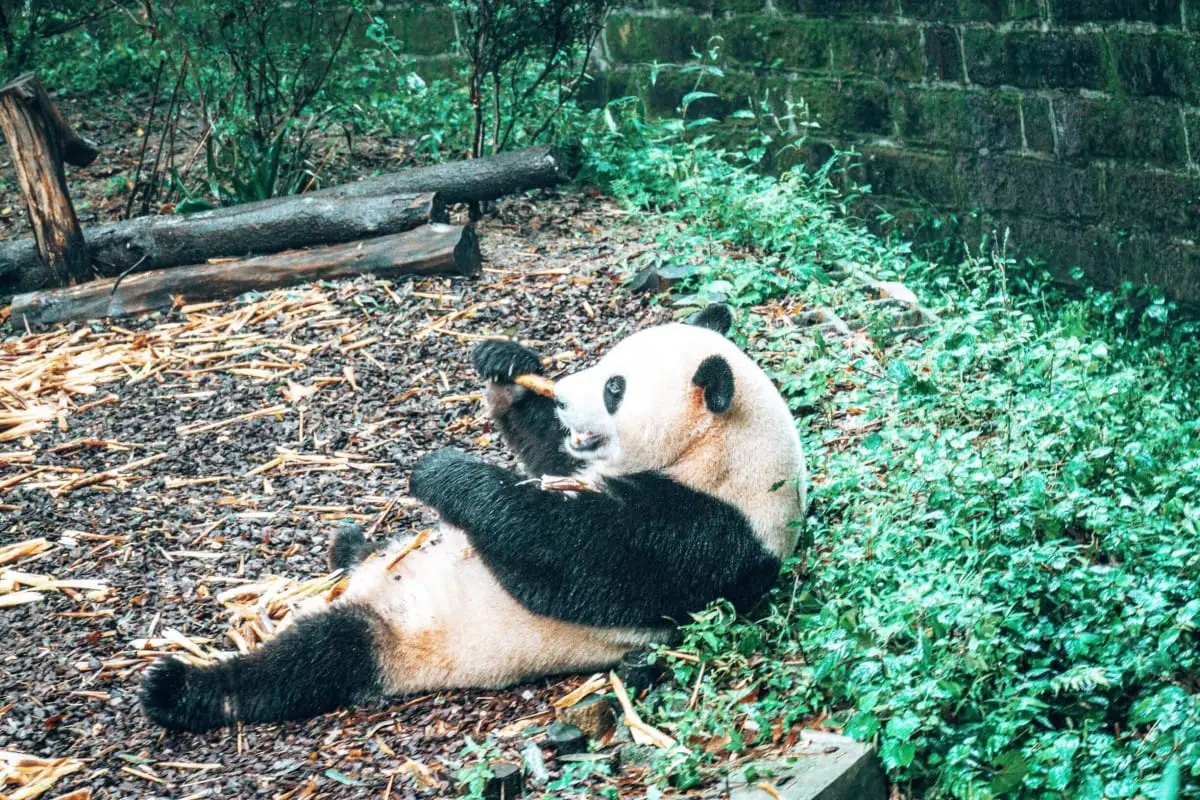
How to get there: So, we’ll admit it, we got a little lost trying to get to the Panda Research Base, but hopefully, our mistakes and lessens learned will help you not to get lost. Although we had read that there are a couple of ways to get to the centre, the easiest is to get off the Metro at Dong Wu Yuan Station (it’s on Line 3). Then head out of Exit B and go to the bus station (it’s not totally obvious when you get out of the station), then wait for either bus 198 or 198a. If in doubt, ask one of the helpful staff at the metro station – we did!
Want to have a tour guide for the Pandas and the Green Ram Temple? Why not check out this option.
Location: 1375 Xiongmao Ave, Chenghua District, Chengdu, Sichuan
Open: 7.30am to 6.00pm daily
Qingyang Palace
We spent around 3 hours at the Chengdu Research Base of Giant Panda Breeding, so as long as you’re not totally obsessed (yes, the breeding maternity ward with baby pandas may ensnare you for longer than you expect), then head over to the Qingyang Palace, also known as the Green Ram Temple.
Located on the edge of Culture Park to the west of Chengdu this Taoist Temple was first constructed in the Tang Dynasty, and offering a sanctuary from the busy street, there are some wonderful gates, halls and statues to see.
Location: 9 West Section 2, Ring 1st Road, Chengdu
Open: 8.00am to 6.00pm
Note: Qingyang Palace is not far at all from the Sichuan Museum, if you’re looking for another thing to add to the 2 weeks in China itinerary.
Eat Sichuan Food
And this evening, make sure that you head out to try some of the best food in China: Sichuan cuisine. Although it’s good to note that the food can be really spicy! Whether it’s the famous hot pots, spicy noodles or chicken slides, there is something for everyone.
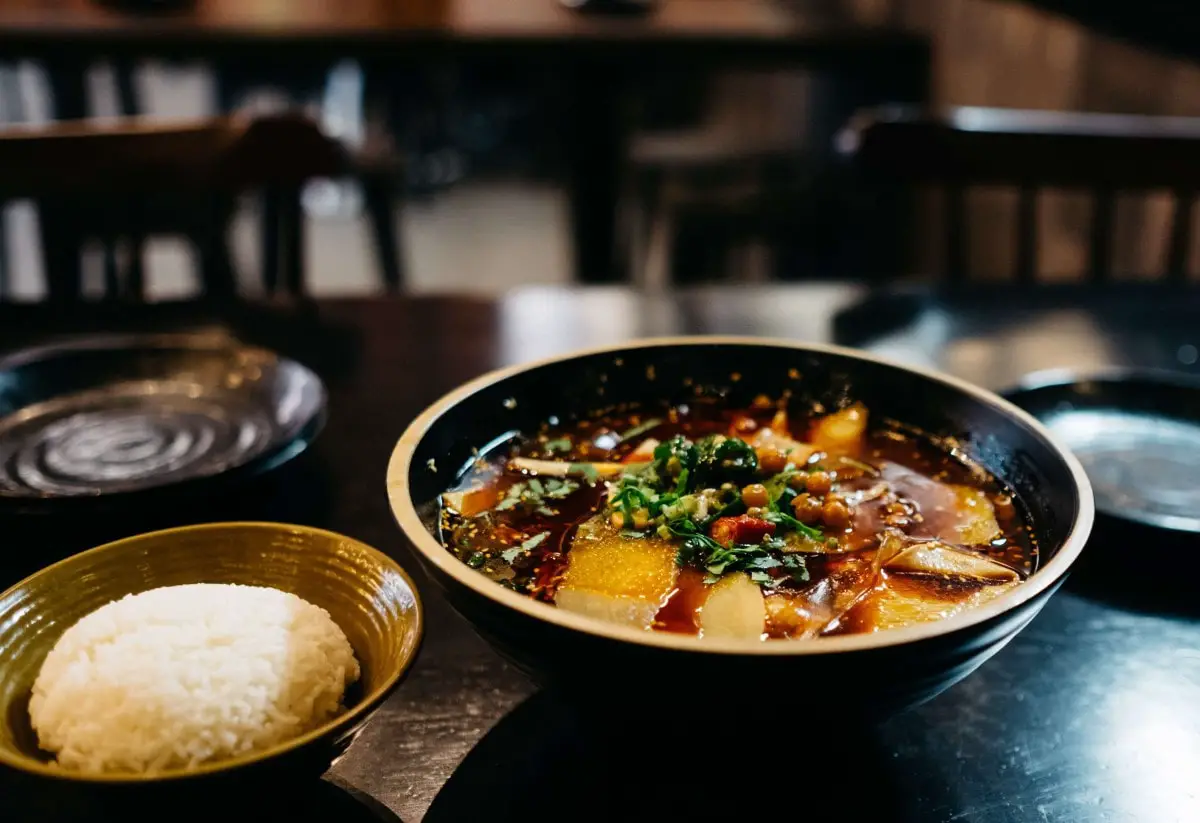
A few places to check out:
- Zhangjiaxiang Night Food Street – try out the Shihui Beer Duck!
- Wang’s Special Guokui – for the fried and baked buns
- Ming Ting restaurant
- Furongshuxia Hot Pots
Bonus: Trips from Chengdu
Leshan Giant Buddha
If you’re looking for another way to extend your time in Sichuan and add a bit more length to your 2 week China itinerary, then we’d highly recommend a day trip to Leshan.
Located around a 2-hour drive south of Chengdu, the 140km trip is very achievable in a day given the high-speed train service that takes less than an hour to get there!
The Leshan Giant Buddha is a 71m high Buddha statue that was carved straight out of the rock during the Tang Dynasty (completed around the 800s having taken 90 years to carve out). The Buddha statue is the largest in the world and situated at the meeting point of the Min and Dadu rivers, it is an amazing sight.
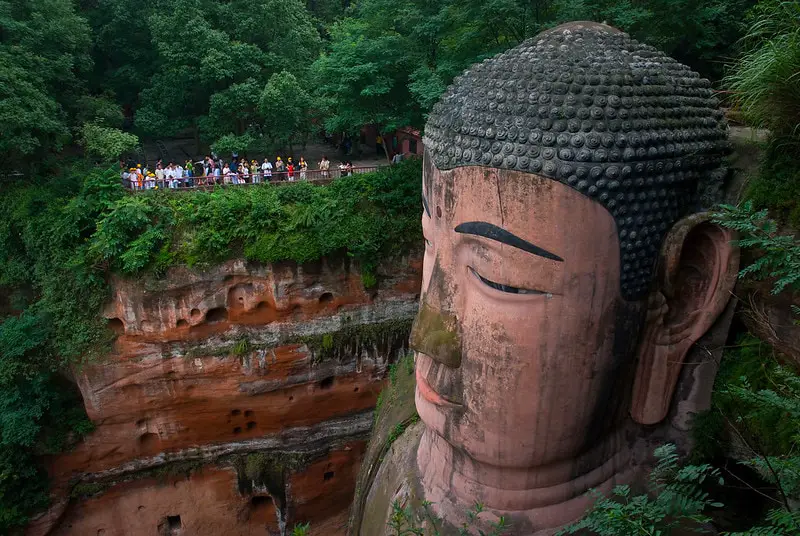
Photo Credit: Vincentraal / Flickr
We’ve also heard that it’s well worth taking the time to explore the Buddha park that contains more than 3,000 statues, including the largest in the world reclining Buddha.
Location: 2345 Lingyun Rd, Shizhong District, Leshan
Open: 7.30am to 6.30pm
Tibet
Something that we only found out when arriving into Chengdu was that this southwestern province is actually the most commonly used gateway into Tibet! Although you’ll need to add a few days at least onto your China itinerary if you’re keen to visit Tibet.
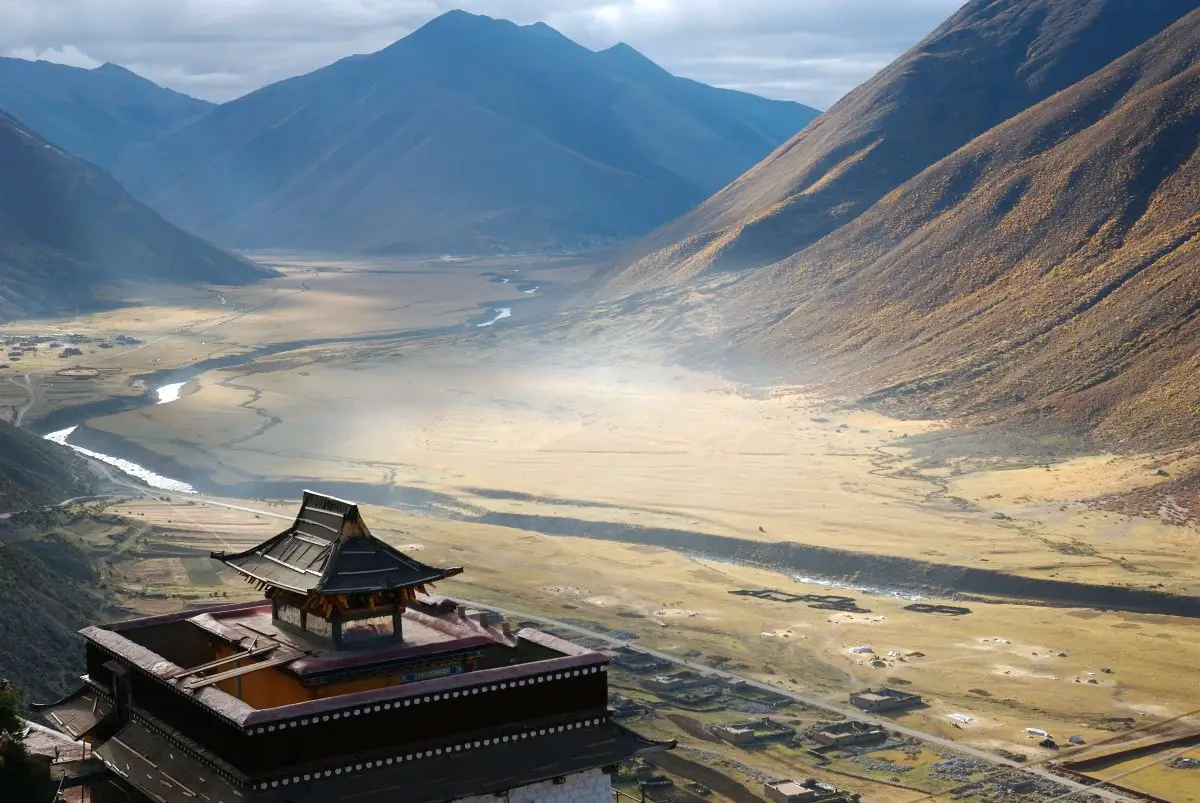
Whether you want to take a flight to Lhasa (which will take just a couple of hours) or the much longer Qinghai-Tibet train, which takes a couple of days, this is a trip of a lifetime, so if you can afford the time and costs, make sure you add it onto the list…
And, if you can make the time for the train journey, it apparently passes some of the most stunningly scenic places in China. So although it takes a very long time, it is undoubtedly worth considering.
Note: You’ll have to be part of a tour group to travel to Tibet, who will apply for your Tibet Travel Permit on your behalf! Disclaimer: we haven’t been to Tibet yet, so can’t recommend a company to provide tours…
Day 10 Chengdu to Zhangjiajie
Coming in a very close second to the Great Wall of China, has to be Zhangjiajie National Park, or the Wulingyuan Scenic Area as it’s officially known. And although not the easiest to get to, this is another absolute must visit place on your 2 weeks China itinerary.
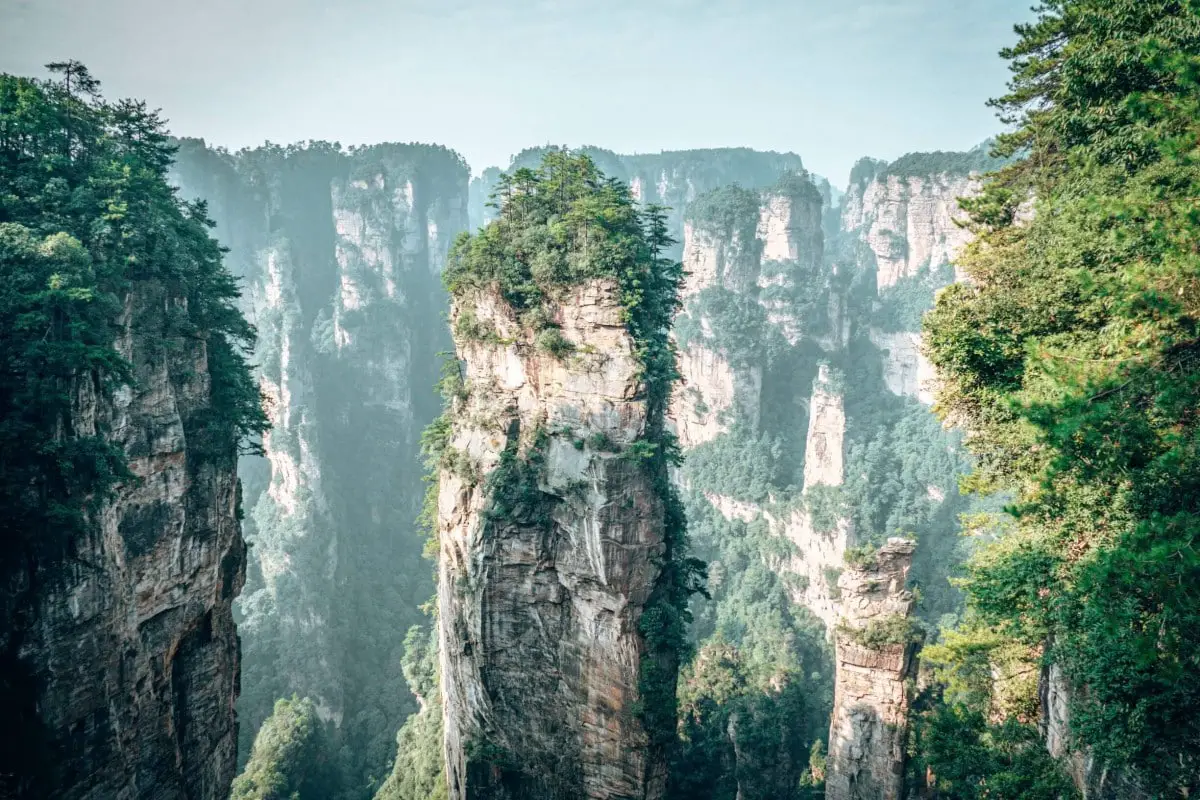
You may have already seen Zhangjiajie National Park before and not even known it, as its’ famous mountains are the inspiration for the floating Hallelujah Mountains in James Cameron’s blockbuster film Avatar.
Before we went to Zhangjiajie National Park, we found the information a little confusing, so have also put together this comprehensive Zhangjiajie itinerary with everything you need to know.
What is Zhangjiajie?
When people mention Zhangjiajie, they are usually referring to the Wulingyuan Scenic Area, which is home to 4 sections (Zhangjiajie National Park, Tianzi Mountain, Yuanjiajie and Yangjiajie). Although the Zhangjiajie name has stuck for the whole region.
But, located in the northwest of Hunan Province, Zhangjiajie is actually a city (and quite a large one at almost 1.5 million inhabitants) and the place where you can get the cable car to Tianmen Mountain.
All that said, you’ll want to base yourself in Wulingyuan, as it’s much better for accessing the national park.
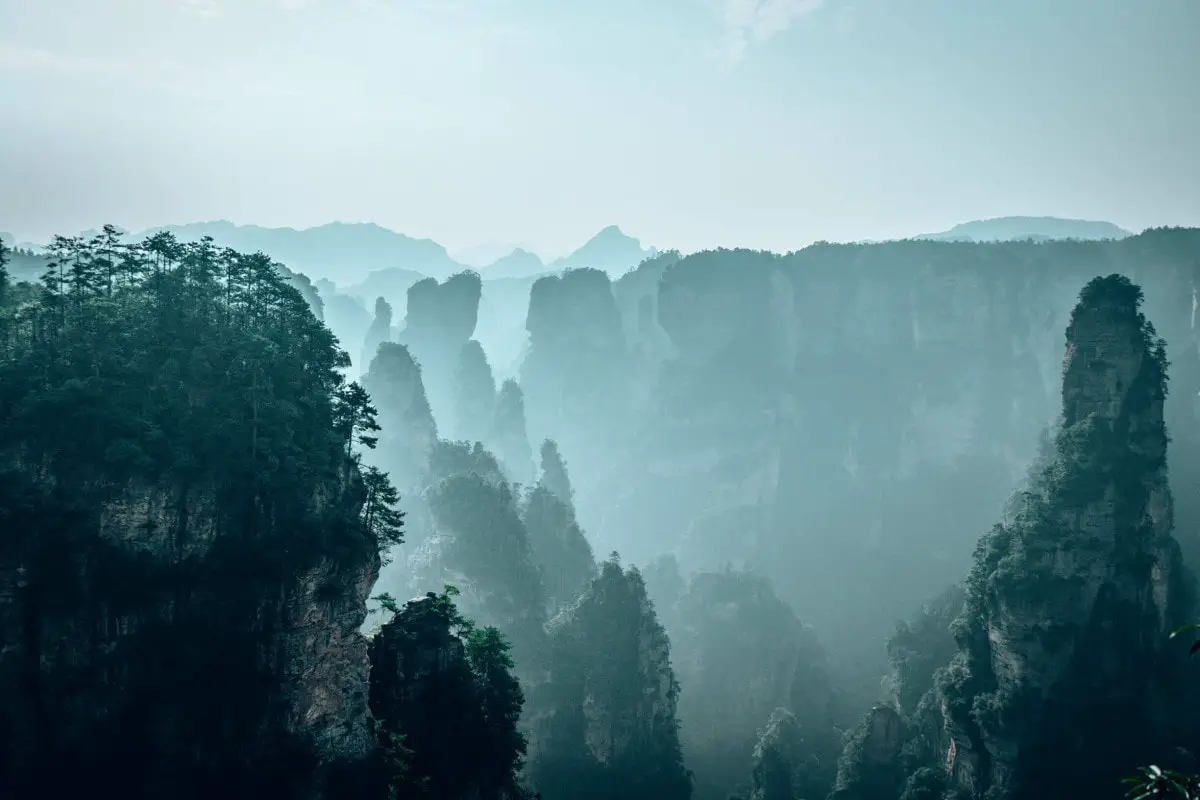
Tianmen Mountain
Having arrived into Zhangjiajie city this morning, it’s a good idea in the afternoon to head up the cable car (or by bus) to Tianmen Mountain.
Note: You’ll have to contact your accommodation beforehand and ask them to reserve tickets for you. The tickets can get sold out, but all your accommodation will need is approximately when you’d like to go up (afternoon slot should do) along with a copy of your passport.
Once you arrive at the cable car base station, you can collect your physical tickets from the ticket collection counter. You will then either take the cable car up and bus down, or bus up and cable car down – depending on which ticket you can get. The following is based on taking the bus up and cable car down, but if you’re doing the alternative, just do this in reverse!
Bus Ride – 99 Turn Drive
One of the more exhilarating bus rides of our lives, you will first head to buses in the car park of the cable car station, the first of two bus rides. Initially, the buses will take you to the bus base station, around a 10-minute drive from the cable car.
You’ll then transfer to a new bus, via another ticket check and short queue. And this is where you have a wild drive up the side of the mountain on what turns out to be a road with 99 hairpin turns!
The ride takes around 20 minutes and although slightly hair-raising, you’ll be afforded some stunning view before being dropped off at the base of the Stairway to Heaven, where you’ll start exploring Tianmen Mountain.
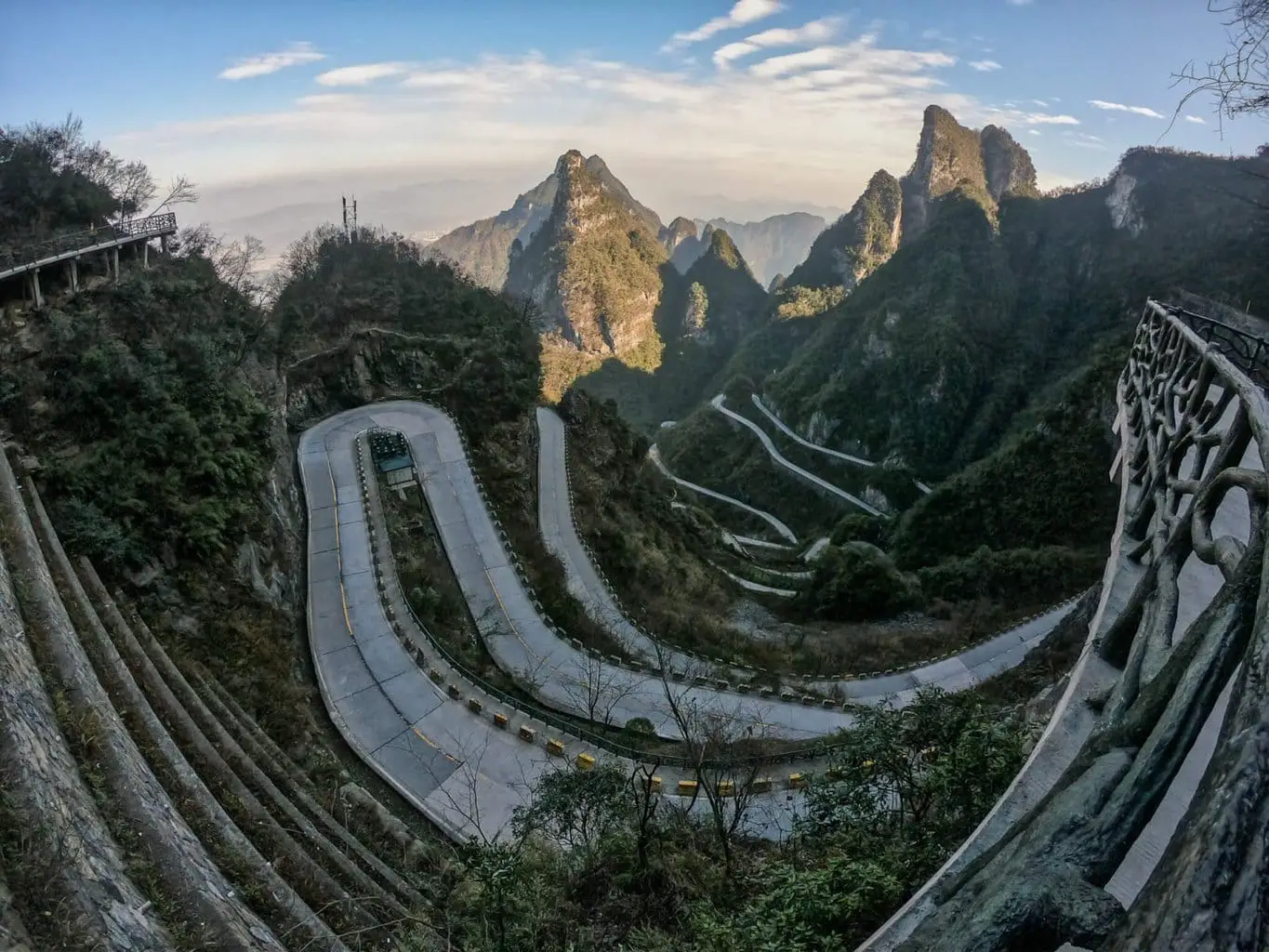
Stairway to Heaven
As you get off the bus, straight ahead of you is the imposing, and utterly huge hole in the mountain, with a massive stairway leading up to the ‘gateway to heaven’.
There are 999 steps to reach the top of the staircase, but don’t worry if you’re not that keen on walking, as you’ll find in most places in China it’s very well set up and they have escalators if you can’t hike the stairs.
When you reach the gateway to heaven you have amazing views back into the valley, and then will start the remainder of your ascent to the top of Tianmen Mountain – a journey which consists of 7 very long escalators to take you all the way up!
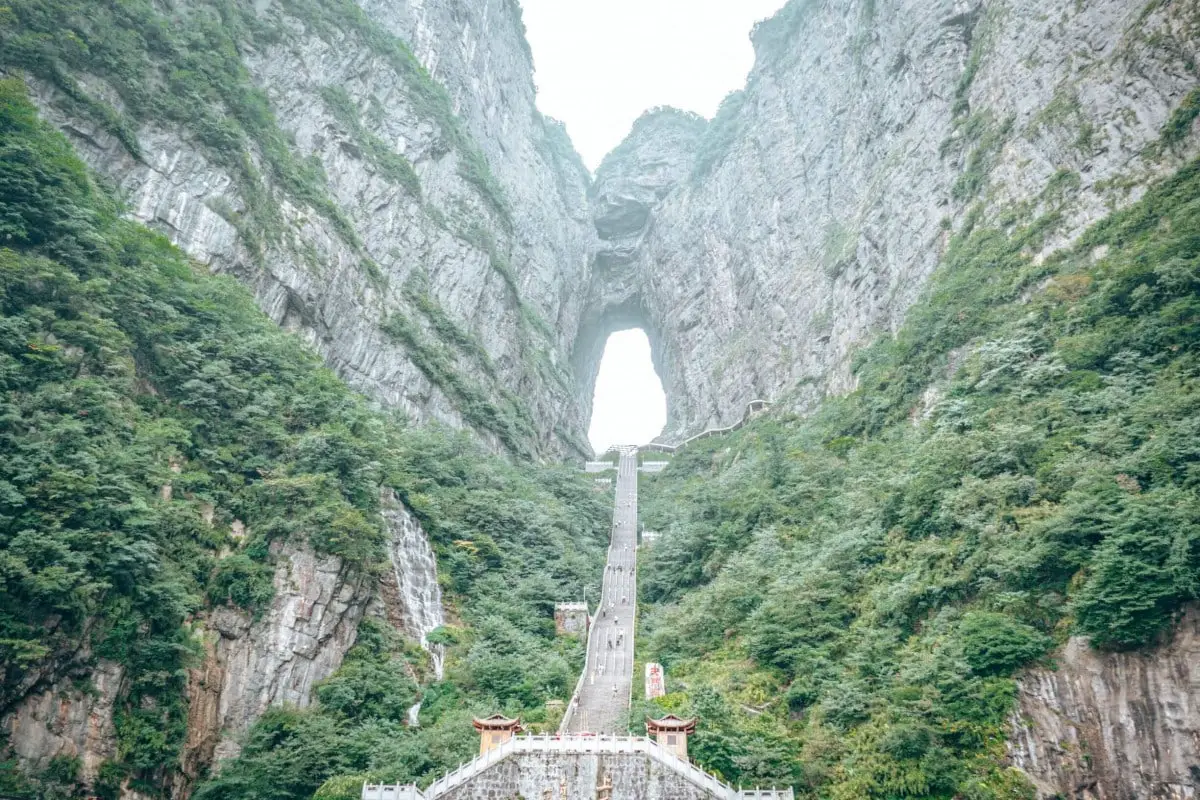
Walking around Tianmen Mountain
At the summit, you’ll then be able to walk on either the East or West walkways or – like us – you might want to walk all the way around the summit. It takes around 4 hours and isn’t super strenuous.
As you walk around the summit, here are some very impressive walkways,that seem to cling onto the side of sheer drops, and there are 3 glass walkways that you can also take on!
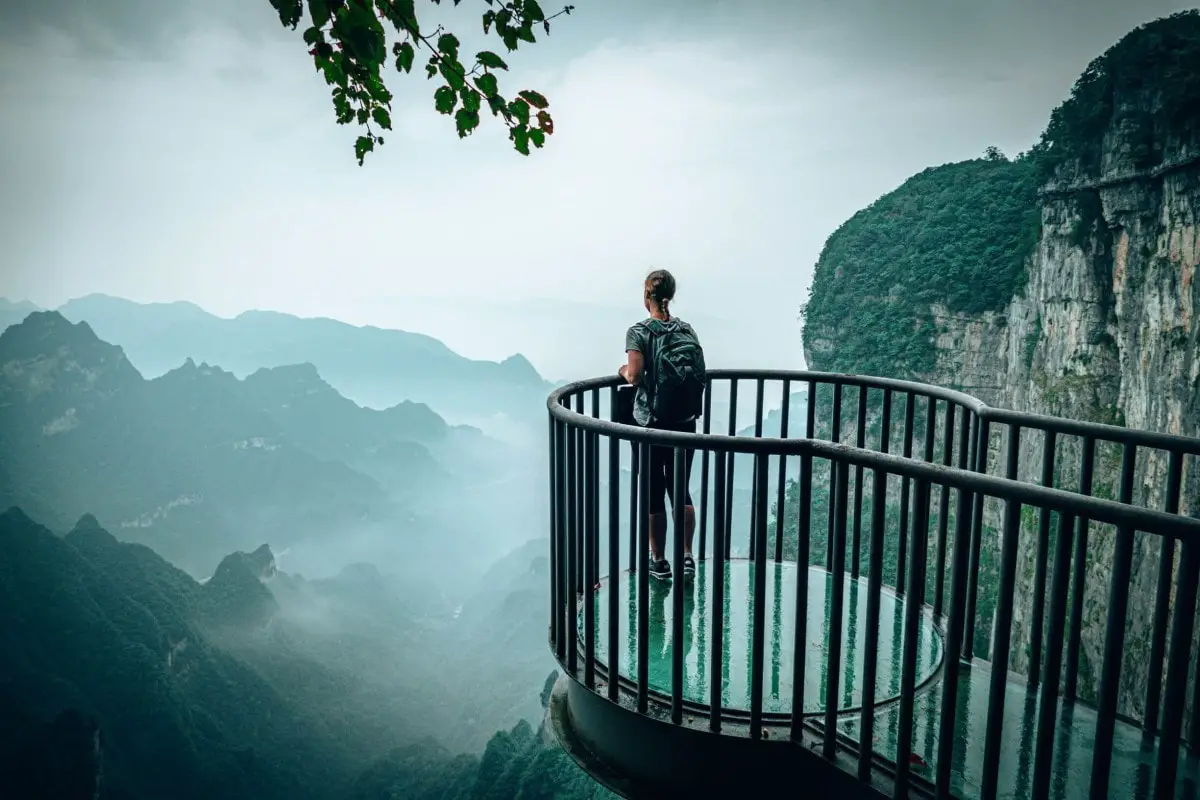
Cable car down the mountain
And once you’ve had your fill walking the summit, you’ll have a very relaxing cable car ride back to town. The 30-minute cable car is one of the longest cable car rides in the world (yeah, it’s China – they just do it bigger and longer!).
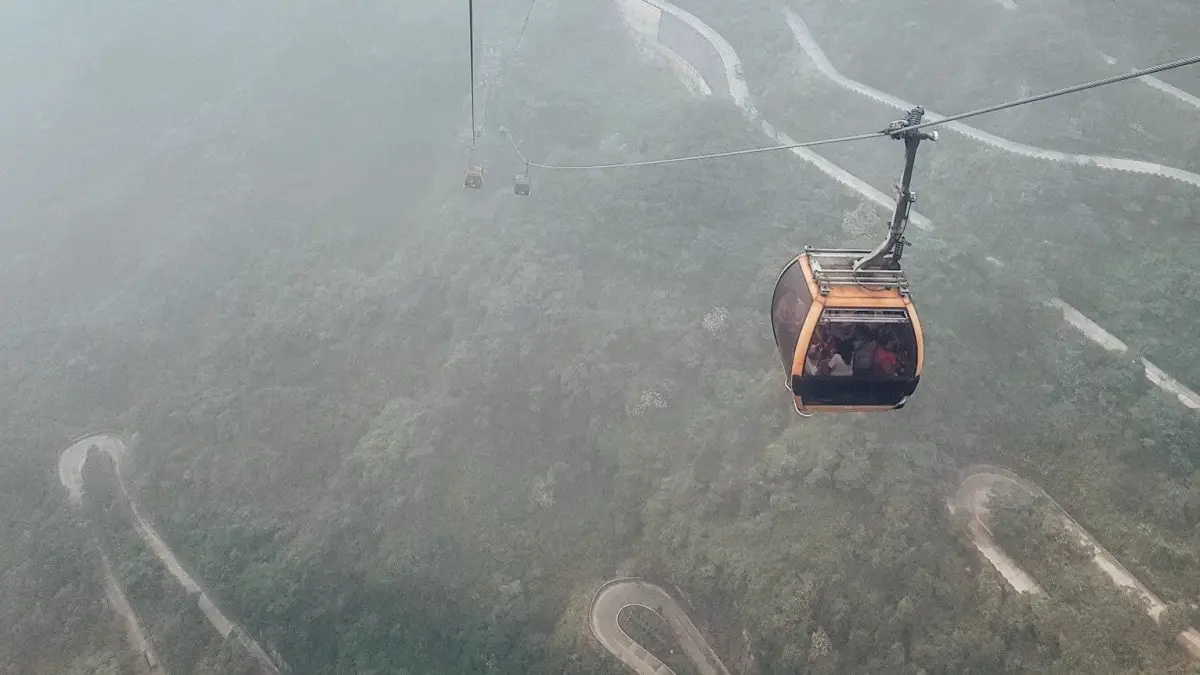
The cost for Tianmen Mountain, including the bus one way, and cable car down is 261 CNY (37.00 USD/30.00 GBP).
Cable Car location (ticket collection): Dayong Rd, Yongding District, Zhangjiajie
Note: You’ll be doing a lot of walking over the next couple of days exploring the Wulingyuan Scenic Area, so don’t over do it and make sure you wear super comfy shoes!
Getting from Chengdu to Zhangjiajie
Flight
You’ll definitely want to take a flight from Chengdu to Zhangjiajie (Dayong Airport) as alternative journeys take a lot longer than using other transport methods. However, as we write this, there are no direct flights, and you’d have to fly via Changsha or Guangzhou.
It may actually be best to fly on the evening of day 9 of your itinerary given current flight schedules. But check out the best flight options and prices here.
Train
If you are keen to take the train the fastest train is an overnight one, departing Chengdu East at 7.00pm and arriving into Zhangjiajie West around 10 hours later at 5.00am. So, similar to the flight option, you may want to look at travel on the evening of Day 9 of your 2 week itinerary.
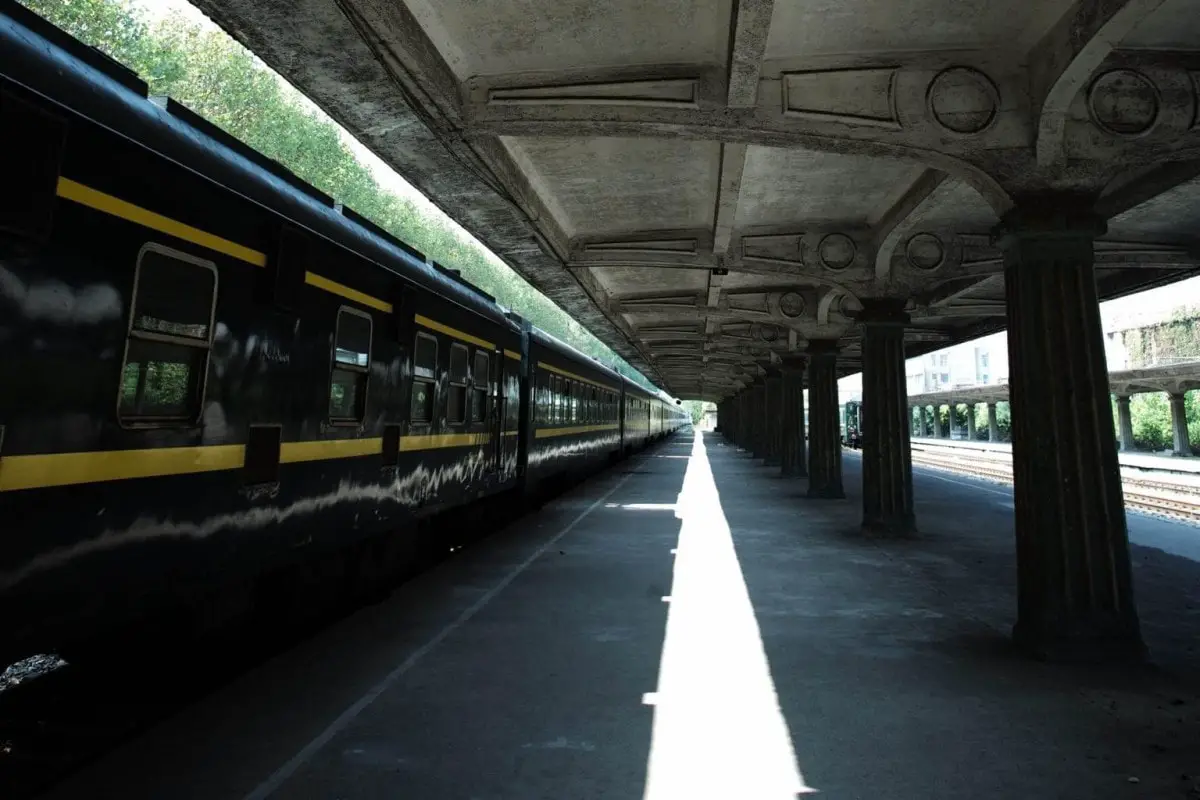
We have also heard rumours that there will be a new bullet train service into Zhangjiajie, but we haven’t any updates on that yet!
Where to stay in Zhangjiajie
We’d recommend that you look to stay in Wulingyuan tow over Zhangjiajie city for your time in this area. Although Tianmen Mountain is reached from Zhangjiajie, the national park entrances are easier from Wulingyuan – and if you stay here, you can walk to the park entrances each morning, rather than the 45 minute to hour bus ride between the two.
Budget: If you’re looking for the best backpackers in Wulingyuan, try out Wuling Yuantu Youth Hostel. Not only is it perfectly positioned right at the ticket office, it has a great feel to the place and rooms are super.
Mid-range: If your budget can stretch to it, we’d recommend that you go for the Maosao Family Hotel (it’s where we ended up staying). A 15-minute walk to the main park entrance, near bakeries to stock up for the morning feed, it has lovely rooms with wooden features and soft white sheets.
Luxury: With Zhangjiajie being a major Chinese attraction, there are a number of great high-end hotels in Wulingyuan. Although our number one pick would be the Pullman: plush rooms, all the amenities that you’d expect and the restaurant gets really great reviews
Day 11 Zhangjiajie
The Wulingyuan Scenic Area (and Zhangjiajie National Park) is the most beautiful natural place that we visited in China. It’s like the Grand Canyon for awe, mixed with Halong Bay for beauty. And then add some!
Getting your tickets: You’ll need to purchase a 4-day pass which costs 248 RMB (35.00 USD/28.25 GBP) on the first morning you arrive at the park. You’ll need to bring your passport with you on the first morning when you purchase your tickets.
Top Tip: Arrive just before 7am on this morning, and you’ll get your tickets before anyone else. We arrived at about 6.55am and were on the first buses into the park!
Bailong Elevator
As soon as you have your ticket, head to the buses and say to the staff that you’re going to the Bailong Elevator (also known as the Hundred Dragon Elevator) – they will pop you onto the right vehicle!
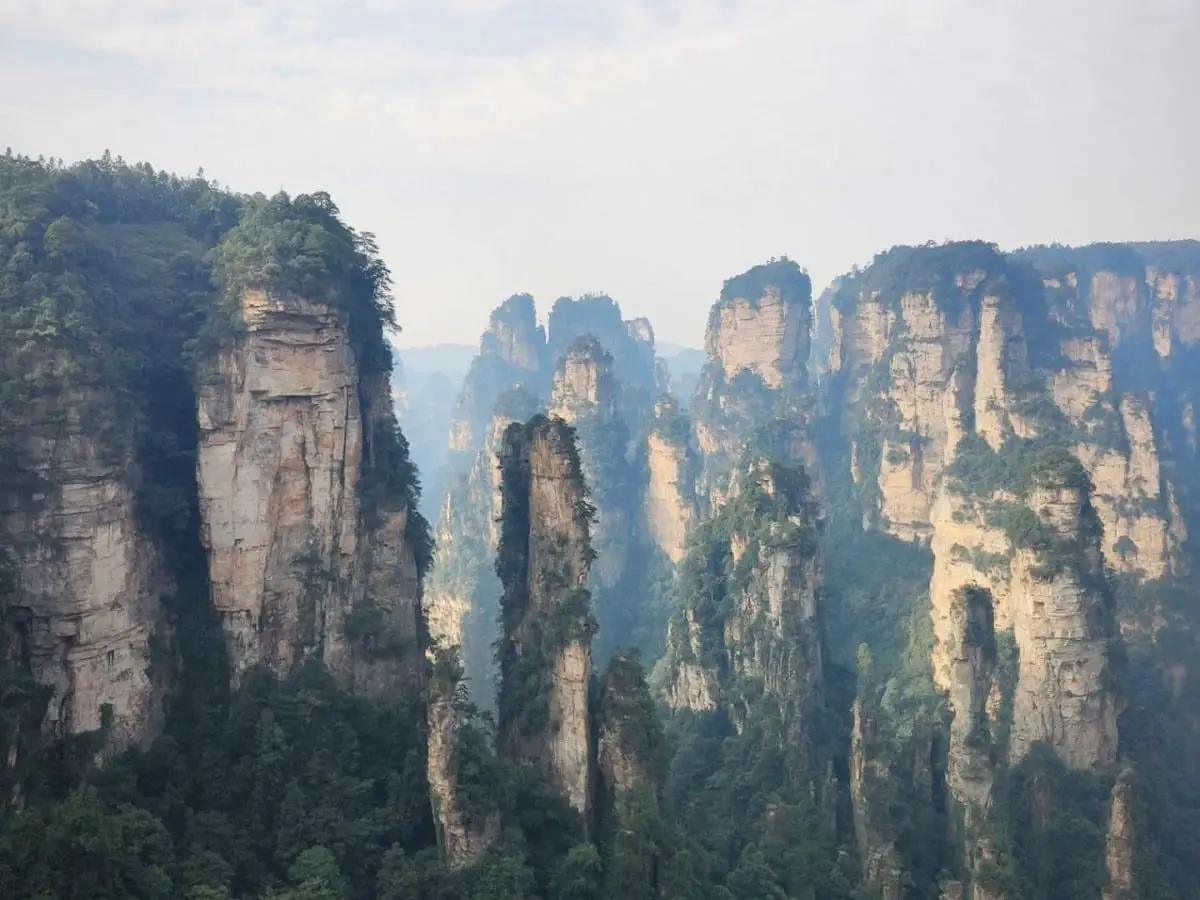
The elevator takes you to the top of the mountains in the Yuanjiajie section, and the elevator ride is worth the additional cost. But if you’re super keen on hiking, you can walk up instead.
When you get into the lift, try and get to the glass front. From here you’ll have the best views of the mountains as you ascend. And boy, is it some view….!
Note: There is a cost of 72 RMB for the Bailong Elevator (10.25 USD/8.25 GBP) which you pay for at the base of the elevator!
The Avatar Mountains
From the top of the Bailong Elevator, you will be taken on buses (yes there are buses on the mountain tops), which take you between the major attractions and viewpoints.
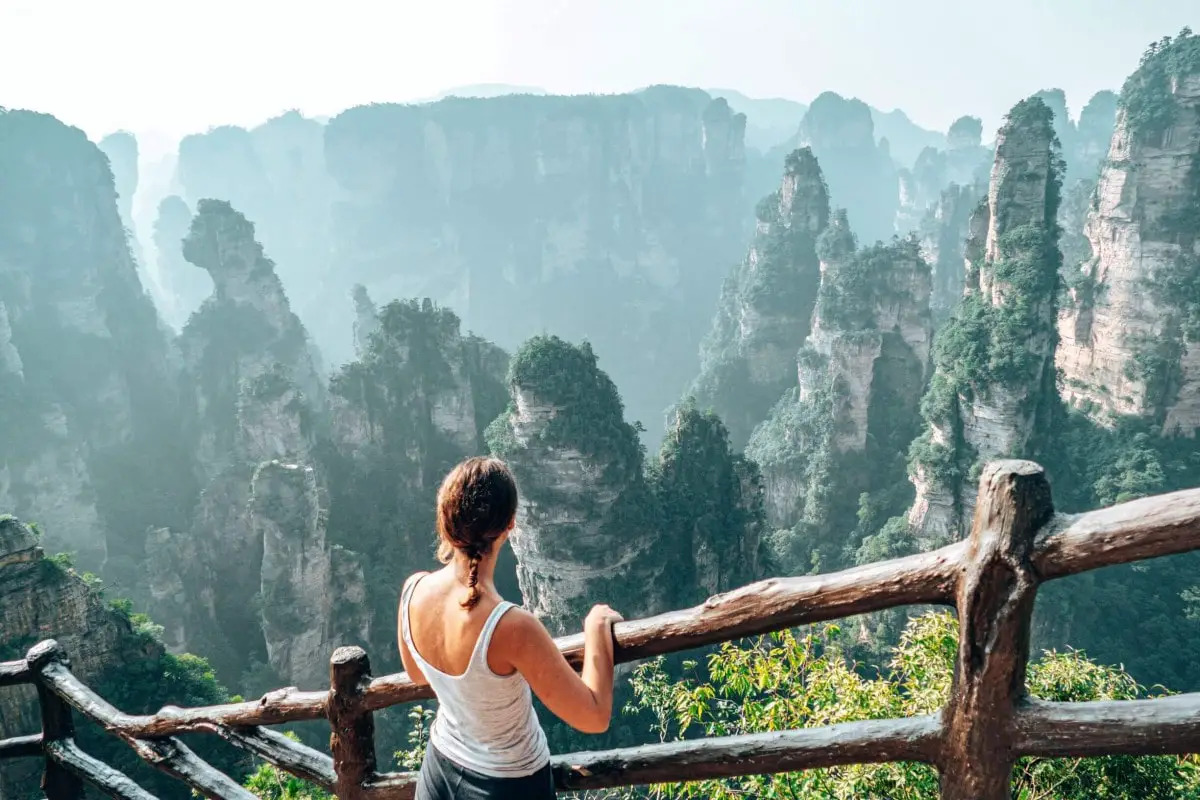
First stop that you’ll arrive at in the Yuanjiajie area is the viewing platforms of the Southern Sky Columns, the inspiration for the Hallelujah Mountains in Avatar!
Other highlights of this section include the First Bridge Under Heaven and the Lost Souls Platform. And will take you around 90 minutes to complete.
Yangjiajie Section
After finishing your walk through Yuanjiajie, hop on a bus over to the next section of the park: Yangjiajie.
Another 90 minute walk in this section of the park will take you past highlights including Tianbo Mansion viewpoint, the ancient Wulong Village and a pretty exhilarating climb up to see the Natural Great Wall.
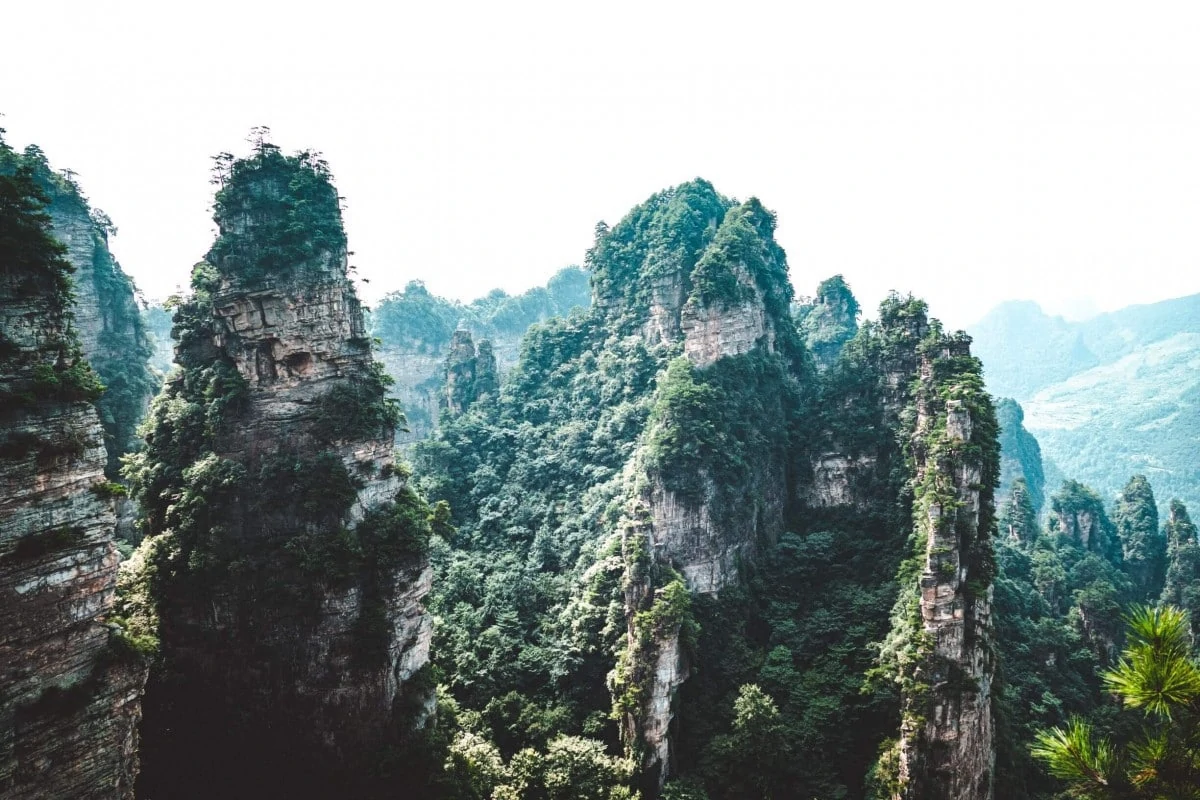
Tianzi Mountains
Your final section of the park for today is to visit probably the most famous section: the Tianzi Mountains.
So after returning to the Yangjiajie Bus Station, get the bus to the Tianzi Mountains. As the most commercialised part of the park, you’ll even find a McDonalds here… which is a bit of a shame and taints the absolute beauty of this place.
You’ll then have two options, either to head down on the cable car or walk down. We walked and are definitely glad that we did. Whichever option you choose, make sure that you check out the Warrior Taming Horse Lookout – for us, it was the most spectacular of the day.
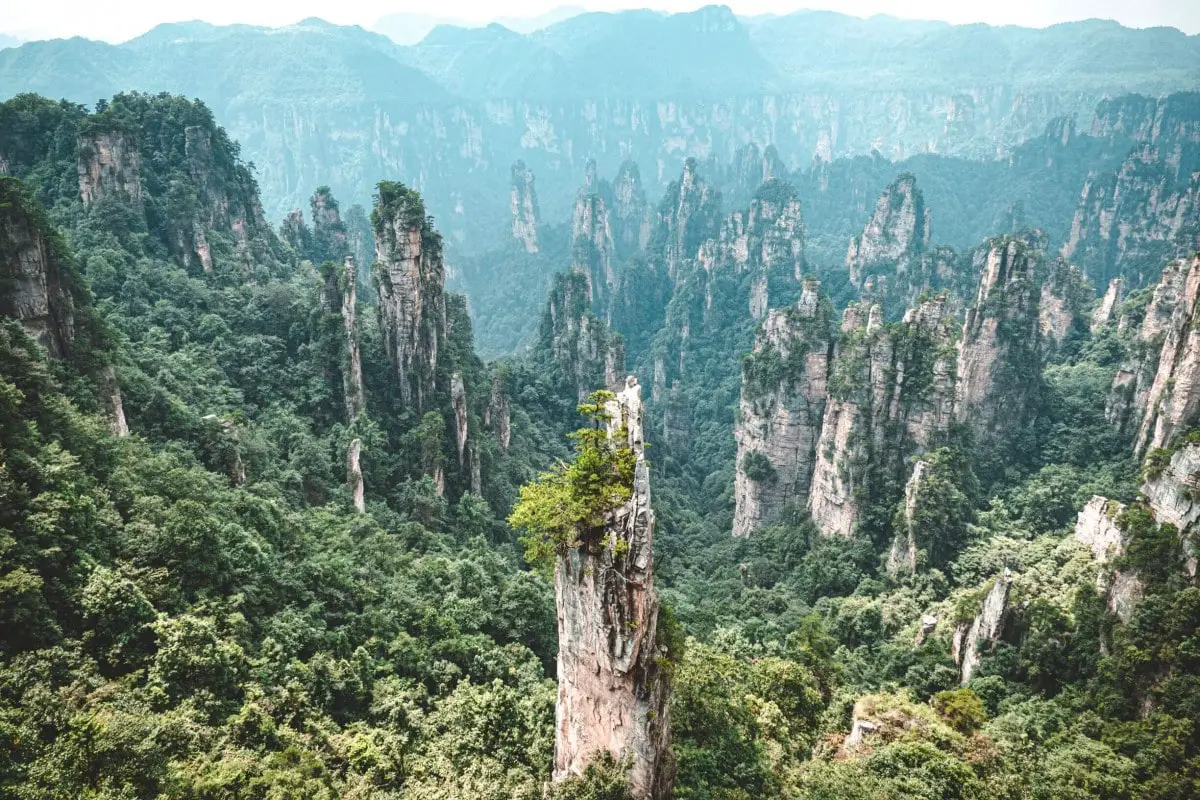
The walk down also takes in the Southern Heavenly Gate and Ten Mile Natural Gallery – it’ll take a couple of hours, but well worth the effort!
Overall, if you follow this route, you’ll have walked about 18km, with a fair bit up and down stairs. Great if you’re a keen hiker, however, with the buses and cable cars, it really is open to anyone.
Note: If you want to take the cable car, it’ll set you back 79 RMB (11.25 USD/9.00 GBP).
Day 12 Zhangjiajie
The Golden Whip Stream
For your final day in Zhangjiajie start the day off with a stroll along the Golden Whip Stream, which provides you with a completely different perspective of the park.
You’ll start from the main Wulingyuan park entrance and take the same bus as yesterday towards the Bailong Elevator, but get off a couple of stop beforehand at the start of this hike. Just make sure that you let your driver know that you want to get off there!
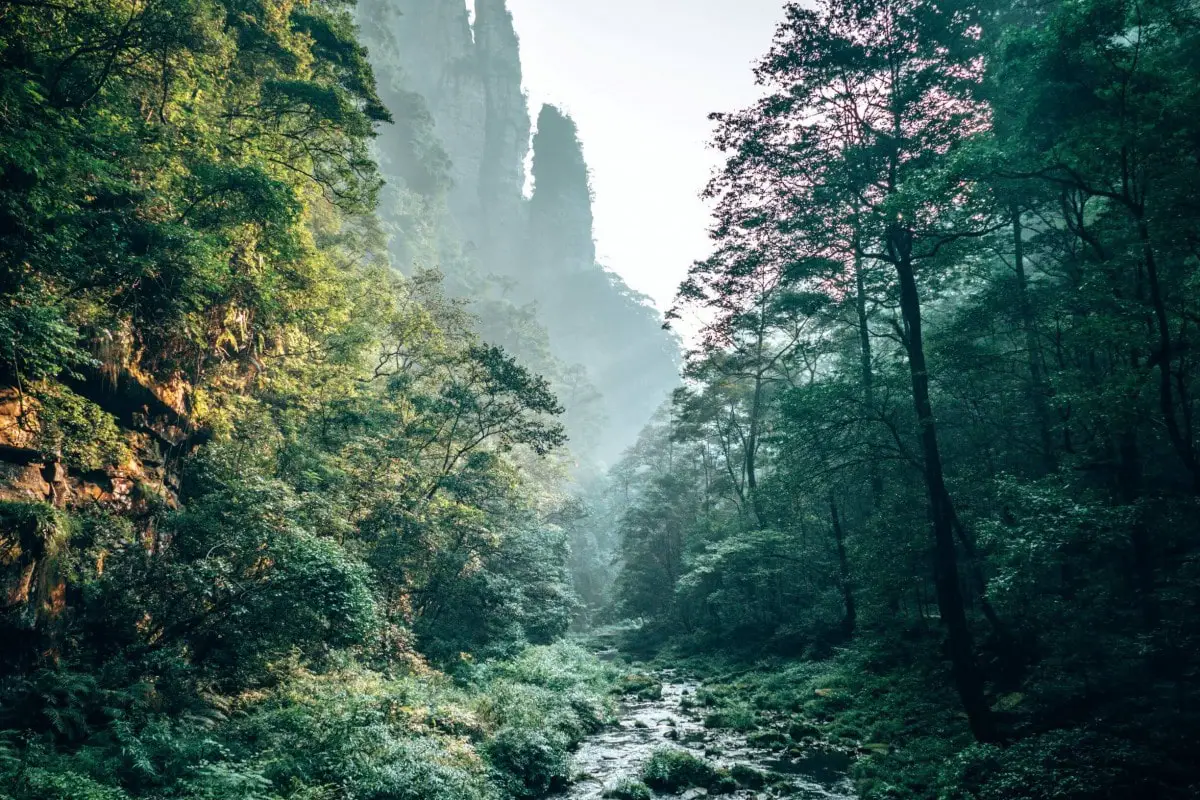
The walk should take around an hour, maybe a little longer, but a nice gentle way to get the leg muscles working again. You’ll also likely see a few monkeys during your walk.
Climb to the Huangshi Village
After you finish the Golden Whip Stream walk, you arrive into a large natural square, aptly named Oxygen Square, surrounded by lush forests.
At one edge of the square is a walkway up to Huangshi Village (it’s well signposted so you can’t miss it). Although it’s good to point out that this is an intermediate walk with a pretty long upward climb – around 5,000 steps to reach the summit – and nothing but stairs for a good 90 minutes.
Once you’ve reached the summit of the climb and had a chance to catch your breath head on a loop of the summit. You’ll see the other side of the Hallelujah (Avatar) Mountains from here. And it’s definitely a quieter part of the park, so a good place to avoid the crowds.
Note: if you’re not keen on the climb, you can instead take a cable car which costs 79 RMB per person (11.25 USD/9.00 GBP).
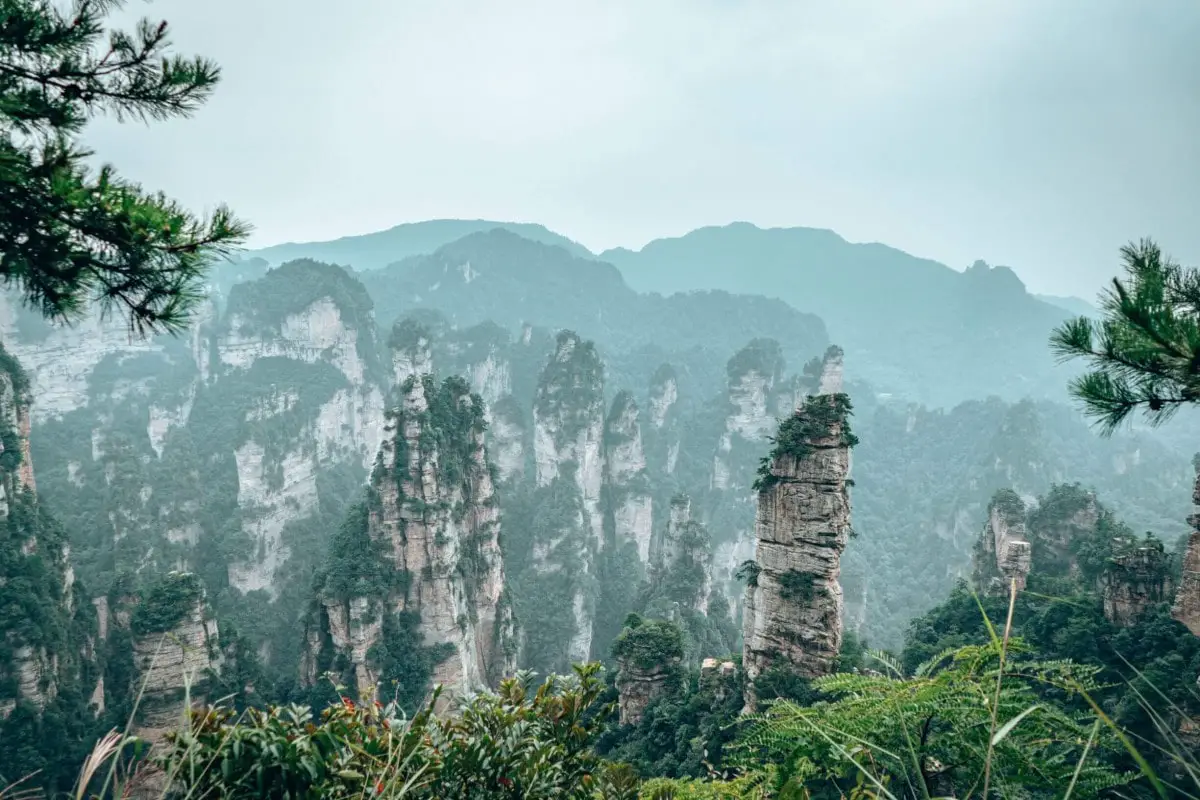
Once you’ve finished the loop, which will take you around 3 hours or so, you can then either walk back down (or take the cable car) back to Oxygen Square. The walk down is definitely easier, and quicker, taking around an hour.
And from Oxygen Square, head to the Forest Park Station and catch the bus back to Wulingyuan. There is an additional small fee for this service. Or if you have the energy, head back along the Golden Whip Stream and then the bus to the Wulingyuan main entrance.
Overall, you’ve probably walked the best part of 20km today so you might want to find somewhere in town to get a leg massage! We did and it was well worth it… there are a couple of places on the main street in Wulingyuan. They clearly know their audience!?
Day 13 Zhangjiajie to Shanghai
We’ve left today mainly for travel from Zhangjiajie over to Shanghai. But when you’ve arrived into this mega city – actually the largest in China at around 25 million people calling this home – head out towards the famous Bund area for the afternoon and evening!
Yu Gardens
Set just behind the Bund, Yuyuan or Yu Gardens is a beautiful tranquil ancient Chinese style garden. The perfect place to wander around amidst the crazy metropolis that is Shanghai.
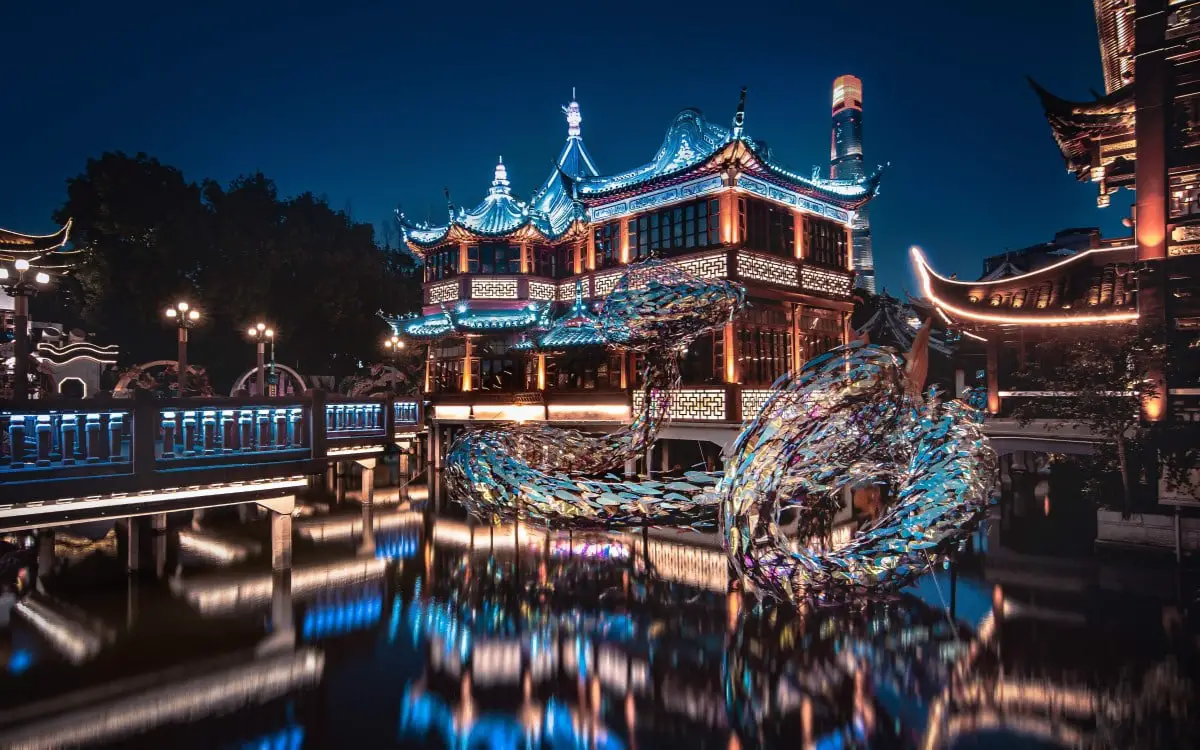
The Bund
And then onto the Bund, best seen as the day transitions into night. The Bund, overlooks the Huangpu River and shows off one of the best cityscapes in the country.
As the lights on the buildings start their daily dance, announcing the end of day, there is no better way to understand the beauty of Shanghai than walking along the waterfront promenade.
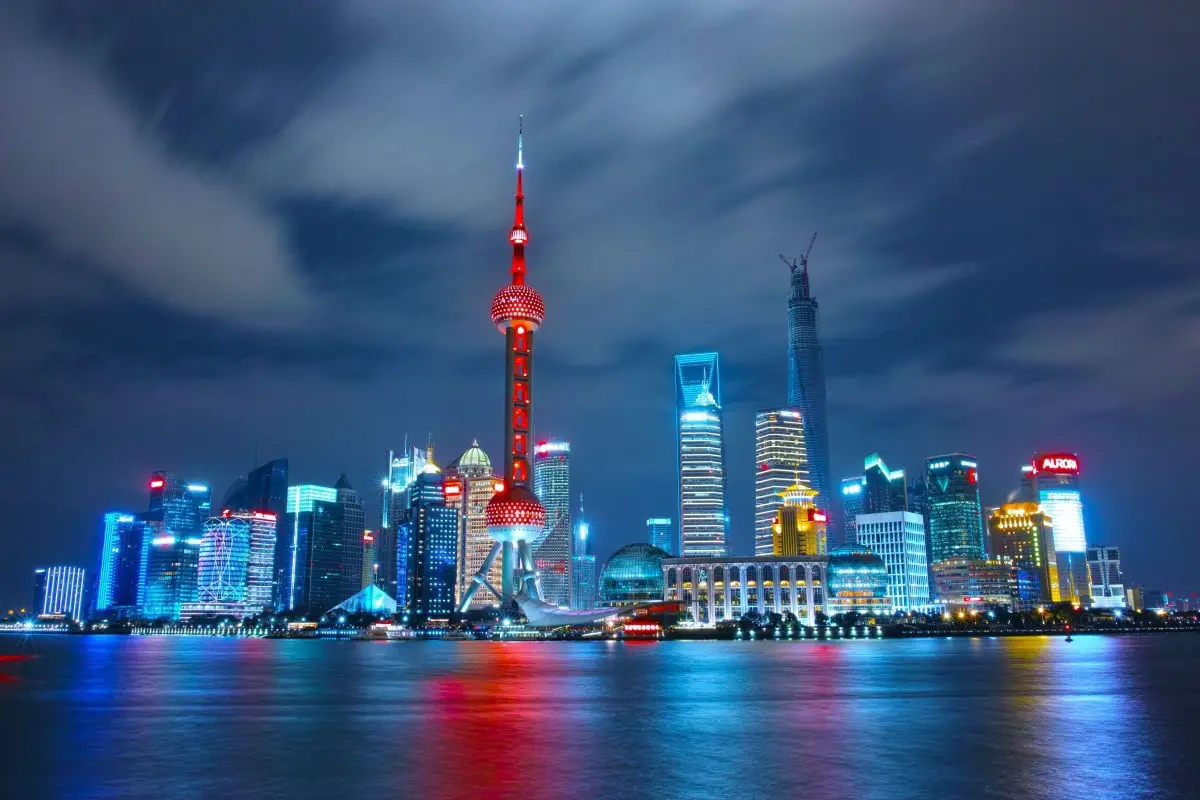
Note: The Bund is more than just the viewing platform and waterfront promenade. You can take in a walking tour of the historic colonial buildings in and around the old town. Here’s a link to more information on the walking tour. Or check out this guided tour option.
Getting from Zhangjiajie to Shanghai
Flight
Currently there are 2 daily direct flights making the 1500 km journey and taking about two hours. However, with timings, you may want to fly on the evening of day 12. Alternatively, you can take flights at a more reasonable hour, but these make stops and pushes the flight duration to around 5 hours.
Check out the latest options from Zhangjiajie to Shanghai with Skyscanner.
Train
We’ve heard that they are looking at a new bullet train service operating from Zhangjiajie which should speed up the service, but at time of writing, the train takes around 20 hours!
Where to stay in Shanghai
Budget: Located in the Jian’an district, close to the temple, one of the best budget accommodation options in Shanghai has to be the Campanile Shanghai Huaihai. Great reviews, modern clean rooms all at a great price.
Mid-range: Looking to stay out towards the airport and Disneyland? Then you have to check out the Hotel Coka Chuansha Metro. It’s a new 4* hotel with amazing rooms and great facilities.
Luxury: So, we had to add it in as we love the Cordis brand – they offer very high end 5* accommodation. And the Cordis Shanghai Hongqiao keeps those impeccable standards. Located near to the Hongqiao International Airport, it’s also got great access to all over the city; very handy for your transportation requirements.
Day 14 Shanghai
Shopping on Nanjing Road
Although I’m sure you’ll have picked up a few trinkets here and there around China, to start your final day of your 2 weeks China itinerary head out to Nanjing Road for some serious shopping! After all this is the equivalent of Fifth Avenue in New York or Oxford Street in London.
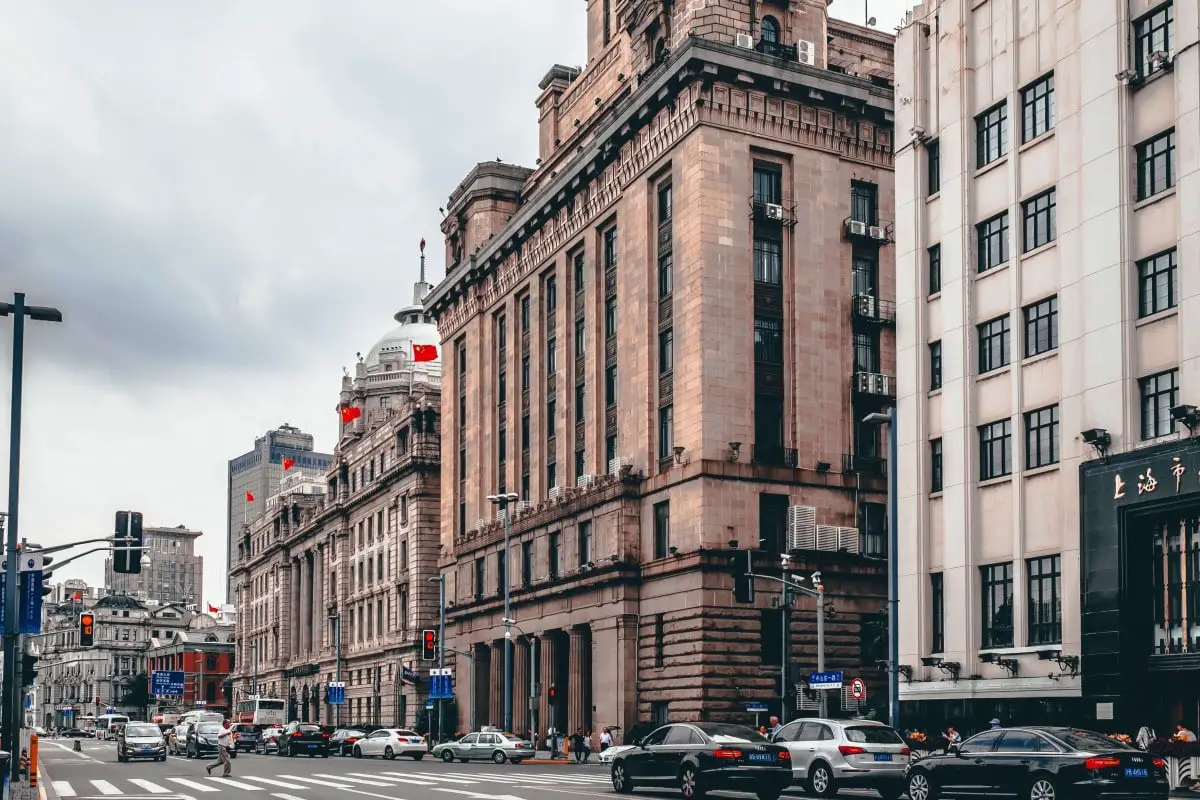
Location: Nanjing Road, Shanghai
Visit an Ancient Water Town
After you’ve had your shopping fix, and if you don’t manage to add Fenghuang into your China itinerary (read more on that below), then we’d recommend that you head out to one of the ancient water towns that surround Shanghai.
Consensus seems to be that Qibao is the best of them all to visit, given its handy location to the city – only 18km away. Although given its location it’s also worth noting that it can get very busy at weekends!
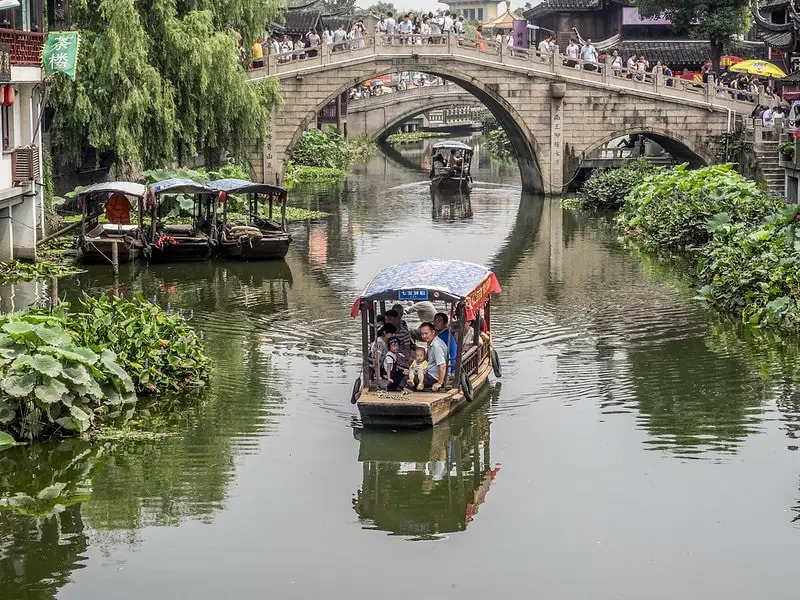
Photo Credit: Esin Üstün / Flickr
Getting there: Jump on Line 9 of the Shanghai Metro and jump off at Qibao Station. It’s only a short walk from there.
This ancient water town will provide the perfect place to get some traditional style photos of a bygone time, and it’s pretty famous for its delicious street food.
Conquer your fears on the Sky Walk
Although we’re not adrenaline junkies, just in case you didn’t get your fix with some of the height scaling in Zhangjiajie, why not try your hand at the Sky Walk at the Jin Mao Tower? At 340m above the ground, the glass walkway doesn’t sound too challenging. Until you find out that there are no handrails…!
Don’t worry though, you do have to wear a harness!
The 20-minute adrenaline rush will set you back 350 RMB if you book online in advance (49.50 USD/40.00 GBP)
Location: 88 Century Ave, Lu Jia Zui, Pudong
Open: 9.30am to 8.30pm
Bonus things to do in Shanghai
Ride the fastest train in the world
Heading to Pudong Airport? Then you’ll probably want to try out the Maglev Train which hits a top speed of 431km/h and covers the 30km distance in an astonishingly quick 8 minutes!
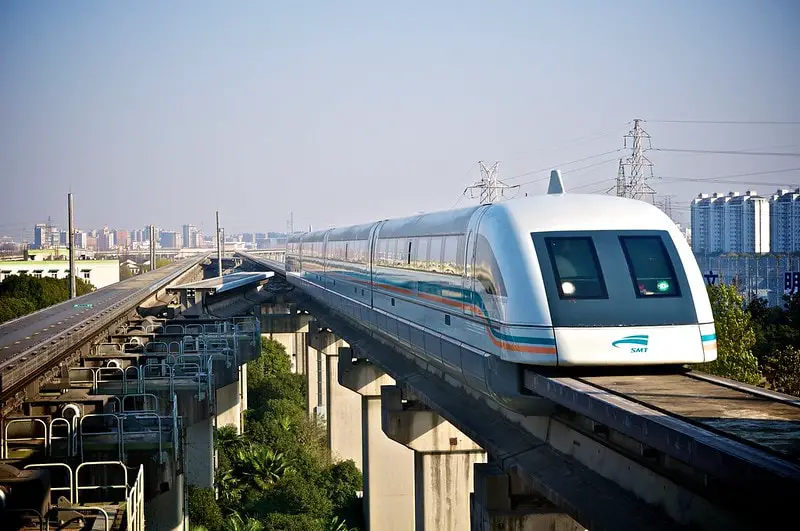
Photo Credit: Max Talbot-Minkin / Flickr
Shanghai Museum
One of the best museums in the country and a rival to the National Museum in Beijing, another option to add into your itinerary when you are around Nanjing Road is to visit the Shanghai Museum.
Location: 201 Renmin Ave, Ren Min Guang Chang, Huangpu
Open: 9.00am to 5.00pm
Disneyland Shanghai
One for the kids, or the kids in all of us. If you’re looking for another great all-day activity to add to your China itinerary, why not spend the day at Disneyland?
We didn’t realise that there was a Disneyland in Shanghai! Opened in June 2016, this resort has everything you’d expect from a Disneyland…
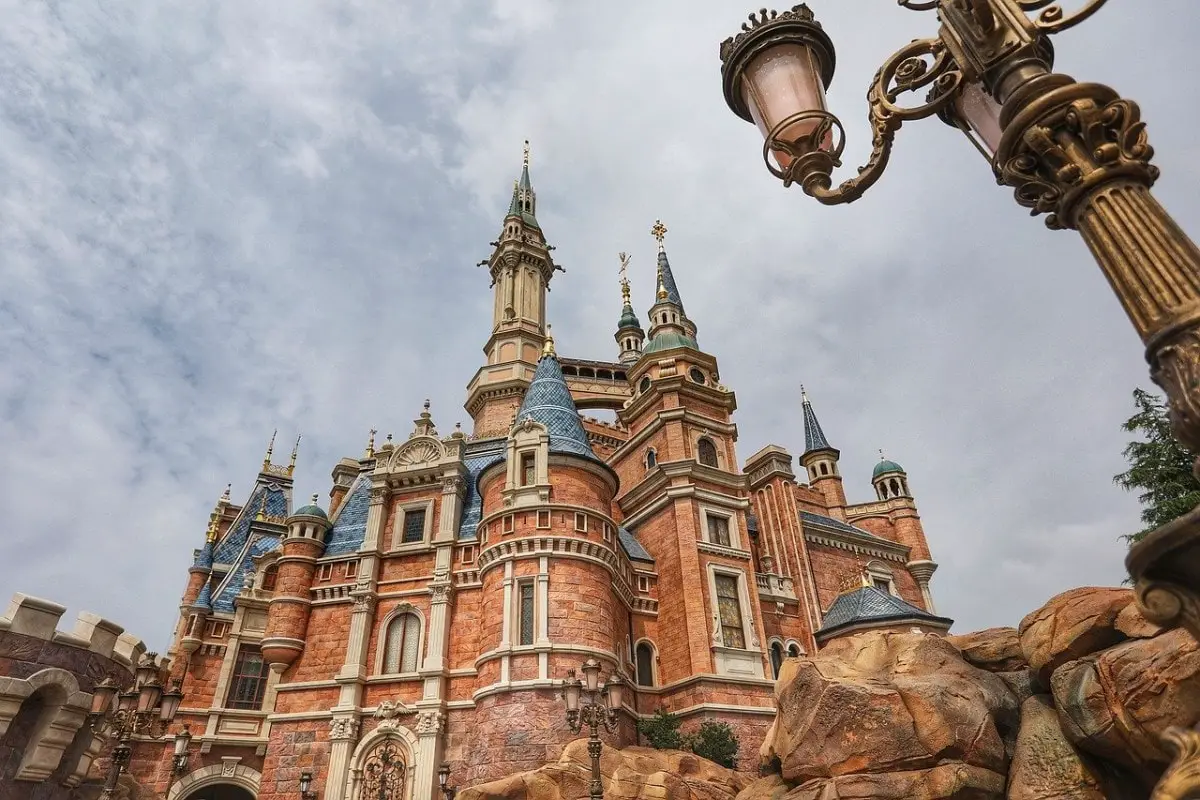
Two weeks China itinerary interactive map
Bonus places to add to your 2 weeks China itinerary
Guilin & Yangshou
It probably reminds us a lot of Ha Long Bay or Ninh Binh in Vietnam, or even Khao Sok National Park in Thailand: the beautiful rivers and floating limestone karsts of Yangshuo. This beautiful town is set on the Li River and you can do a number of boat tours down it (backpackers love the bamboo raft tours), to see lush landscapes and scenery flanking both sides. Actually its famous as the Li River is immortalized on the reverse side of the 20 yuan bank note!
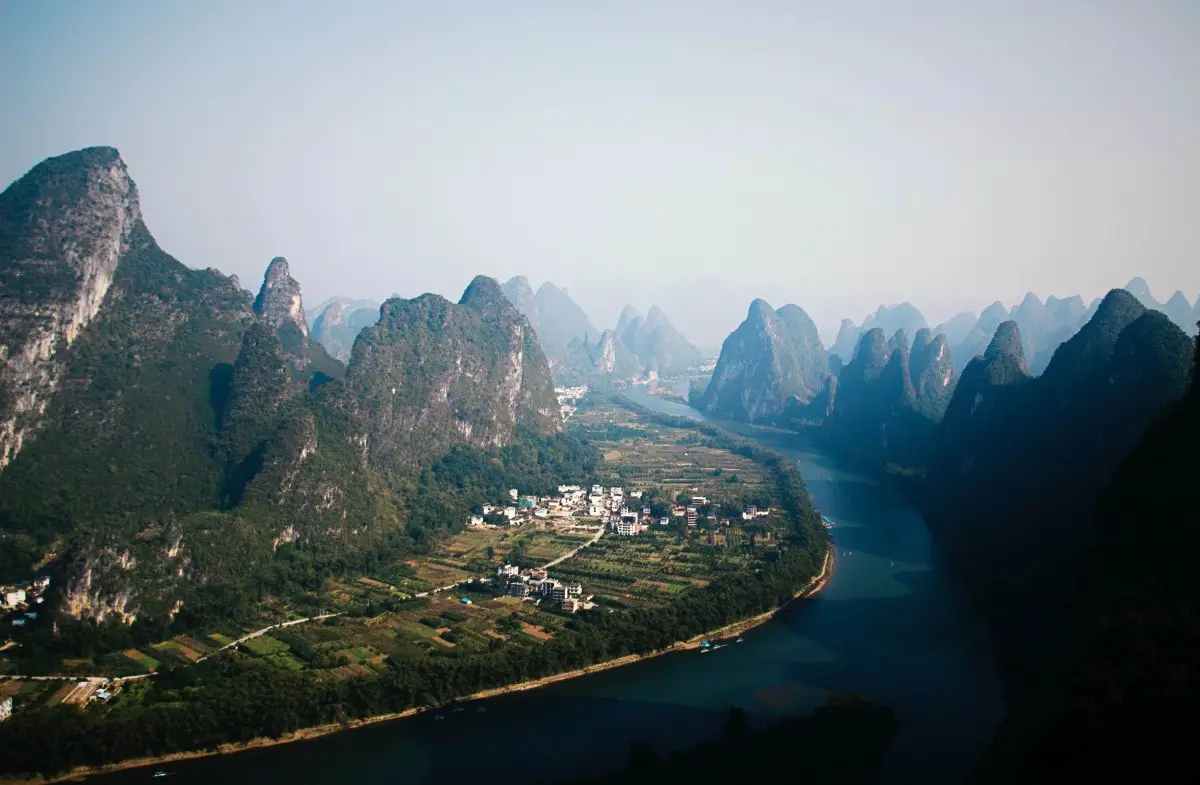
Yangshuo is best accessed through the larger city of Guilin, where you can also see the renowned Reed Flute Cave, the Sun and Moon Pagodas and the Elephant Trunk Hill.
Between both of those is also the area of Longsheng, legendary for the Longsheng Rice Terraces, also known as the Longji Rice Terraces.
Fenghuang
Now if you want to get a little bit off the beaten path, we suggest that you look at adding a trip to the Ancient City of Phoenix, Fenghuang onto your two weeks in China itinerary.
Very reachable (read a few hours bus ride from Zhangjiajie), this traditional Chinese city is like no other place that we experienced in our month in China. Think stepping stone bridges, wooden houses, and brick pagodas.
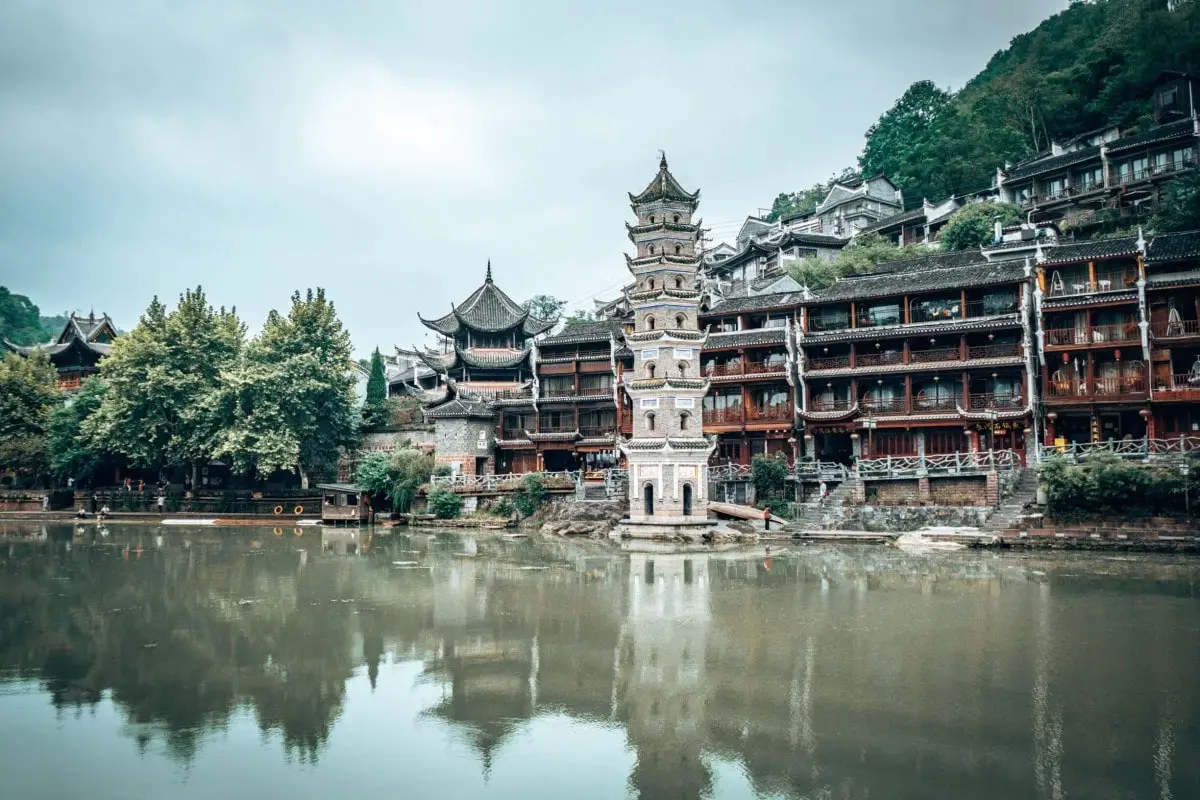
We met no tourists, had some of the strangest food of our lives, but would go back here in a heartbeat. Very much off the normal traveller’s route, this town is the perfect example of an ancient city – and definitely deserves at least a day of your time if you can add it to the itinerary.
Hong Kong
Although it’s had a pretty bad rap over the last couple of years from the unrest in the city, Hong Kong still offers plenty. With hotels at very low occupancy rates, it is definitely worth considering a trip to the city as part of your itinerary, with very cheap hotel rooms and quieter attractions.
This vibrant city would make a great place to start or finish your itinerary if you wanted something a little different. We’ve actually got a full list of everything to see and do in the city: check that out here.

Is 2 weeks in China enough?
Yes! If it’s your first time to China, or you’re looking to explore a little further afield than just trips to the main hubs of Beijing, Shanghai and Hong Kong then you’ll be able to explore quite a bit, with this two week itinerary.
However, we’d definitely say that this is a relatively whirlwind trip, trying to take in as many of the key attractions as you can and it’s good to note that you’ll be travelling quite big distances between the cities and attractions! If you’re happy with long train journeys and flights, then this isn’t an issue at all.
However, we’d still recommend that if you can, look to extend to 3 or 4 weeks! This will allow for a bit more of a relaxed itinerary, and also the opportunity to add in some of our bonus activities.
How much money do you need for two weeks in China?
Of course that depends, on both your travel style and budgets. If you are spending 2 weeks backpacking China, that will be significantly different to someone on a luxury travel budget. We found ourselves, very much in the middle, with a mixture of both hostels and hotels – but we also did every activity we could. Our budget was around £75 or $95 per day for the both of us.
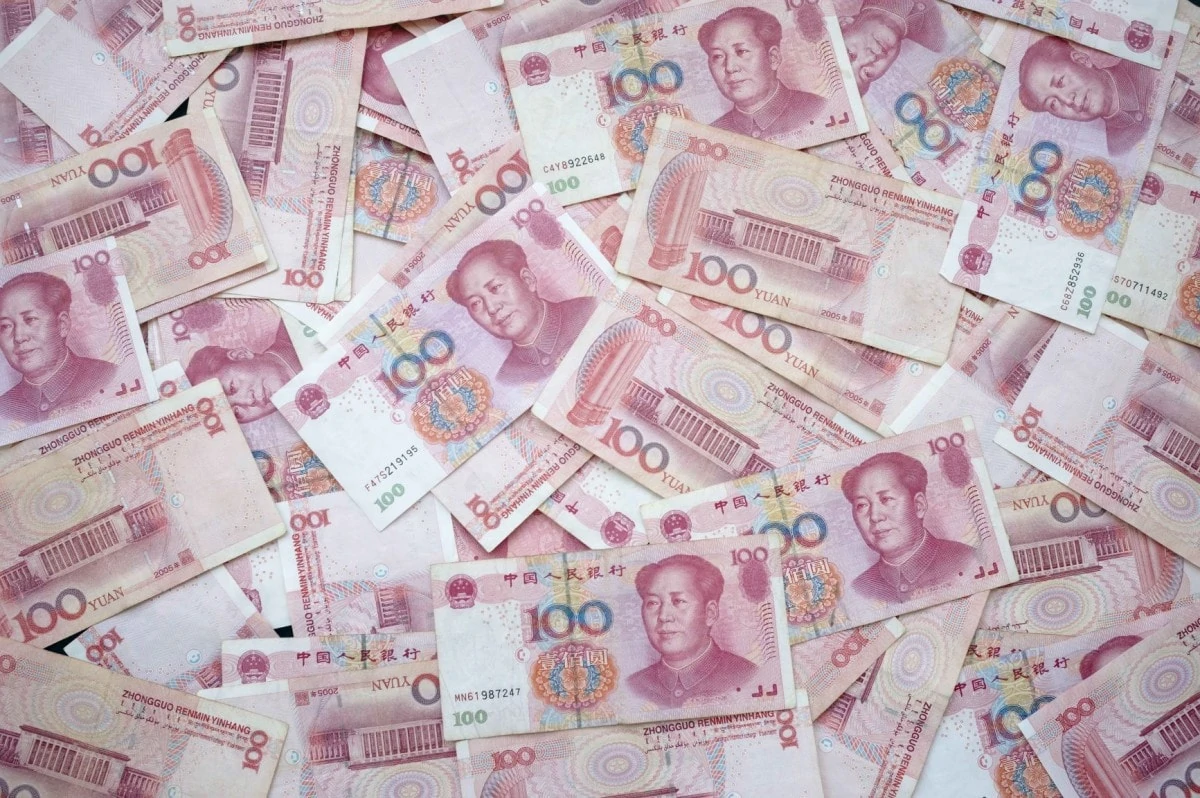
Getting your Visa for China
In all likelihood you’ll definitely need to get a visa to go to China – there are very few countries that don’t need one.
We won’t go into too much detail here about the requirements for getting a tourist 30-day visa, but it is quite a bit of admin! And there are certain fees to processing the visa, but these also change based on where you apply. We are British and South African passport holders and applied in Vietnam!
We had to prepare the following documentation:
- Visa application form, which you can download here
- 2 passport-sized photos
- Copy of passport. They also kept our passports for 5 days
- Copy of travel insurance policy
- Copy of bank statements (we did 3 months)
- Overall itinerary – we created an Excel spreadsheet with cities, dates and hotels
- Flights in and out of the country
- Hostel/hotel reservations – try to make sure these clearly state your name
- Cash for your visa fee – when we did it in Vietnam it had to be in USD and crisp notes, but this will depend on where you are doing it from
If you’re looking instead for a company that will help out with visas and handle most of the difficult things for you, then have a look at the iVisa service.
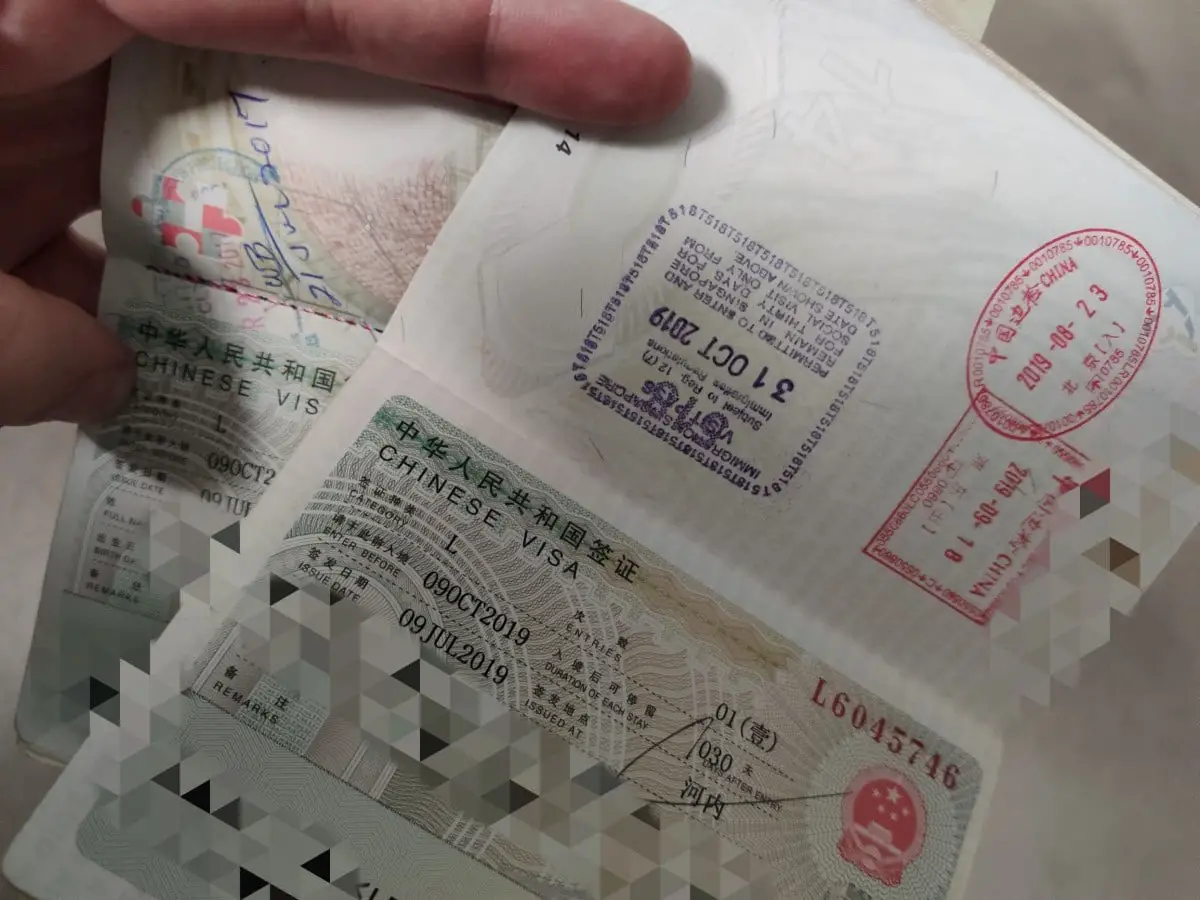
Travel Insurance for China
Make sure that you’ve got good travel insurance for your trip! Apart from needing one for the process of getting your visa, don’t travel without one.
If you’re keen to have a look at a really good provider, we recently used Safety Wing and were really impressed by their product.
When is the best time of the year to go to China?
The best time to visit China is (especially when considering our two week China itinerary) in the spring or autumn months.
The summer months of June through August can be extremely hot, and with July and August being summer holidays in China, the busiest from both a transport and accommodation perspective.
So, we’d recommend late April and May, which will bring cleaner spring skies, along with new floral blooms. Or September and October, especially if you’re keen to see the Great Wall at its most picturesque.
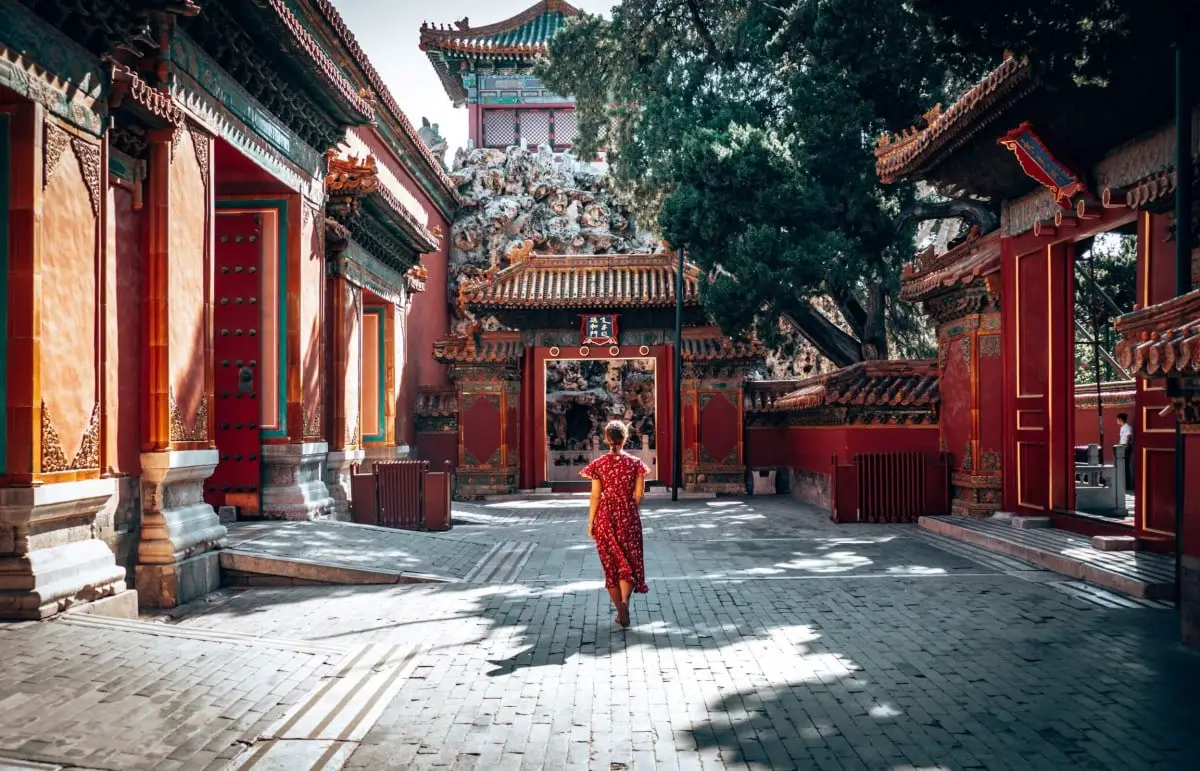
In saying that, we visited from mid-August to mid-September and although sometimes it was pretty hot, it was fantastic. And we’d also consider going back in winter, where icy and snowy landscapes would create amazing photos, not to mention that attractions would be at their quietest and we’re super keen to at some point visit the Harbin Snow and Ice Festival!
Getting a Sim Card and Staying Connected
If you’re keen to stay connected throughout your time in China, then there are a few options and considerations!
Sim Cards
First of all, you have the option to purchase a 30-day sim card from one of the 3 main providers: China Telecom, China Unicom or China Mobile. We’d especially recommend doing this if staying for longer than two weeks! The cost at time of writing is about 100 RMB (14.15 USD/11.40 GBP) for a Sim with 10GB data.
You can usually get a sim card at the airport, who are pretty used to travellers requesting these, however, we did it in a store and found it relatively easy.
Note: we’ve read that China Telecom sims aren’t compatible with non-Chinese made phones, so you might want to consider this.
GlocalMe
Now, one of our favourite gadgets, and something we don’t ever leave home without. The GlocalMe is a phone sized portable wifi device where you can buy data packages for countries, regions or even global plans.
If you’re travelling longer time, do yourself a favour and get one! You can even add in local sims so can get cheaper data rates too.
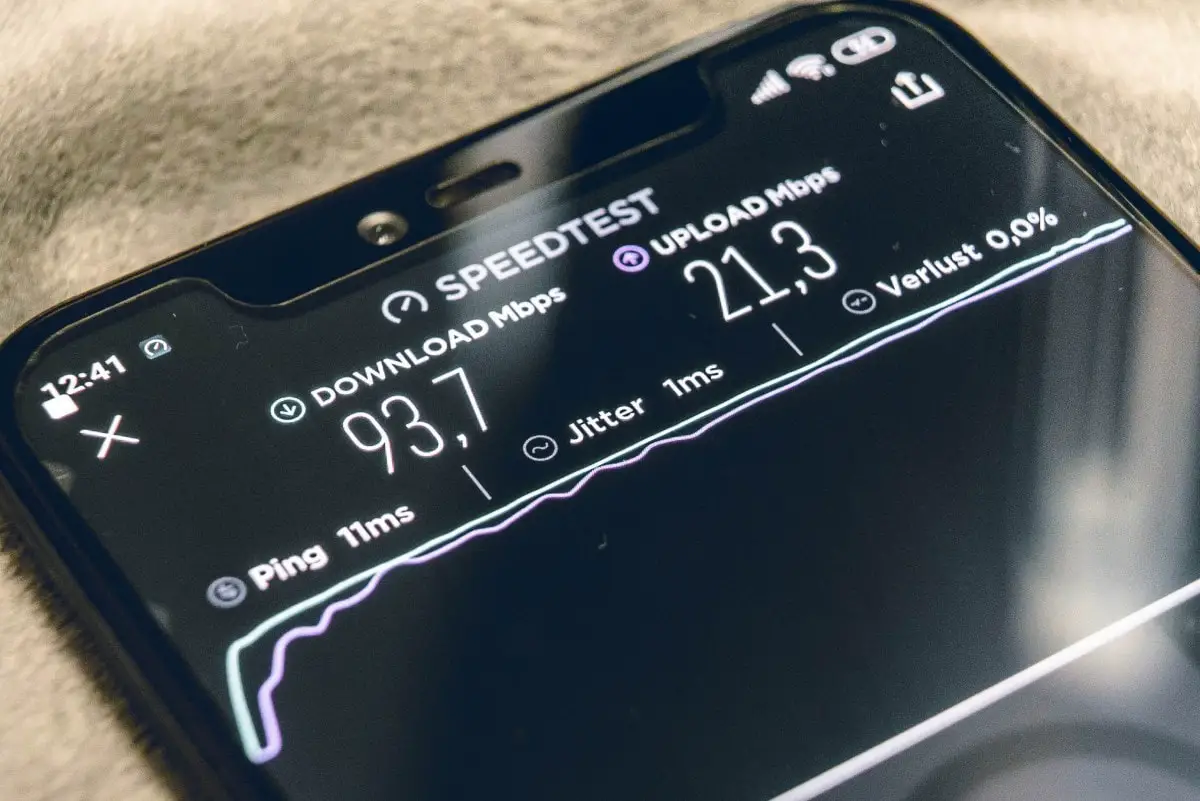
VPN
And last, but by no means least, you have to get a VPN if you want to stay connected in China! The great firewall of China will stop you accessing most of your usual apps, including Google, Facebook, WhatsApp, Instagram etc… so without one you’ll feel pretty cut off from the outside world.
We’d highlighly recommend you get ExpressVPN – we had this alongside the other global leader, NordVPN and overall Express constantly performed better in China.
Essential Apps for China
So, you’ve got internet (and a phone), and signed up for a VPN before you head to China, but what are the absolute must-have apps for making the most out of your time in China?
We’ve handily also put together a whole article on apps for China here. But as a short summary, in our opinion, the absolute essentials are:
Travel
As mentioned above, if you’re keen to get out and explore the cities and happy to try out the Metro, you’ll definitely need Metro Man in your pocket. Google/Apple
More interested in walking the cities? Or even for trekking the Great Wall? The best option is our favourite, Maps.me. Download offline maps, and off you go, you’ll not get lost!
Need a taxi, make sure that you download DIDI, China’s answer to Uber. But make sure that you download from the US stores before you arrive, or you won’t have an English version!
Accommodation
We were a little surprised to find out that Agoda had way more options in China than its competitors… so if you’re looking for the best deals and options, check them out.
Translation
An absolute essential for your travels in China… English isn’t widely spoken. And although Google doesn’t work well without the VPN, Google Translate seemed for us to be ok.
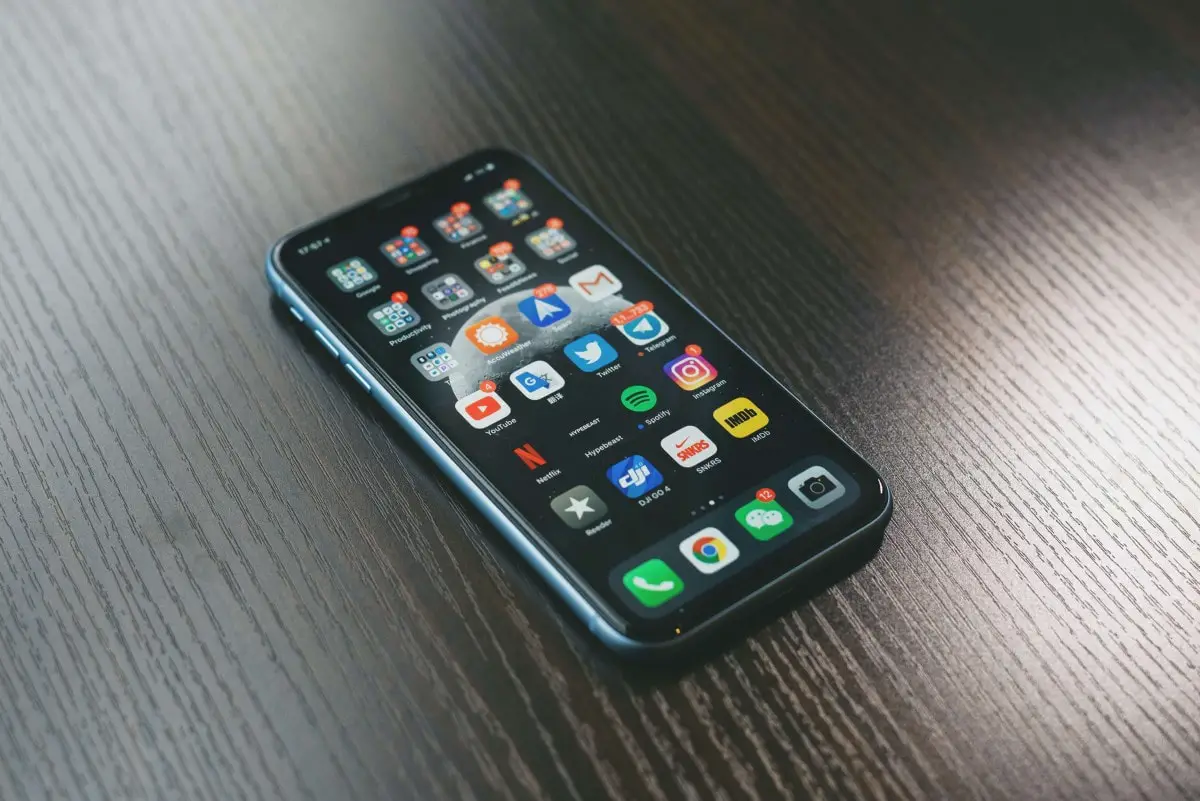
Social
So, if you have your VPN, then you’ll still be able to access Facebook, Instagram and WhatsApp, although these seem to be painfully slow. But it is worth downloading WeChat, as everyone in China uses it. So, whether it’s to chat to fellow travellers, locals you meet, or contacting hotels, you’ll need it. (Google/Apple).
What camera equipment and other gear do we use?
We’re living proof that you don’t need the most expensive gear to travel the world and take good photos. Here are some of our must have items that make it into the packing list for all our travels.
- Main Camera: Panasonic Lumix FZ1000
- Drone: DJI Mavic Air – Fly More Combo
- GoPro: Hero 7 Black
- GoPro Dive Case: Go Pro Housing
- GoPro Case: Smatree GoPro Carry Case – Small
- Packing Cubes: Eagle Creek Packing case
- Backpack: Osprey Farpoint 70
- Powerbank: Anker Powercore
- Phone: Xiaomi Mi 9
- Hard drive: Transcend Slim Storejet 2TB
- Laptop: Lenovo IdeaPad 720s
- Headphones: Bose Quiet Comfort 35
- Wifi Hotspot: GlocalMe G4
Want to save this for later? Why not pin it…


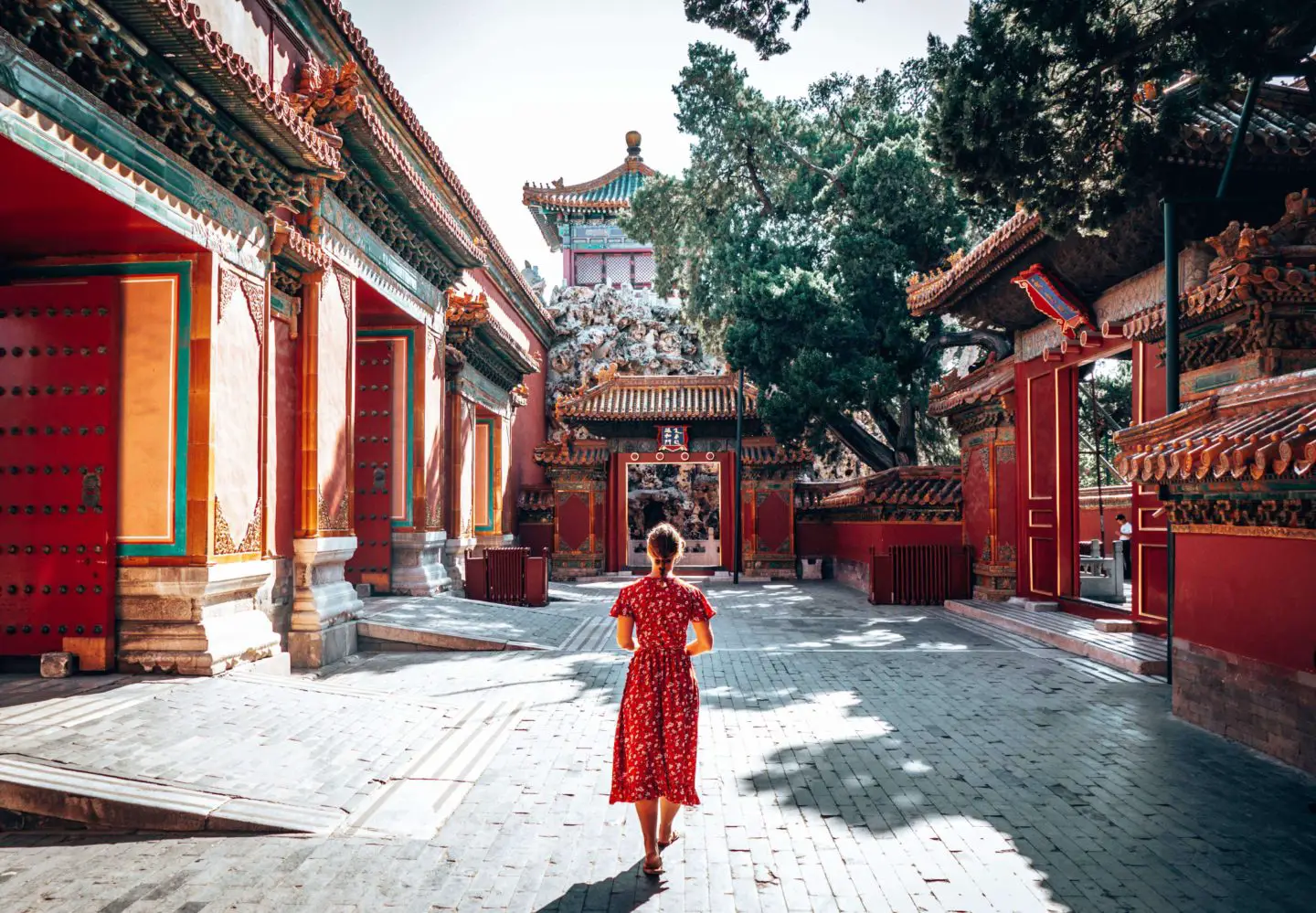
Awesome list, cheers!